2016 BMW 340i xDrive: What's It Like to Live With?
Read the latest updates in our long-term road test of the 2016 BMW 340i xDrive as our editors live with this car for a year.
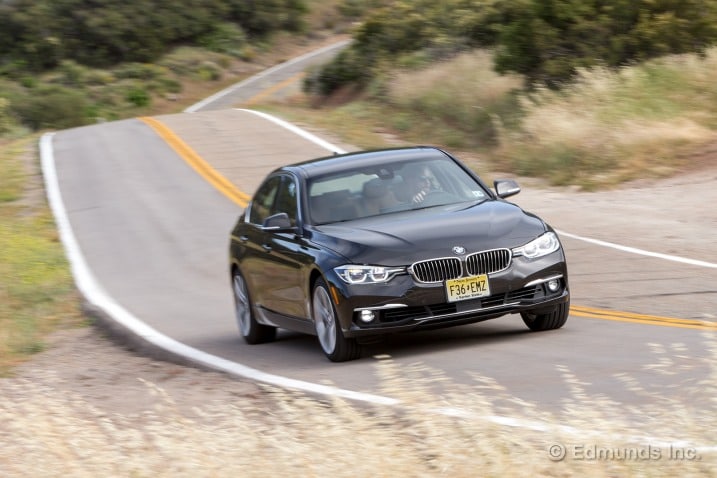
What do you want to know about?
- Introduction
- Who Needs the 5?
- Performance Tested
- Great Transmission, But ...
- Clean Dashboard Design
- Whoa, Wait, How Fast Is It?
- I Prefer the M Sport Steering Wheel
- Adaptive Cruise Control is Just OK
- Optional Rear Sunshades are a Great Feature
- Classically Clear Gauges
- First Fuel Economy Update
- More Engine Than You'll Ever Need
- Will the Luggage Fit?
- Front Cameras Foil Ambushes
- Oozes Competence
- Easy-to-See and Unobtrusive Blind-Spot Indicators
- Fuel Economy Update For June and July - City Driving Drags It Down
- A Very Potent 320 Horsepower
- How Well Do Child Safety Seats Fit?
- First Service Performed, But We'll Have To Go Back
- What Do You Want To Know?
- Head-Up Display Is Pretty Neat
- Answers from the Road
- Can Freeze You Out in the Middle of Summer
- August Fuel Economy Update - Back in Balance
- A Better Handle on Door Design
- Monthly Update for October 2016
- Our $60K 3 Series Is Missing Something
- Monthly Update for November 2016
- Monthly Update for December 2016
- Monthly Update for January 2017
- Monthly Update for February 2017
- Monthly Update for March 2017
- Disappointing Dealer Service for Tire Repair
- Monthly Update for April 2017
- Monthly Update for May 2017
- Wrap-Up
Introduction
What Did We Get?
Compact SUVs are moving off dealer lots as though their cargo holds are packed with free bacon, but they haven't pushed sedans into irrelevancy just yet.
To the contrary, even as those tall wagons gain popularity, the longtime benchmark among entry-level luxury sedans — the BMW 3 Series — is enjoying a streak of record sales over the past few years.
The 2016 BMW 340i is BMW's attempt to further stoke that success by introducing a range of enhancements that reside mostly under the skin. Chief among them is an all-new, more powerful twin-turbocharged inline six-cylinder engine, but there are also revisions to the suspension and steering said to make it sharper without sacrificing comfort.
Manual transmissions now have a rev-matching function for smoother downshifts, while the automatic transmission has become more efficient, resulting in an upward bump in fuel economy. Subtle styling tweaks have been added inside and out, and options availability has been rejiggered, too. There are now automatic remote updates for the navigation system and a new, optional Track Handling package.
Rather than being made new from the pavement up, this 3 Series is incrementally altered in the pursuit of performance, agility and efficiency. A year with the 340i in our long-term fleet will reveal whether these measures make a tangible difference or if they're too modest to notice.
What Options Does It Have?
The 2016 BMW 3 Series is available as a sedan with rear-wheel drive or all-wheel drive, or as an all-wheel-drive wagon.
Once you decide how many driven wheels you want, the engine comes next. Sedans are available in three gasoline-engine guises (320i, 328i, and 340i) or as a diesel (328d). The bottom-floor 320i sedan comes with a 2.0-liter turbocharged four-cylinder engine and starts at $34,145 whether you choose a six-speed manual or eight-speed automatic transmission.
We skipped right to the newly minted 340i (which replaces the outgoing 335i) because we wanted to sample the all-new 3.0-liter, 320-horsepower inline six-cylinder engine. And as much as we love manual transmissions, the eight-speed automatic is the more popular choice among 3 Series buyers, so it got the nod. Finally, our test car has xDrive all-wheel drive because, well, we've never had an AWD 3 Series sedan in our long-term fleet.
Base price of the 340i xDrive is $48,795. That comes with LED headlights and foglights, keyless entry, 10-way power front seats, a power rear sunshade, premium audio and a moonroof.
From there, our test car was equipped with a heaping helping of option packages: the Technology package ($2,750; includes navigation and head-up display), Driver Assistance Plus ($1,700; includes side and top view cameras, blind spot detection); Driver Assistance package ($950; includes parking alert and a back-up camera); Lighting package ($800, includes automatic high beams) and Cold Weather package ($800; includes heated steering wheel and front and rear seats). Stand-alone options include adaptive cruise ($1,200), rear manual side window sunshades ($575) and enhanced Bluetooth smartphone integration ($350). Its Saddle Brown Dakota leather and dashboard added $1,450, while the Jatoba Brown Metallic paint accounted for $550.
All up, our 2016 BMW 340i xDrive rang in at $59,920, which is about as expensive as a 3 Series gets these days.
Why We Got It
Every automaker has been gunning for BMW's 3 Series for nearly as long as there has been a 3 Series. It has provided an enviable combination of comfort, style, performance and driving enjoyment for decades.
In the meantime, the competition has introduced all-new models like the 2016 Mercedes-Benz C-Class and 2017 Audi A4 that have ratcheted up the pressure on BMW.
With the 2016 model's dose of revisions, we aim to determine if the 340i is a worthy successor and a convincing foil for its newly invigorated crosstown rivals. BMW says there is no downside in comfort for its enhanced driving character, and we were impressed with our earlier drive in the 2016 3 Series.
Over the next 12 months and 20,000 miles, we'll determine if the new 340i withstands closer scrutiny by commuting in it, taking it on road trips, bending it through our local canyons, running our instrumented performance tests on it and more.
Read along on ourlong-term road test blog to see daily updates on its progress.
The manufacturer provided Edmunds with this vehicle for the purpose of evaluation.

I'm possibly not the first person on the intertubes to point this out, but my, how large today's "compact sport sedans" have become. Here's our long-term 2016 BMW 340i parked behind an "E39" BMW 5 Series — the (perfectly styled) one from the late '90s and early '00s. I'll be dog-darned if they're not about the same size.
This calls for some numbers.
Zoinks! I am at least somewhat dog-darned. Our 340i is 182.4 inches long, while Wikipedia and other sources say the E39 sedan was 188 inches long. A 5.6-inch delta is not consistent with "about the same size," I must admit.
But check this out: the current 3 Series has a 110.9-inch wheelbase versus 111.4 for the E39, so that's basically a wash. It's also a fraction of an inch wider. And according to none other than Edmunds.com, the 340i has 35.1 inches of rear legroom — nearly an inch more than the E39.
I'm concluding from this that the 3 Series is in fact functionally the same size as the 5 Series used to be, even if it's shorter nose to tail. Which raises the question:
Why would you buy a 5 Series, anyway?
For me, the answer is clear and involves a certain 445-horsepower twin-turbo V8. But unless you're into that sort of thing (and money), it's not an easy argument to make.
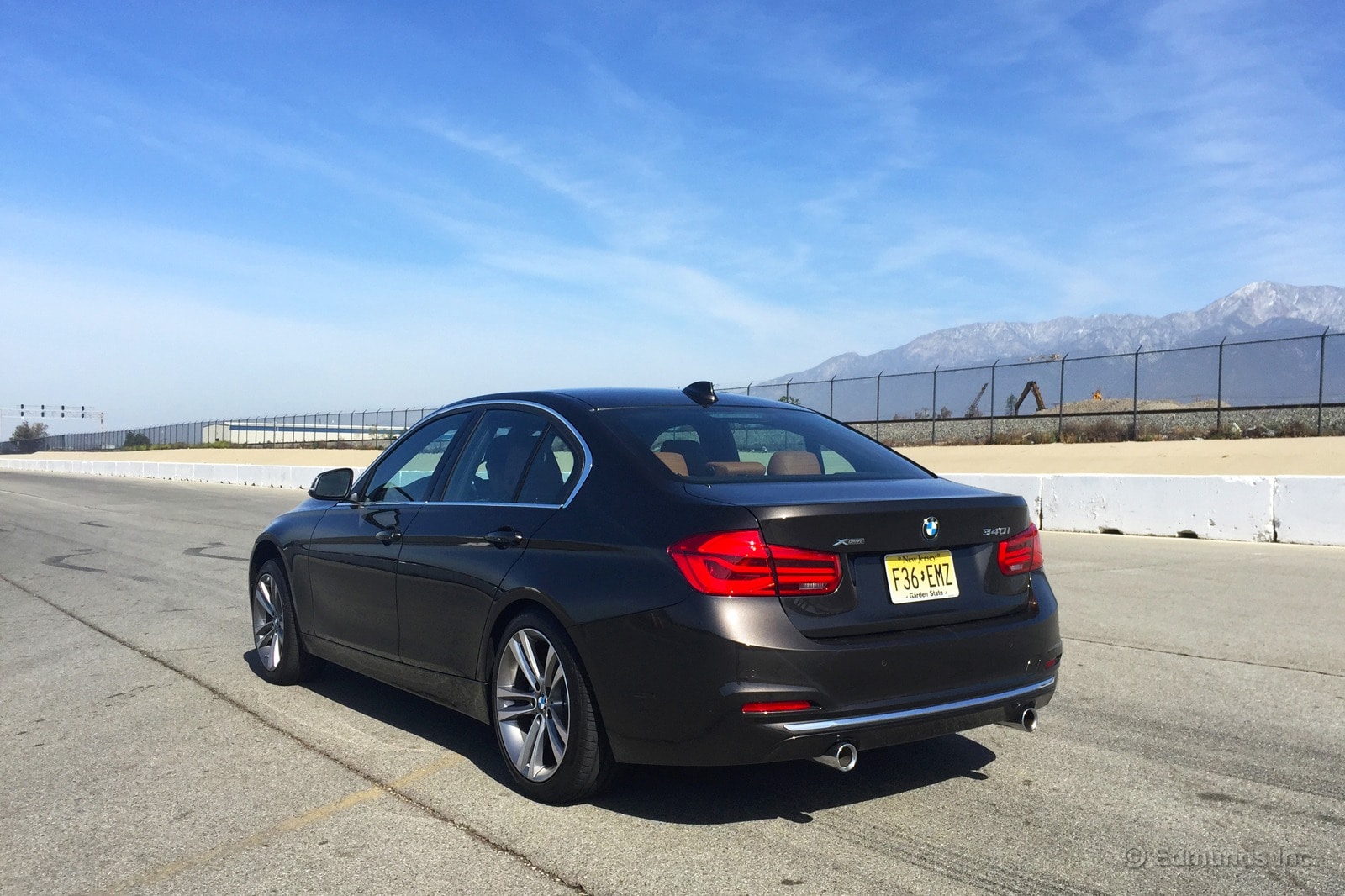
Our newest long-term car, a 2016 BMW 340i, replaces the smaller, sportier 2015 BMW M235i in our hearts, minds and test fleet. We opted to go full luxury with regards to options with the 340i, but that doesn't mean all of the inherent BMW sportiness has been tuned out. In fact, the 340i posts better numbers than some purpose-built sports cars.
The 3 Series has always been one of the best performing sedans on the market. Read ahead to see our breakdown of the latest one.
Vehicle: 2016 BMW 340i xDrive
Odometer: 1,709
Date: 4/26/2016
Driver: Jonathan Elfalan
Price: $59,920
Specifications:
Drive Type: All-wheel drive
Transmission Type: Eight-speed automatic
Engine Type: Turbocharged and intercooled inline-six cylinder
Displacement (cc/cu-in): 2,998/183
Redline (rpm): 7,000 indicated/7,500 actual
Horsepower (hp @ rpm): 320 @ 6,500
Torque (lb-ft @ rpm): 330 @ 1,380
Brake Type (front): One-piece ventilated discs with four-piston fixed calipers
Brake Type (rear): One-piece ventilated discs with single-piston sliding calipers
Suspension Type (front): MacPherson strut with double lower pivot, fixed dampers, coil springs, stabilizer bar
Suspension Type (rear): Multi-link rear suspension, fixed dampers, coil springs, stabilizer bar
Tire Size (front): 225/45R18 91V
Tire Size (rear): 225/45R18 91V
Tire Brand: Pirelli
Tire Model: Cinturato P7
Tire Type: Asymmetrical run-flat all-seasons
As tested Curb Weight (lb): 3,831
Test Results:
Acceleration:
0-30 (sec): 1.8 (w/TC on: 2.2)
0-45 (sec): 2.9 (w/TC on: 3.6)
0-60 (sec): 4.4 (w/TC on: 5.3)
0-60 with 1-ft Rollout (sec): 4.1 (w/TC on: 4.9)
0-75 (sec): 6.4 (w/TC on: 6.4)
1/4-Mile (sec @ mph): 12.7 @ 108.3 (w/TC on: 13.2 @ 107.3)
Braking:
30-0 mph (ft): 30
60-0 mph (ft): 118
Handling:
Skid Pad Lateral acceleration (g): 0.87 (0.84 w/ESC on)
RPM @ 70 mph: 1,600
Comments:
Acceleration comments:
This engine is magnificent as usual, despite being new, with peak torque created as low as 2,000 RPM and sustaining all the way to redline. The inline-six is silky smooth and is always willing to rev to its limiter. The 8-speed automatic is equally commendable, executing shifts responsively, smoothly and with virtually no slop. It will hold gears in manual shift mode as well with Sport+ selected (otherwise will shift when you touch redline). Our fastest acceleration was achieved without launch control, as launch control limits engine rpm to 2,500 and this model has all-wheel and doesn't have to worry about wheelspin. To activate launch control, one must select Sport+ drive mode with sport shift selected. Launch control will not activate if sport shift is not selected. Then, while pressing the brake with your left foot, floor the accelerator with the right. A small launch control icon with activate in the gauge cluster if you did it right. As mentioned before, there is no wheelspin on launch, so not using launch control and letting the RPM rise slightly higher (to about 2700) is advantageous for the launch. Shifts occur automatically in this mode and as stated before are smooth and don't deliver much kick during shifts as some performance automatics do. The acceleration times, however, speak for themselves.
Braking comments:
The brake pedal travel is on the long side and is a little soft as far as what you'd expect in a sport-biased BMW. Initial stopping distances weren't very impressive, but the ABS system is quiet and only nosedives mildly which cuts down panic-stop drama in an emergency stopping situation. Strangely, the stopping distance was best on the very last (sixth) run. As far as stability, this BMW skewed slightly off center initially, consistently to the left by a small degree, under hard braking. It's not something that would alarm the average driver, but some competitors like the Audi A4 provide a little more stability in this instance. Under normal driving, the brakes provide a nice progressive bite and are very easy to modulate. We also detected no odor after all braking runs were complete.
Handling comments:
Skidpad:
Around the skidpad, the 340i's weight balance feels pretty evenly split with the DSC stability control system turned off. Even with the all-wheel-drive system, the BMW handles more like it's rear-wheel drive, as the front tires don't slip and scrub much at all. With DSC on, the character is still pretty good, except the computer will sometime chop the throttle aggressively if it begins to sense the tires slipping, preventing a smooth continuous pace around the skid pad. In both situations it feels as though there is some torque vectoring at work, possibly through using the rear inside brakes, but I haven't been able to confirm this. As much as the 340i feels like it's willing to turn in at a slightly unnatural degree, ultimately the peak road grip isn't all that high. The steering has excellent weight, and a good amount of feel from the electrically assisted steering rack. It's one of the more natural-feeling electric steering systems I've experienced in a while. Very impressed with BMW, I think they got it right with this car.
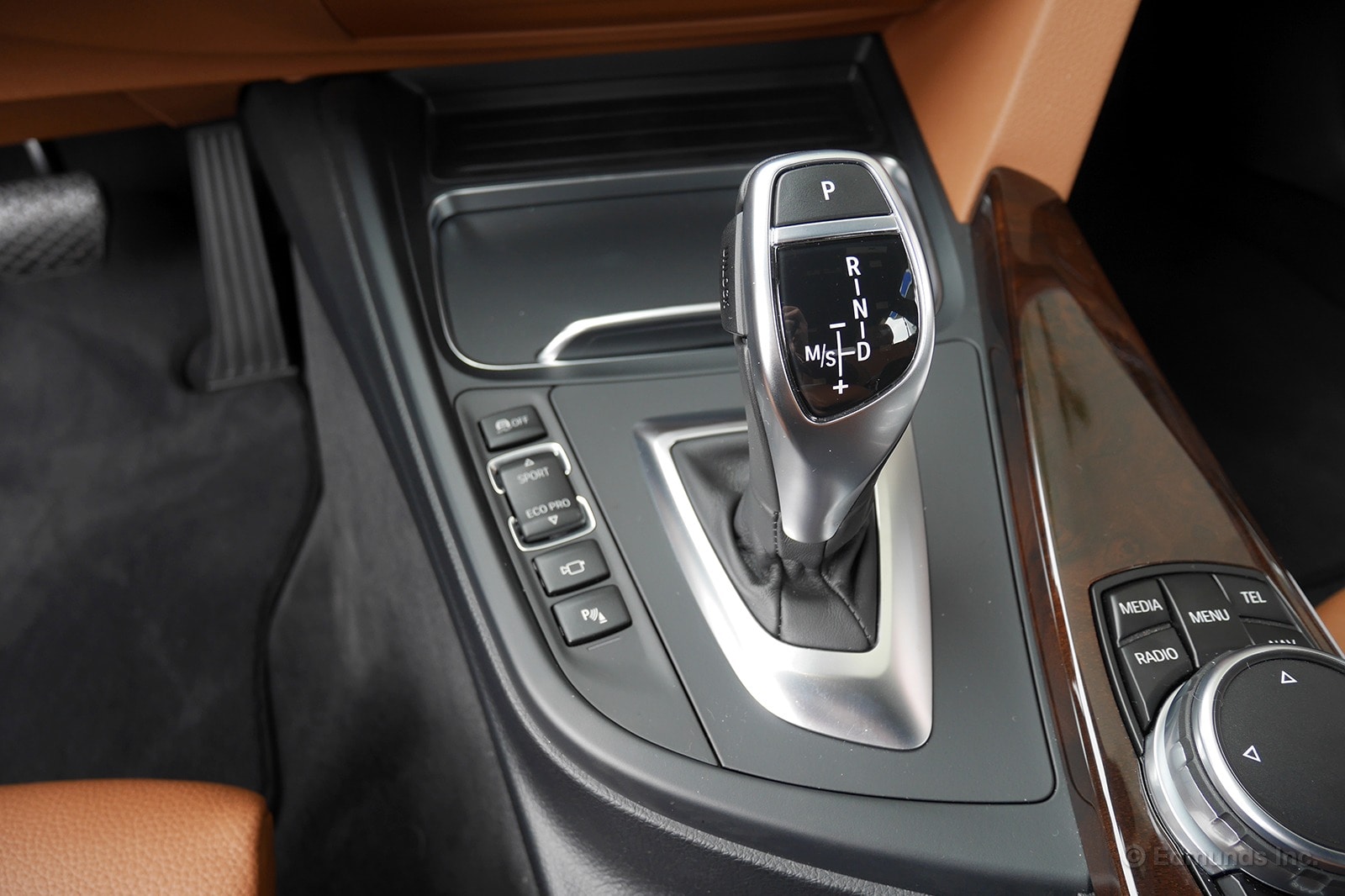
The eight-speed automatic transmission in our 2016 BMW 340i is excellent. Like virtually every BMW model in which it resides, this transmission is refreshingly quick to respond to throttle inputs, happily downshifts at moments when other gearboxes would be slow on the trigger, and is just generally less hell-bent on saving fuel despite the driver's acceleration intentions.
Despite all that, however, it's the wrong transmission. I'm sorry (not sorry), but I want the no-cost optional six-speed manual transmission in a 3 Series.
Even as the 3 has grown softer in the suspension and less acute in the steering over the years, it still feels right when there are three pedals in the footwell. I drove the 340i's predecessor — the 335i — with the six-speed last year and I walked away wondering why I'd really want or need to drive anything else. The well-rounded current 3 Series is still a driver's car, the big turbo six-cylinder still represents its best foot forward and the manual is the best way in which to control it. Not only does the manual gearbox enhance driver engagement, but both the shifter and clutch are pleasantly easy to use. It doesn't kill you in traffic and even with my murderous West L.A. commute, I'd still get the stick.
So, as much as I thoroughly enjoy our new long-term 340i, there won't be a time behind the wheel when I won't instinctively put my left foot to the firewall or wish for that classic BMW shifter whenever I want a lower gear.
I suppose it's just hard to teach an old dog new tricks.
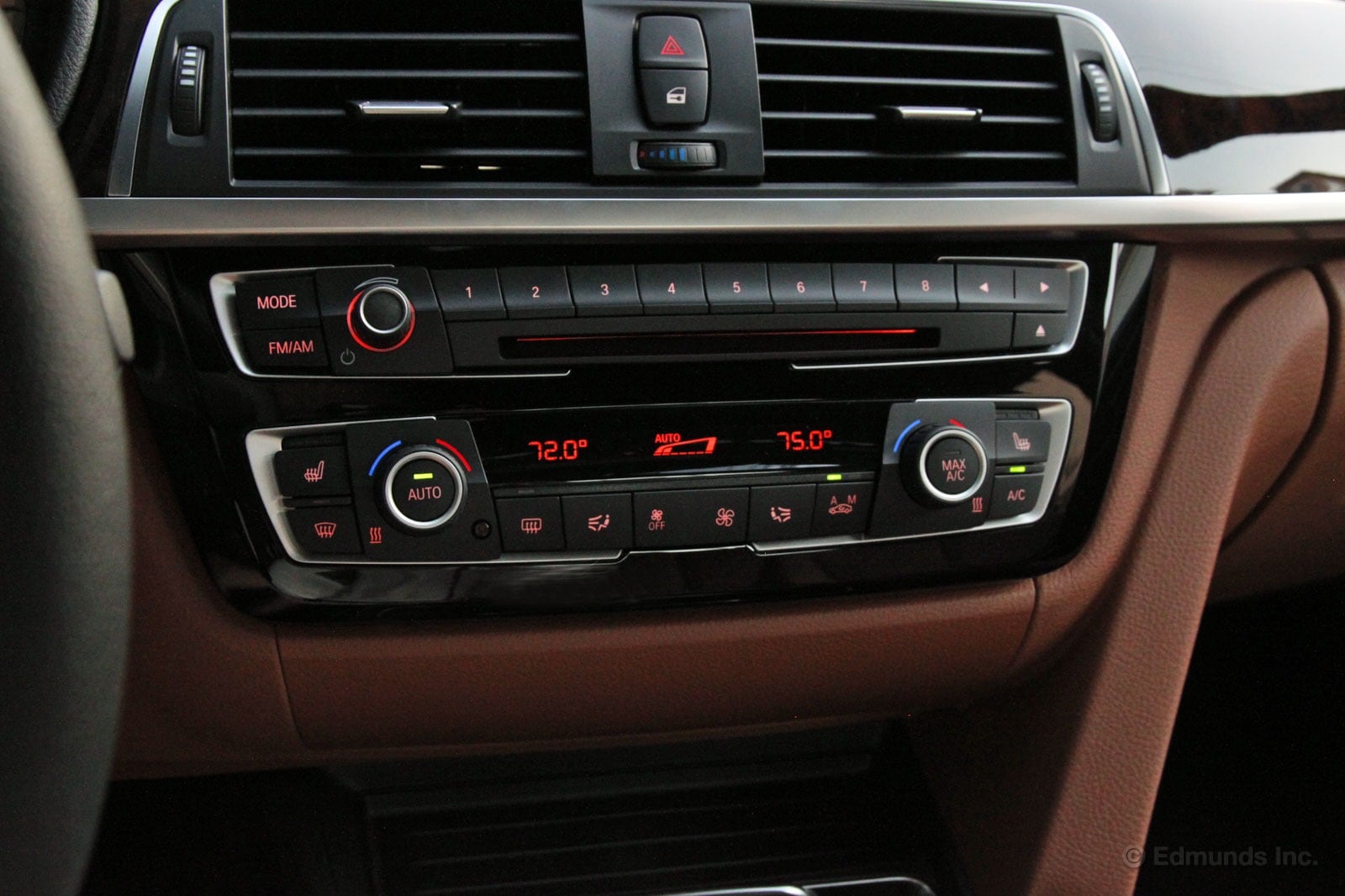
This is an odd thing to say about a sport sedan like our 2016 BMW 340i, but one of the first things I noticed was the simplicity of the dashboard design. Not the powerful new engine, not the striking leather seats, but the dashboard. Here's why.
With all the technology baked into modern cars, the dashboard often gets littered with so much clutter that it takes away from the overall design of the cabin. You get beautifully sculpted seats, striking door trim and then — a dashboard that looks like a missile launch command center.
BMW has been guilty of this in the past, but this 3 Series has reformed its ways. The continued evolution of iDrive helps since it bundles so many functions into a single controller.
Beyond that, there's BMW's simplified climate control layout and the use of universal memory buttons. The latter is an interesting way of simplifying unrelated functions. Instead of having memory buttons for just the radio presets or pre-defined phone numbers, these buttons can be programmed for any number of functions.
For instance, you can program the number "1" button to automatically set the navigation to your home address. So even if you're listening to the radio, hitting the "1" will engage the navigation system. The next two or three buttons could be your favorite radio stations while the next couple after that could be your most frequently dialed phone numbers.
It would take some time to get used to the setup, but once you did it would make everyday driving that much easier. Probably won't happen much in this car since it goes from one editor to the next on a daily basis. Still it's a nice way to bring various functions together in a simplified way.
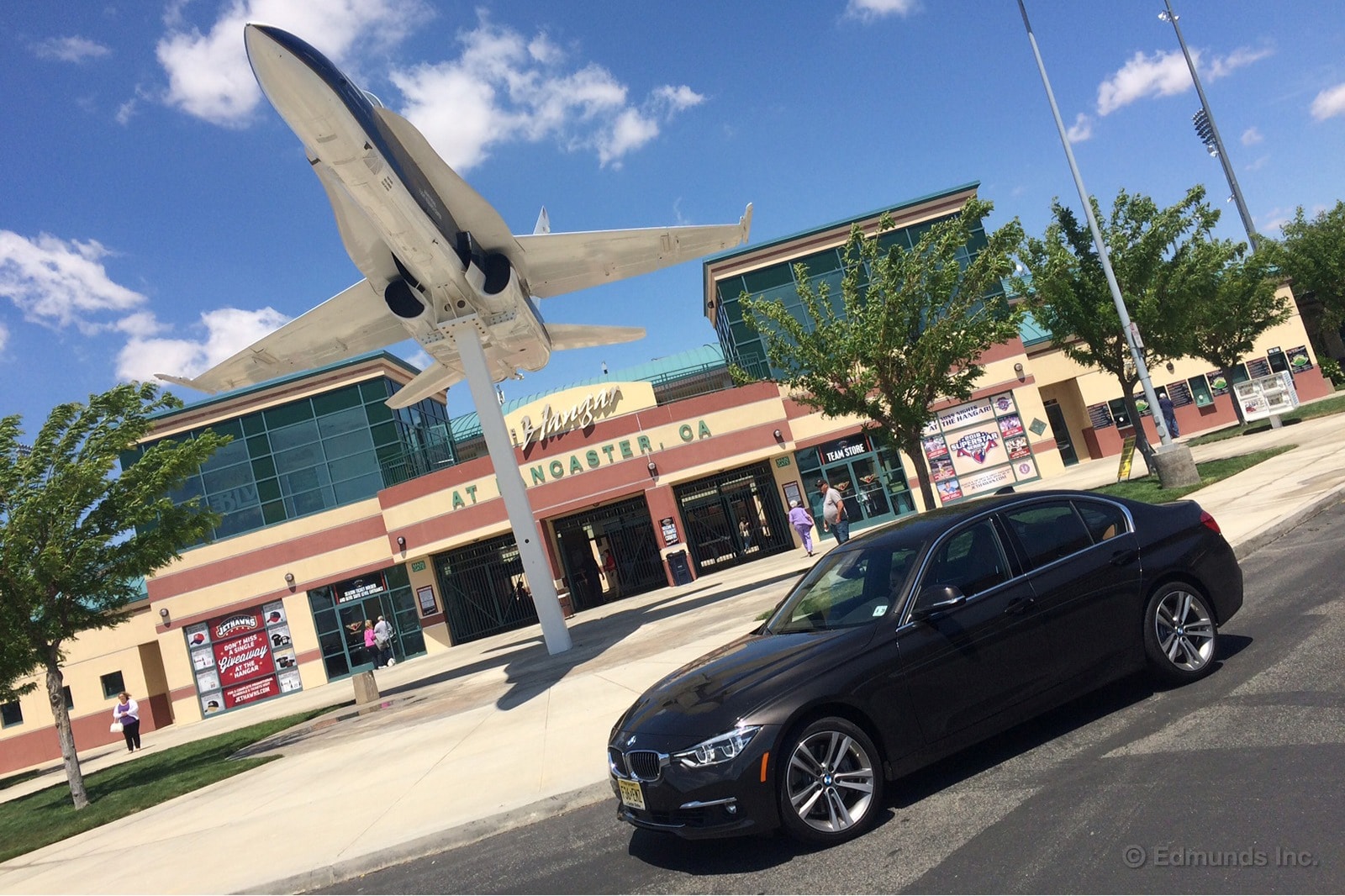
You might have seen the recent post that details our new long-term 2016 BMW 340i's performance at the test track. Hopefully, you noted its 0-60 time: 4.4 seconds. Or, 4.1 seconds with 1 foot of roll-out, which is how enthusiast publications would report it.
Either way, holy Bavarian cow. 4.4 seconds! Allow me to put that into perspective.
The last BMW 335i we tested, this car's predecessor, went from zero to 60 mph in 5.4 seconds (no roll-out). This is not a matter of apples to apples, however, as that car had rear-wheel drive and a manual transmission, both of which reduce 0-60 times. An equally equipped previous-generation 335i did it in 5.2 seconds.
What about the M3? Well, we've only tested an M4, which is just marketing mumbo jumbo for "M3 Coupe." But, guess what? It went from zero to 60 mph in ... wait for it ... 4.4 seconds. Sure, it had a manual and rear-wheel drive, but you can definitely say a 340i can be just as quick as an M4. Wow.
Now, the last actual M3 we tested, a 2013 coupe with the otherwise awesome, dearly departed naturally aspirated V8 could only manage a 0-60 run of 4.9 seconds. That one actually had the DCT automanual. It was also one of the best cars I've driven in the last five years.
Now, let's venture outside the BMW realm. Just pulling some cars out of the air, the Mercedes-AMG C63 S and its 503-horsepower turbo V8 hit 60 mph in 4.1 seconds without roll-out. A Camaro SS with an automatic did it in 4.2. Our old long-term Porsche 911 Carrera S Cabriolet could "only" manage 4.7.
Of course, all of those had rear-wheel drive, which certainly says something about all-wheel drive's traction advantages when trying to lay down the best numbers at a drag strip.
What does all of this mean for the BMW 340i xDrive? It's shockingly quick and our particular car represents its best case scenario. Should you get rear-wheel drive and/or the manual, you will be slower off the line.
However, having a slightly slower 340i is highly unlikely to detract from your enjoyment of the car since you'll realistically be unable to tell anyway. I would still get the manual, for I would appreciate the increased driver engagement more than the smug knowledge I'm just as quick as that guy's M4. I would also happily pick that aforementioned old M3 even if that guy and his turbocharged inline-6 could smoke me off the line.
Numbers are an important means of comparison, and in this case are eye opening, but the way a car actually feels and drives tells a far more important story.

If my memory serves me right — and it usually doesn't — our 2016 BMW 340i is the first BMW I've driven with the standard sport steering wheel. With the exception of our long-term i3, which had a unique wheel, every BMW I've driven in my two-and-a-half years at Edmunds has been either a true M car or was equipped with the M Sport package.
Among other upgrades, the M Sport package adds an upgraded steering wheel that feels fantastic. The standard sport wheel just doesn't measure up. If I was in the market for a BMW, I would have to get the M Sport package for the better wheel.
The M Sport wheel feels substantially more padded and thicker in my hands than the standard wheel. The buttons are shaped like arrows pointing outward from the center, which is more appealing in design and feel than the boxy layout on the normal wheel.
The shift paddles are more prominently displayed with the M Sport's slimmer wheel, which emphasizes the performance-oriented look. Finally, the smooth leather wrapping on the M Sport feels expensive, while the bumpy leather on the regular wheel feels kind of cheap, like a really high-quality urethane.
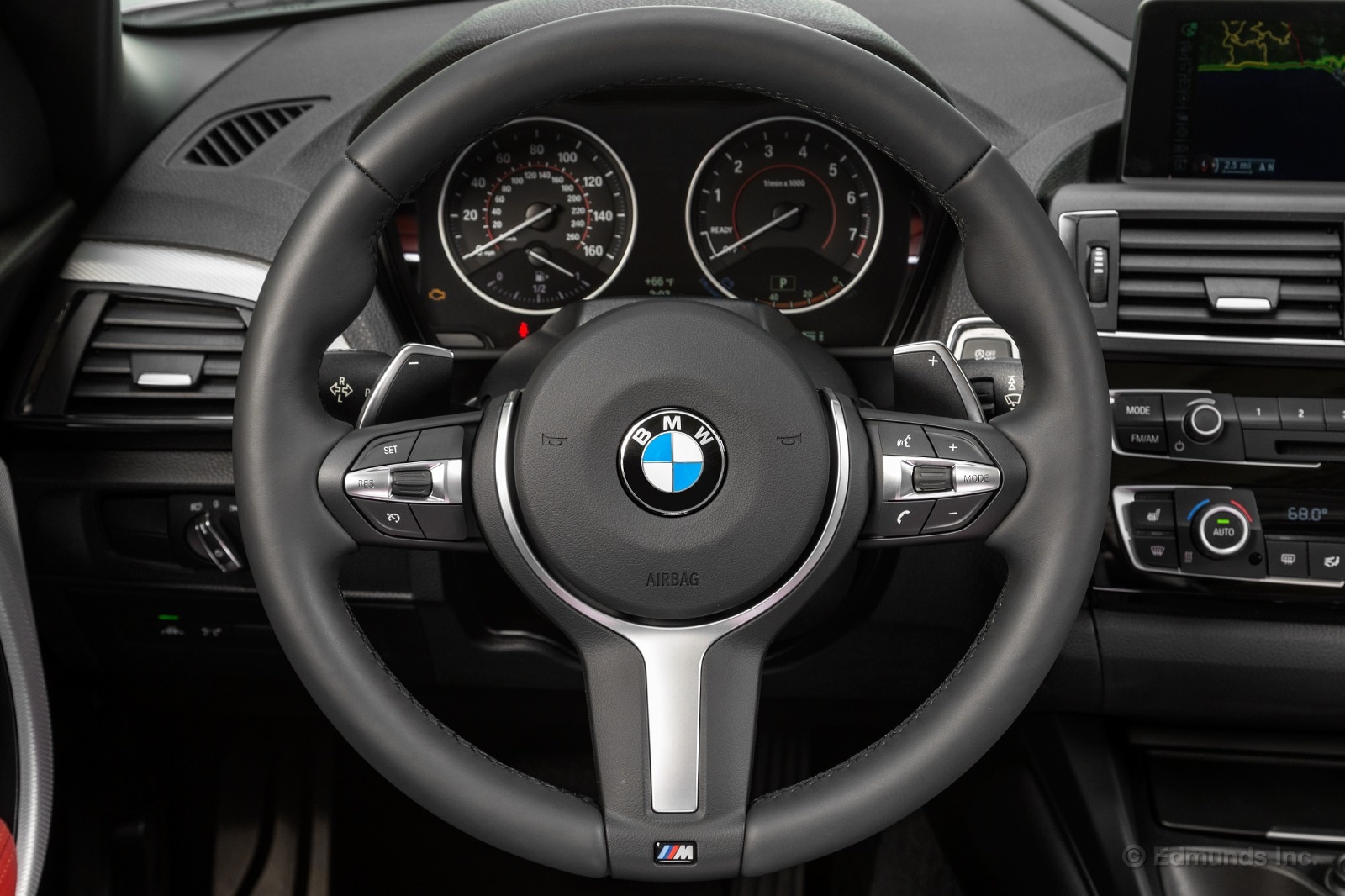
Caption: The M Sport steering wheel in our old long-term 2015 BMW M235i.
Our goal with the 340i was to get the most luxurious version of the 3 Series that we could. Unfortunately, that meant leaving the box for the M Sport package unchecked and its excellent steering wheel absent. The normal wheel is merely OK, it doesn't live up to the quality promised by a 3 Series that flirts with a $60k price tag. For me, the M Sport package is a must, and not just because it's required to unlock Estoril Blue. The superior steering wheel makes the 3 Series feel like the sport sedan it is.
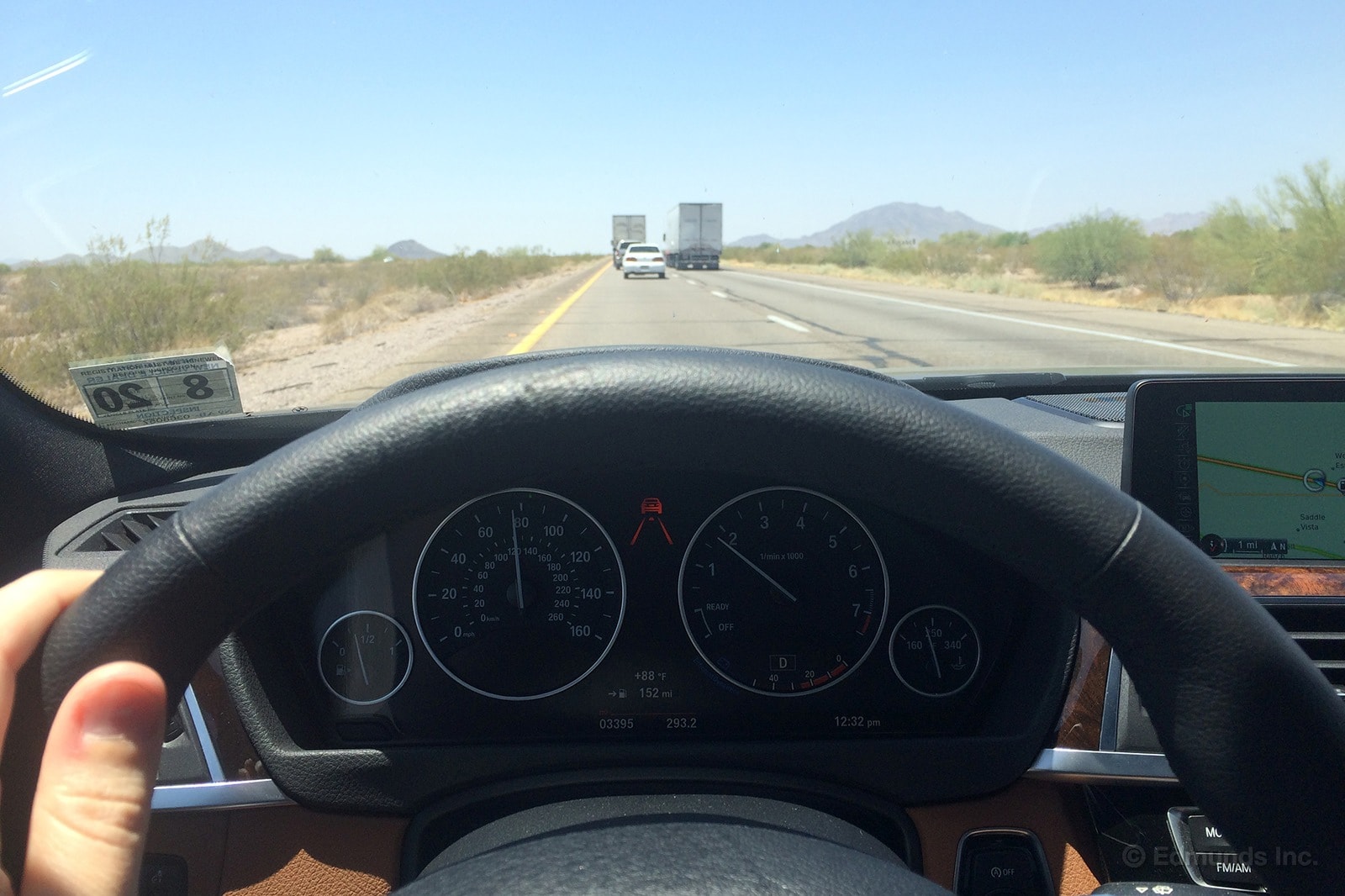
A great adaptive cruise control can make a road trip a far more pleasant experience, reducing fatigue and limiting the aggravation caused by left lane hogs and drivers who can't seem to figure out how to maintain their speed.
On the other hand, a bad adaptive cruise control system can infuriate, leaving too much space to the car ahead, slamming on the brakes when it isn't necessary and being slow to speed up once again.
In my experience, Mercedes-Benz's Distronic Plus is one of the best systems of its kind while Honda's adaptive cruise control is one of the least helpful. The "Active" Cruise Control system in our 2016 BMW 340i is somewhere in between.
Its biggest fault is the amount of space it leaves to the car ahead. Even at its closest setting, there is an unnaturally large gap that readily encourages one and all to cut in front of you. Doing so results in a demonstration of the next issue: overly aggressive braking.
The better systems in Mercedes and Chrysler brands leave a much tighter gap, so much so that I'll use a longer gap setting. However, should slower-moving traffic appear or cut you off, those same systems ease off the accelerator or gently kiss the brakes as a good driver would.
And yet the BMW system grabs the brakes, killing your momentum, creating even more of an unnatural gap, and likely annoying those behind you. It's not quite the panic, drop-the-anchor responses of Honda, but it's also not ideal. Accelerating again once speeds increase ahead is simply acceptable.
Despite these issues, I would still equip my BMW with ACC ("Active" Cruise Control in Bavarian marketing parlance). I'm a big fan of the technology in general and the BMW system's benefits still outweigh its negatives (its stop-and-go traffic capabilities are quite good).
Oh wait, you can't get ACC with the manual transmission? Damn. Never mind then.
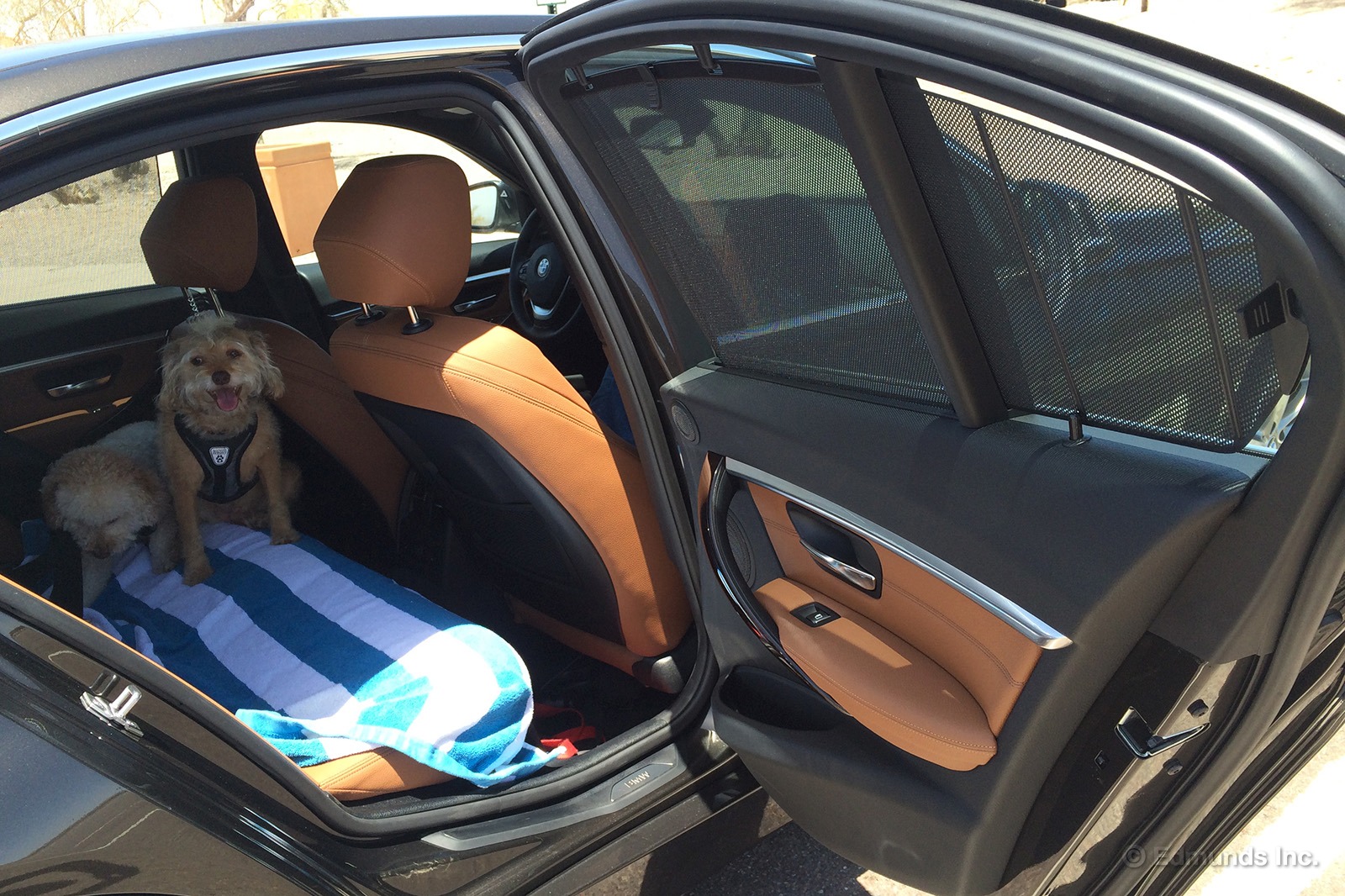
Perhaps the $575 price tag is a bit steep, but the optional rear side sunshades on our 2016 BMW 340i are nevertheless a great feature. As much as my dogs love warming themselves in the sun on occasion, they can only do so for so long before getting too toasty and moving away.
Unfortunately, that's not an option when strapped into the back seat of a car during a road trip. Rear sunshades alleviate that problem. Of course, this also applies to children strapped into booster seats.
It's a feature we also took advantage of in the long-term Kia Sedona and although you can certainly utilize an aftermarket item of some sort (I have one for the pups when travelling in non-sunshade-equipped cars), I appreciate the seamless appearance and full window coverage provided by the factory shades. Even the rear quarter windows get perfectly fitted mini shades.
I should also note that they are especially helpful in the 3 Series since the back seat air vents aren't especially powerful.
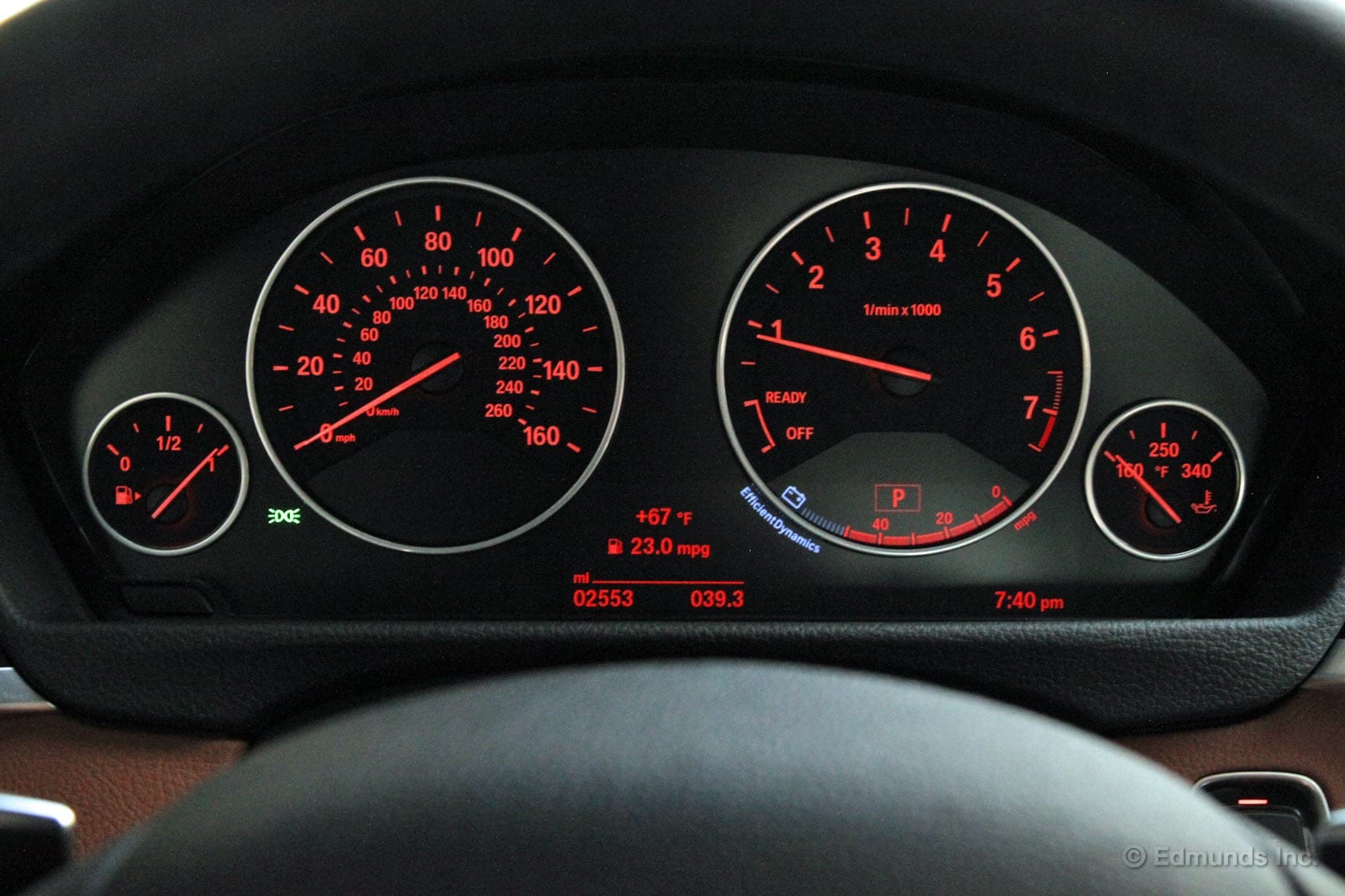
This is the gauge cluster on our 2016 BMW 340i. As you can see, it is quite simple. Some might say it looks boring. I think it's perfect.
BMW has been using this basic gauge design for decades and for good reason. It provides the basics — vehicle speed, engine speed, engine temperature and fuel level — and not much else. It forces you to concentrate on the important things instead of distracting you with secondary information.
This is a stark contrast to the setups in some of its competitors. They try to fit navigation screens, trip computers and various other information into roughly the same amount of space. The result looks more like a video game screen than an instrument panel.
With this design, you feel like you're operating an actual machine. It's a distinction that reinforces the idea that this is a true luxury car, not just a sedan stuffed with extra technology. Competitors should take notice.
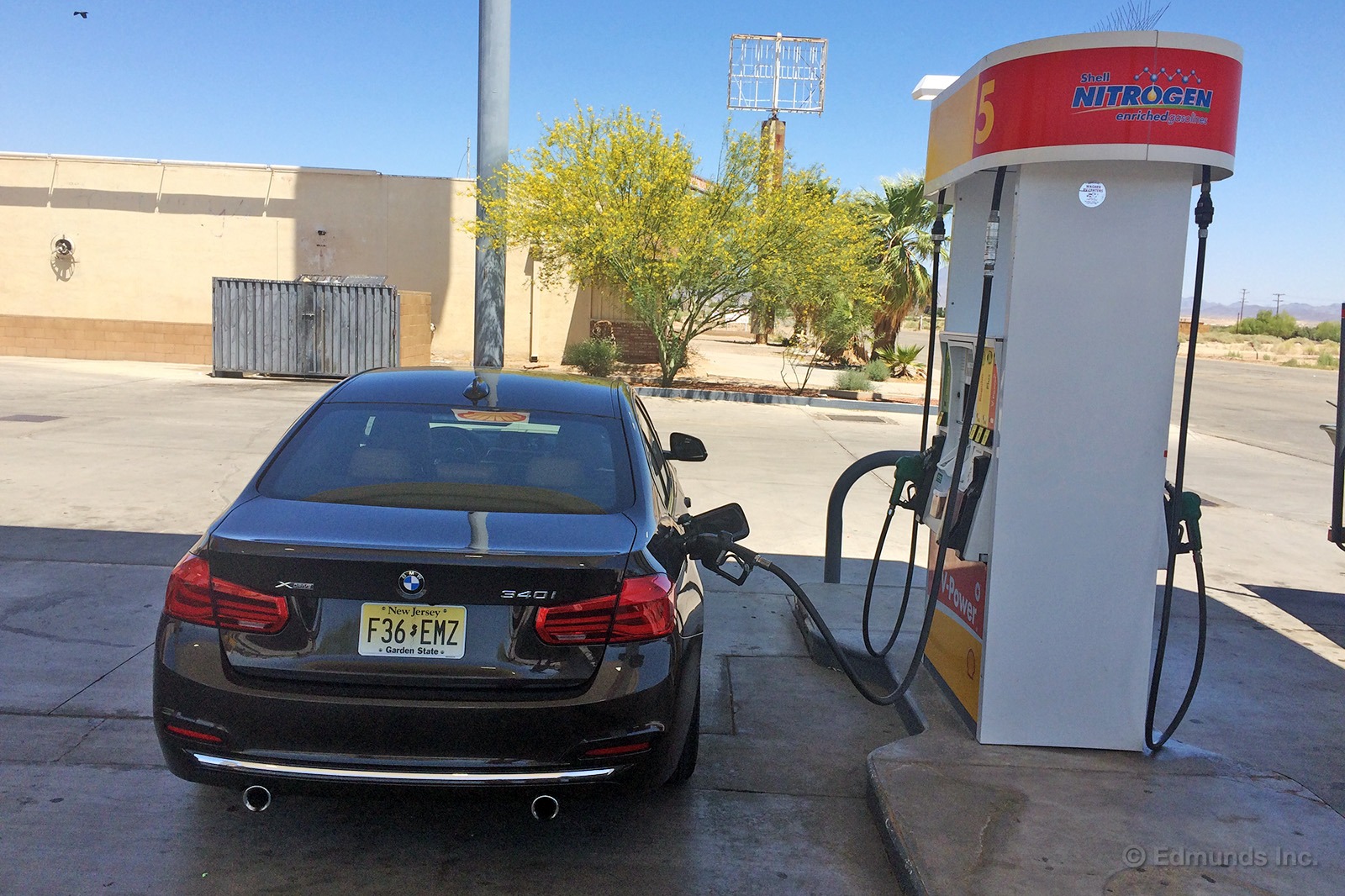
We've had our long-term 2016 BMW 340i for a little more than a month now and after crunching its fill up figures for the first time, things are looking promising for our fast Bimmer on the fuel economy front.
We've been averaging exactly 24 mpg, a bit less than its EPA combined estimate of 26 mpg. The best we've managed to accomplish is 31.1 mpg, which I did between Los Angeles and Phoenix at speeds not exactly conducive to thrifty fuel economy. With less wind and lower speeds, I think the EPA's highway estimate of 33 mpg is quite do-able. That's really quite incredible for a car with this much power.
To put it into perspective a bit, our 340i's average thus far of 24 mpg just happens to be what my 1998 BMW Z3 2.8 gets on the highway. Its 2.8-liter inline-6, which was a work horse in the BMW fleet at the time, produced 193 horsepower and 206 pound-feet of torque when found in that era's big-engined 3 Series: the 328i. Its EPA fuel economy was 20 combined (17 city/26 highway). By contrast, the 340i's 3.0-liter turbocharged inline-6 (itself a workhorse among bigger BMW's) is good for 320 hp and 330 lb-ft of torque, while returning 26 combined (22 city/33 highway). For even more perspective, BMW's 4.4-liter V8 back in '98 made only 282 hp and 324 lb-ft, and returned 16 mpg combined.
That's what you call 20 years of progress.
Lifetime Average: 24.0 mpg
Best Fill: 31.1 mpg
Worst Fill: 18.7 mpg
Best Range: 389.1 miles
Total Miles: 3901
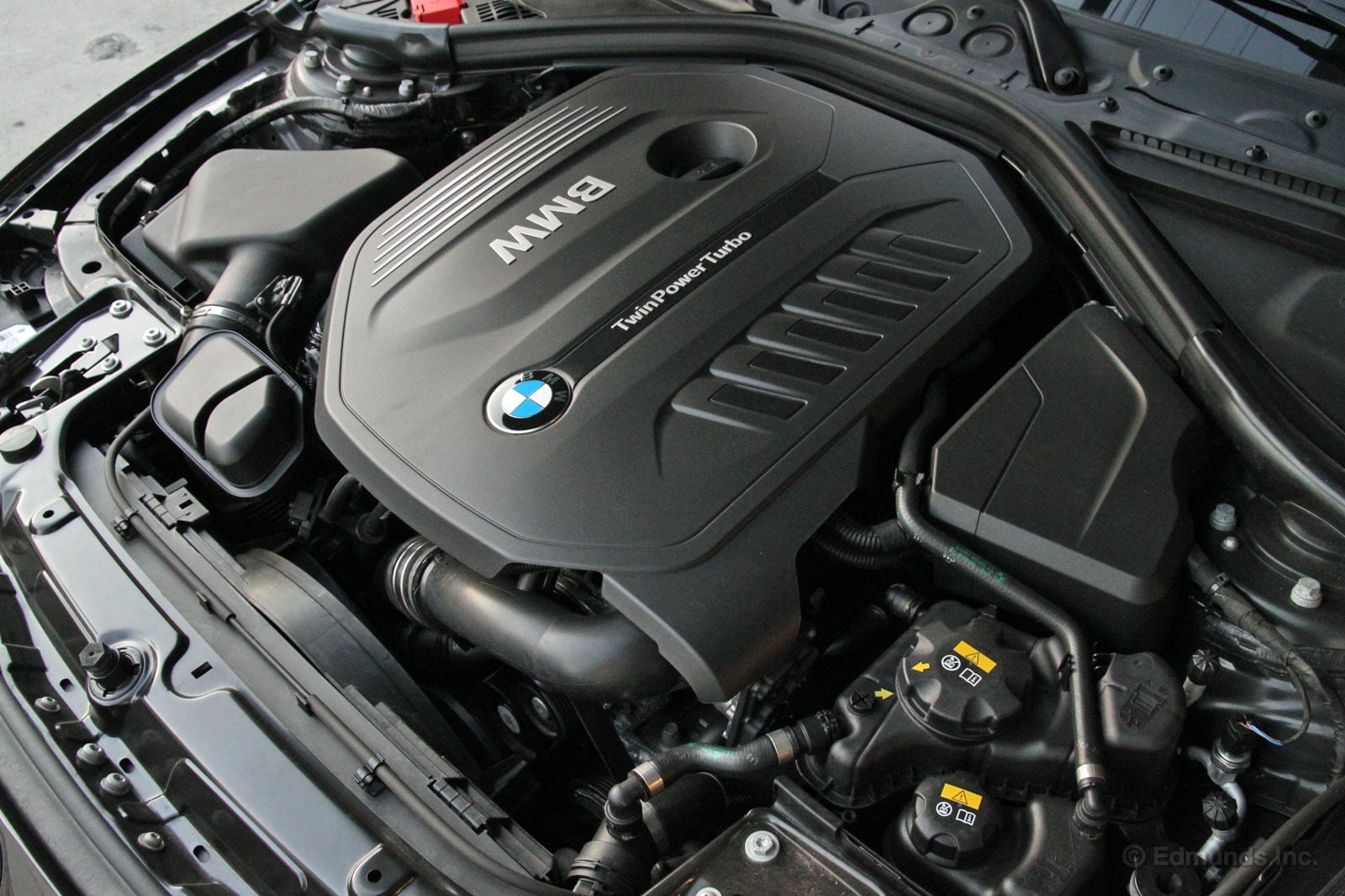
It's easy to forget that our 2016 BMW 340i has well over 300 horsepower on tap. You don't hear any roar from the exhaust when it starts, and even when you get into it on the highway it remains relatively subdued.
Don't let the silence fool you. This is a very fast sedan that could flat out embarrass cars that boast far bigger engines that make considerably more noise.
That balance of refinement and capability is one of the things that makes this 3 Series so appealing. You can drive it around town at a moderate pace and it feels like a proper luxury car. It doesn't beat you up over rough roads or feel twitchy when you're barely on the gas.
But when you get an opening and give it some pedal, this car leaps off the pavement. It's startling how fast it is at full throttle. You can't stay there long unless there's plenty of room, so most tastes of its power are short. Once you've tried it, however, you'll be looking for opportunities to hit it again. And again.
It's one of the reasons this sedan has been so popular over the years. It's comfortable when you need it be around town, yet still satisfies when you want to have a little fun.
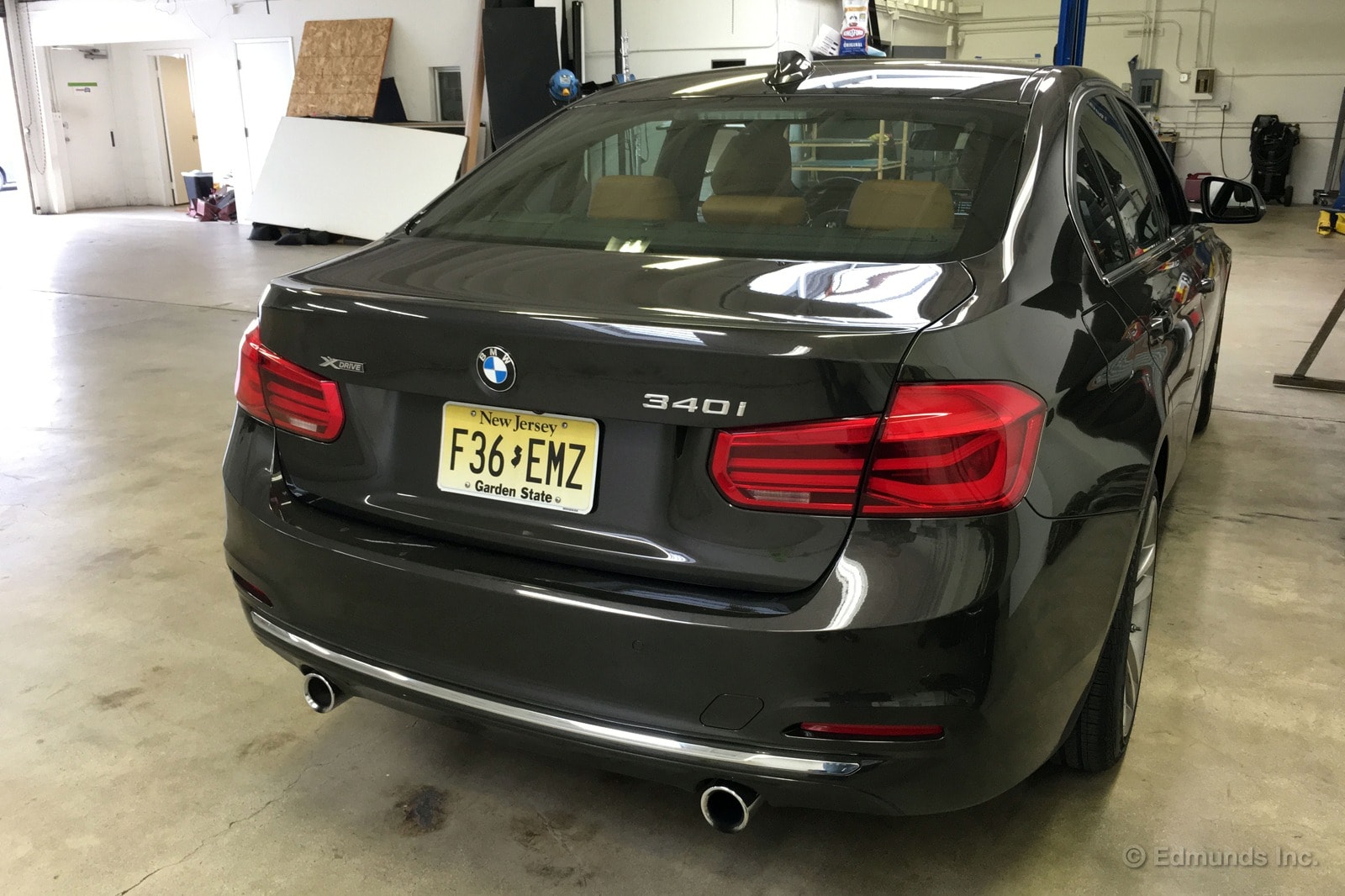
Will the luggage fit? To answer this question we loaded our 2016 BMW 340i with bags in different configurations and took photos. What constitutes carry-on luggage varies depending upon who you ask. So for the sake of standardization we used the same blue carry-on bag — size (21 x15x10 inches) and red checked bag — size (30x20x13 inches).
Take the jump for photos and more detail...
Access to the cargo area
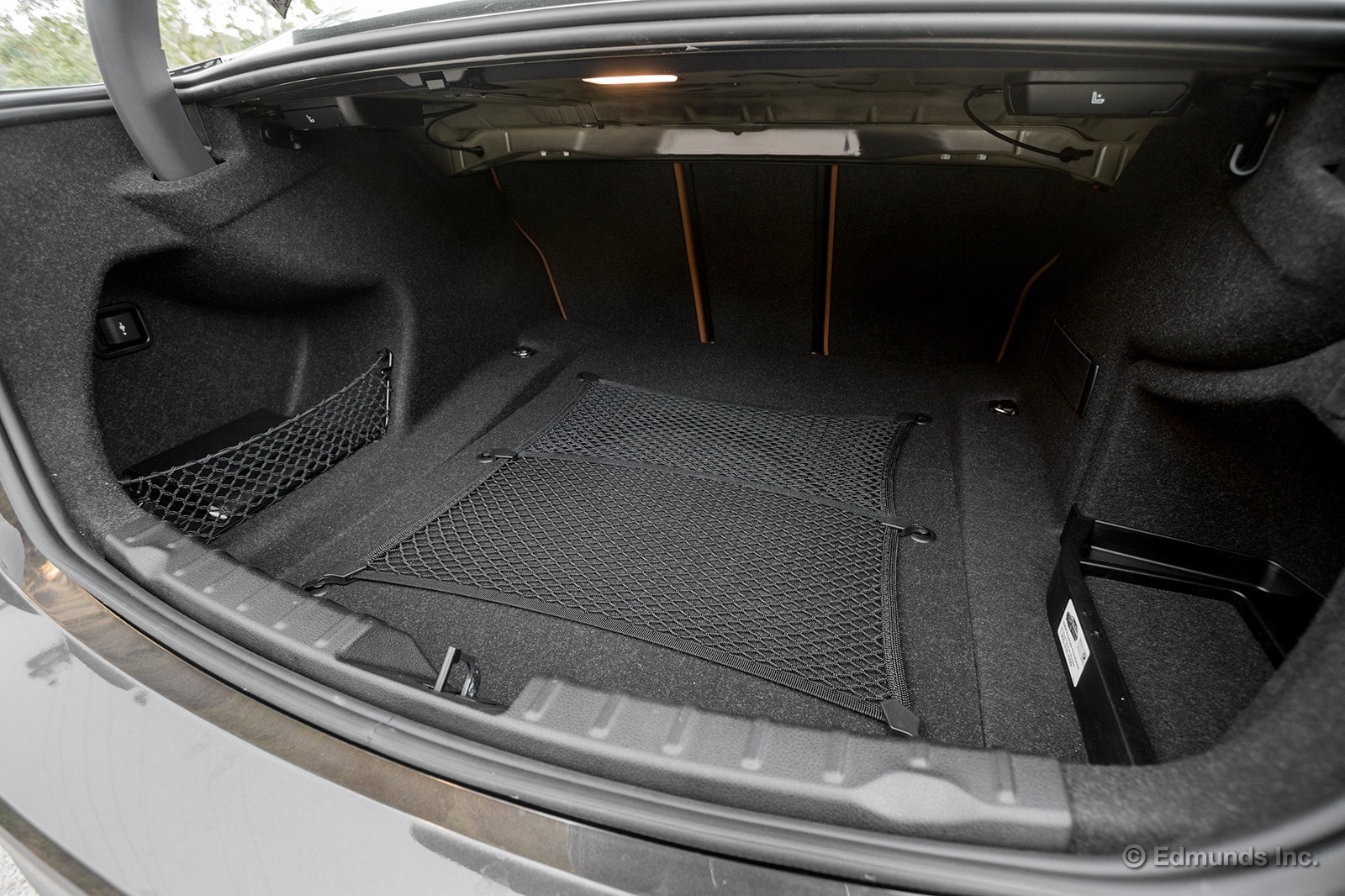
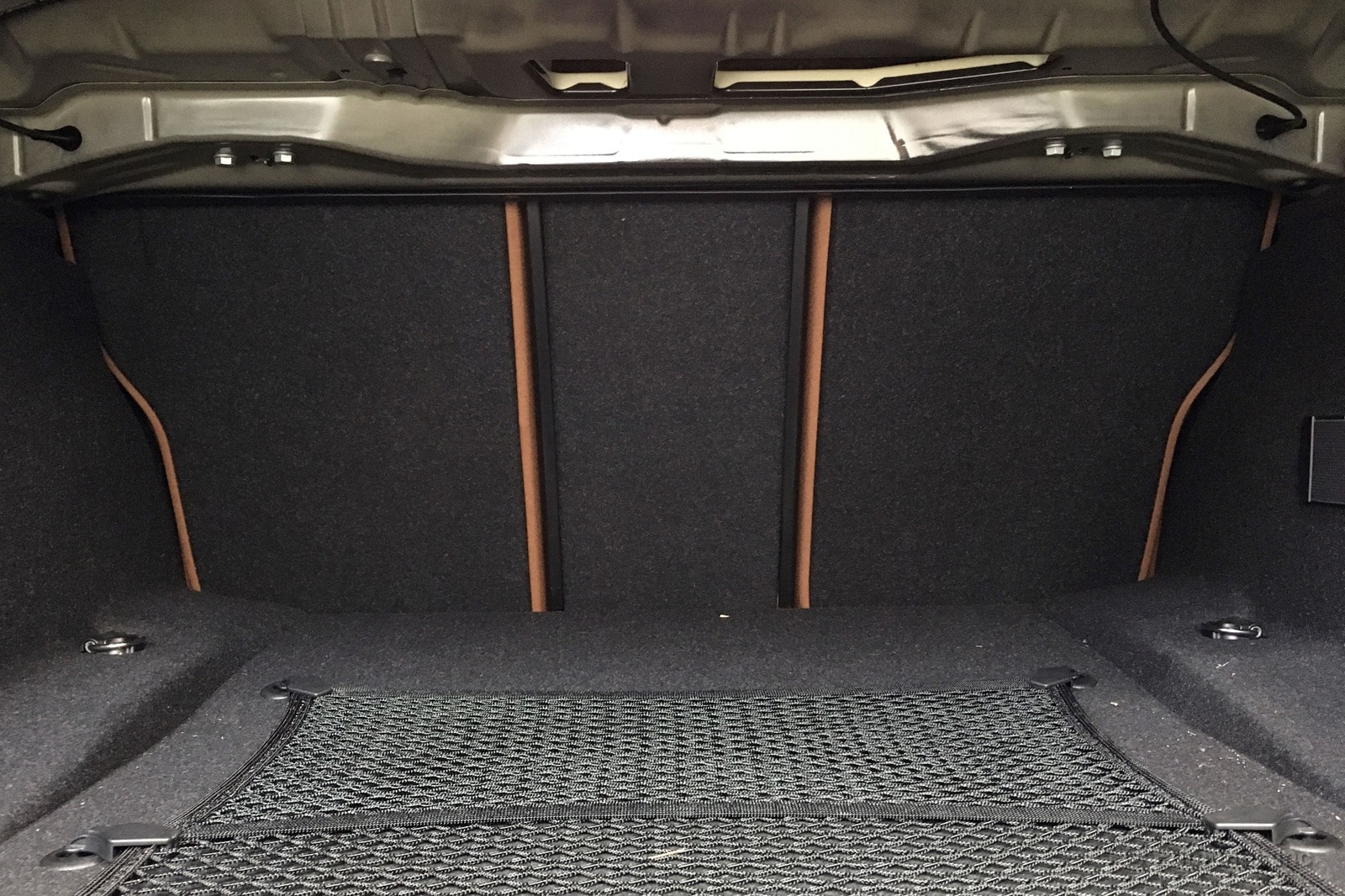
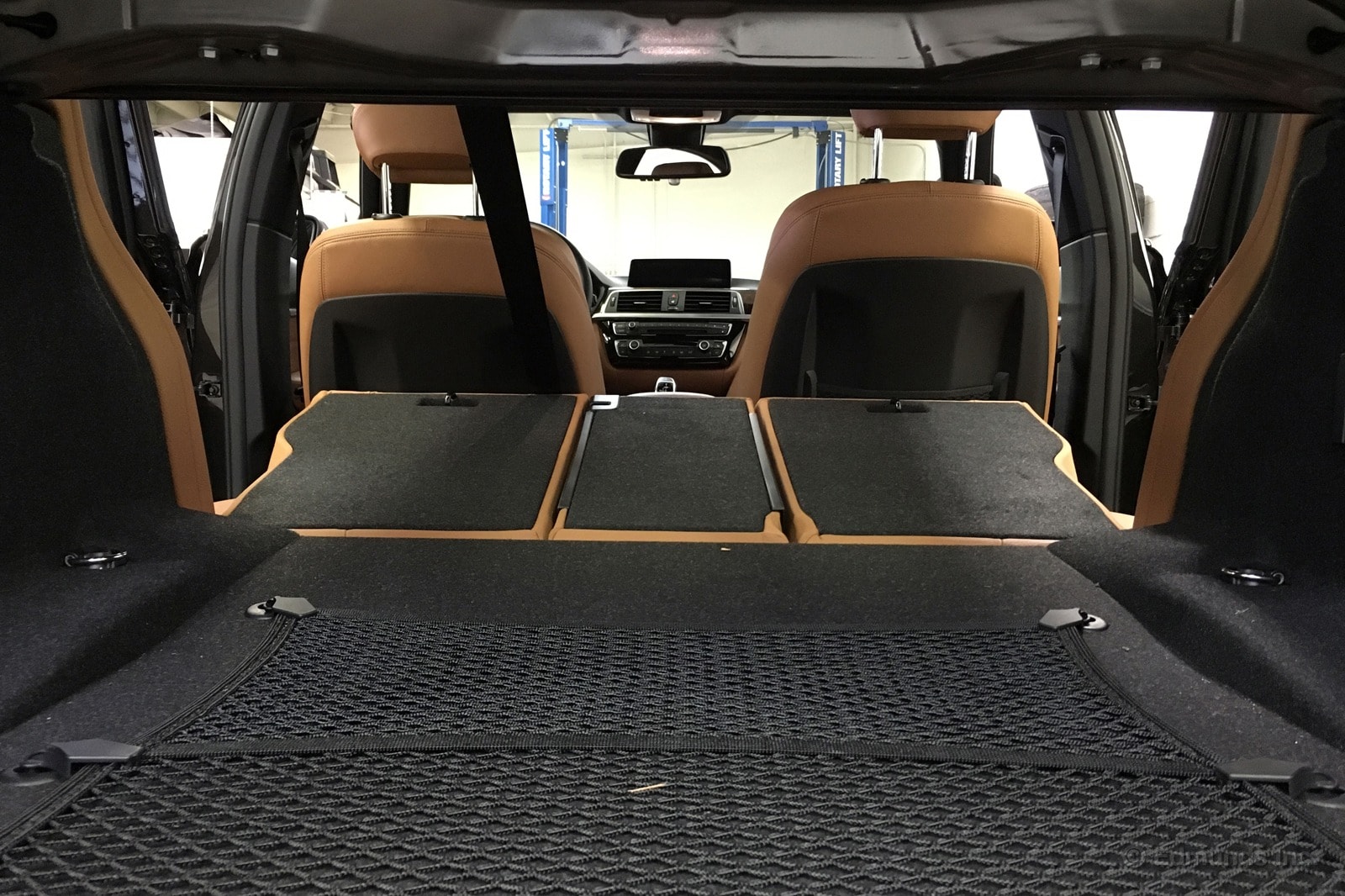
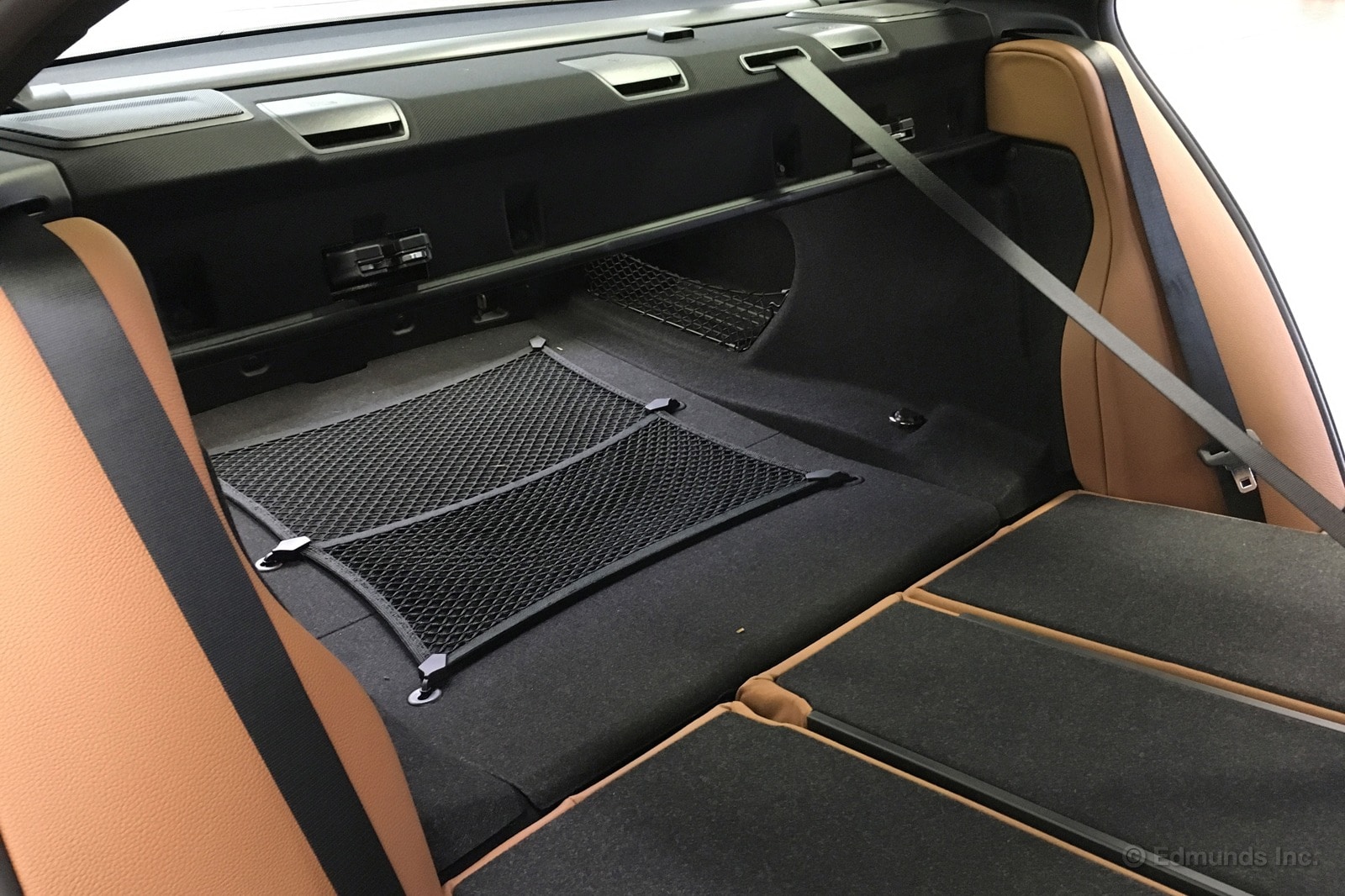
The trunk has a large opening that is deep and wide, allowing easy access. Recessed hinges keep them from intruding into the cargo area itself. Load height is 26.5 inches from the ground and, fully opened, the trunk handle is 59.5 inches up. Second-row seatbacks split 40/20/40.
Inside the trunk
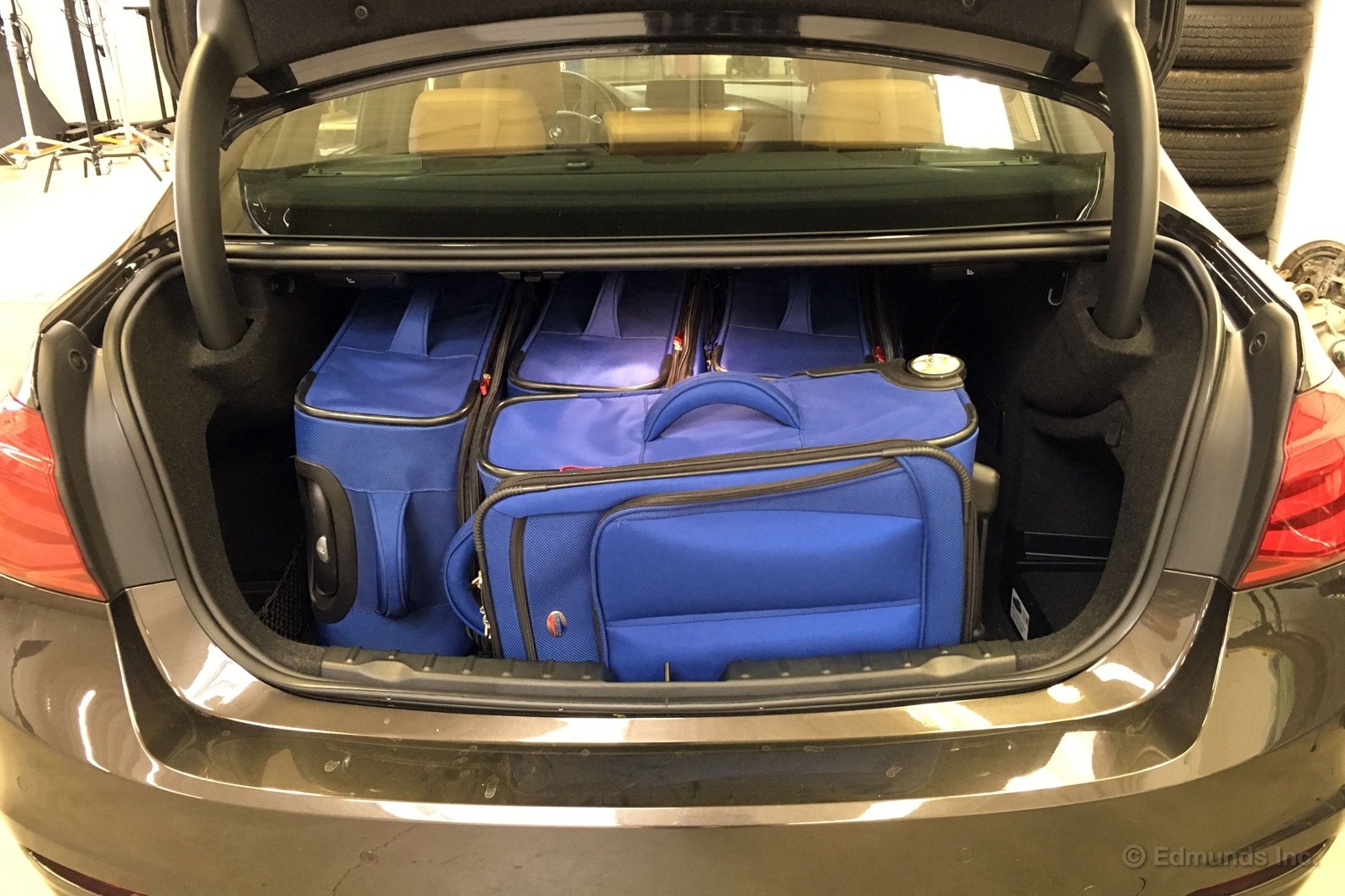

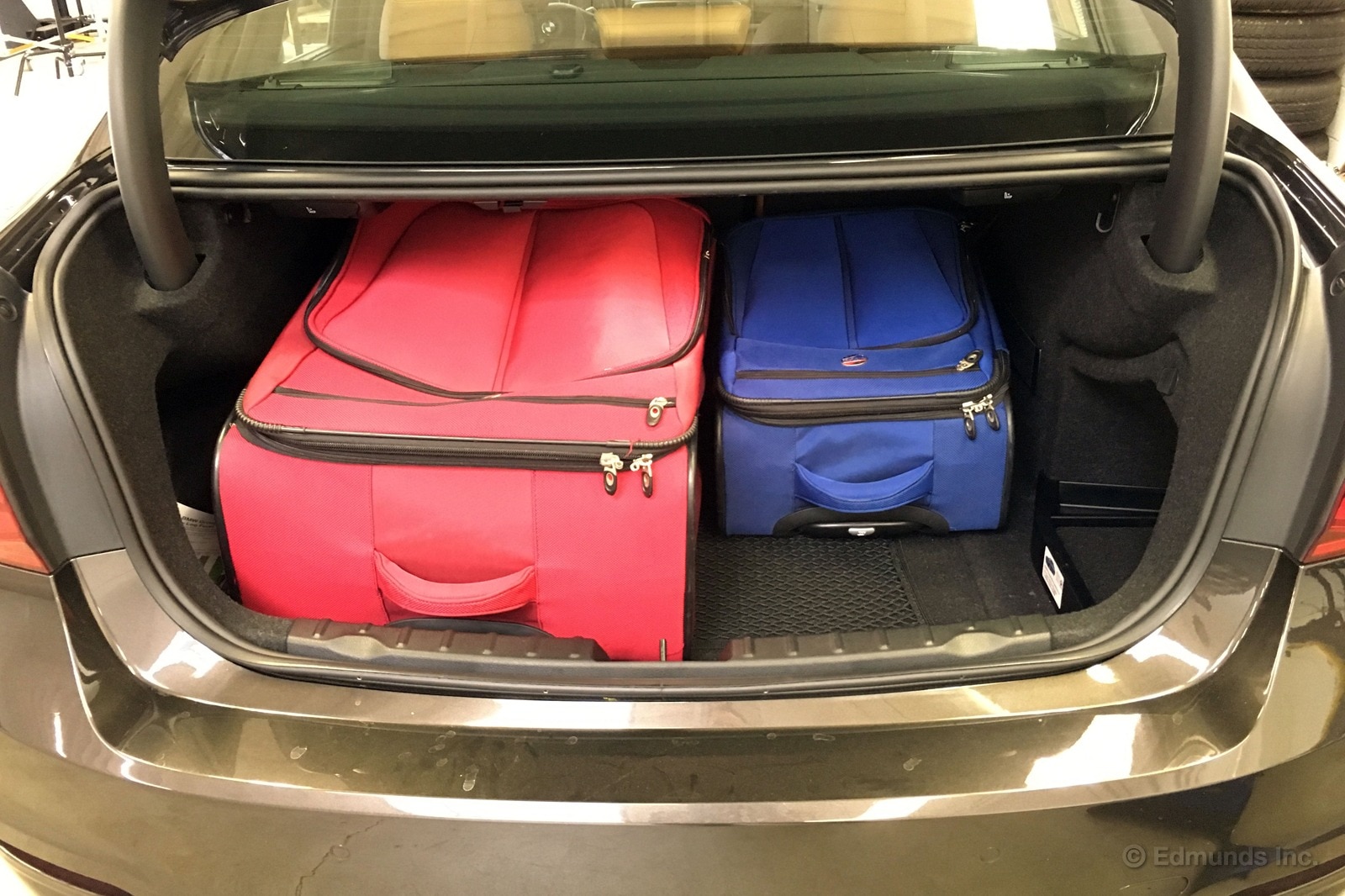
The trunk is not deep enough to fit two carry-on bags lengthwise. But the space is tall enough to fit both if one is loaded at an angle. Overall the cargo area it measures roughly 34 inches deep by 38 inches wide (at the wheel wells).
Behind the first row

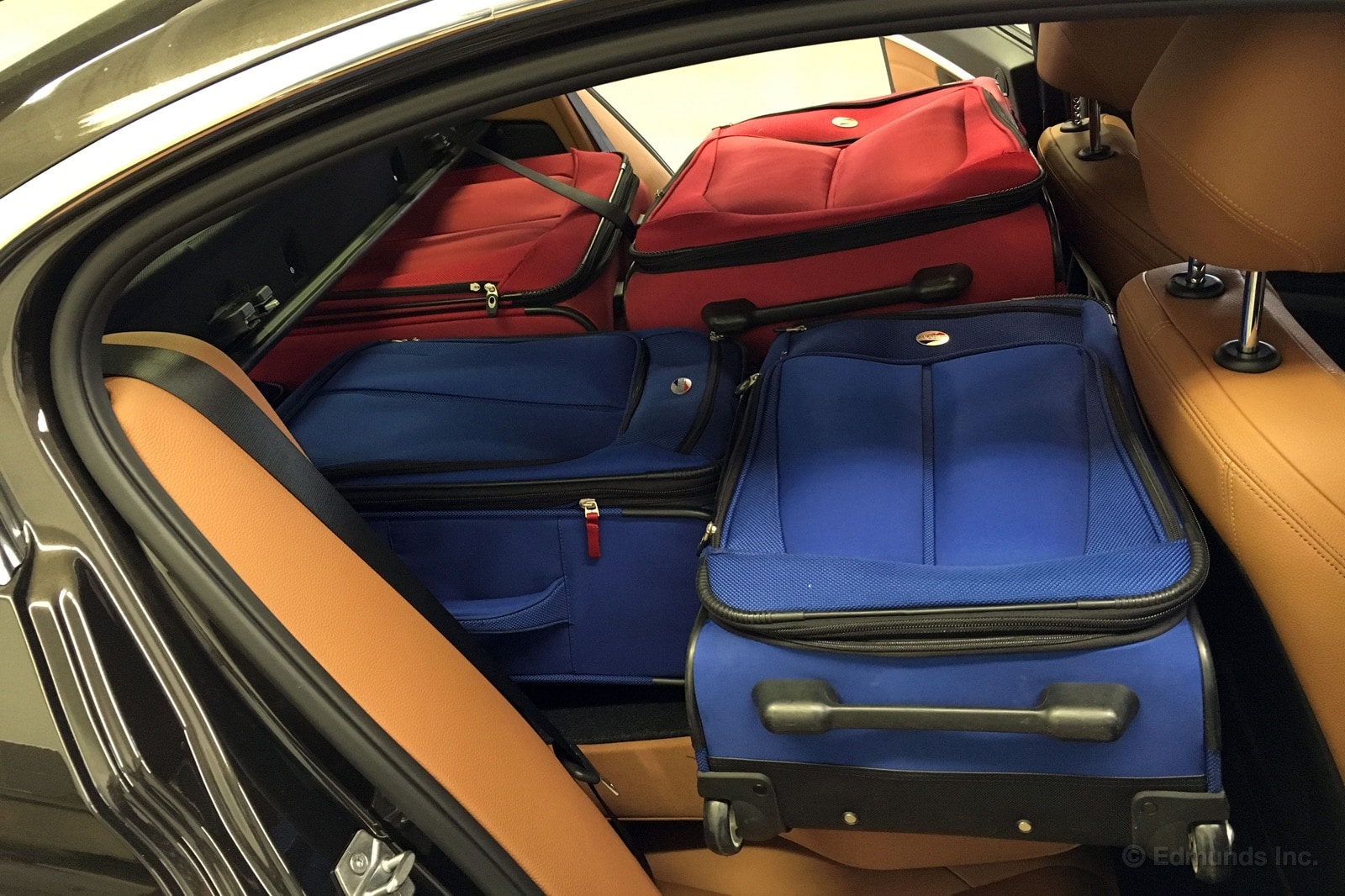
Find other cargo specs here.
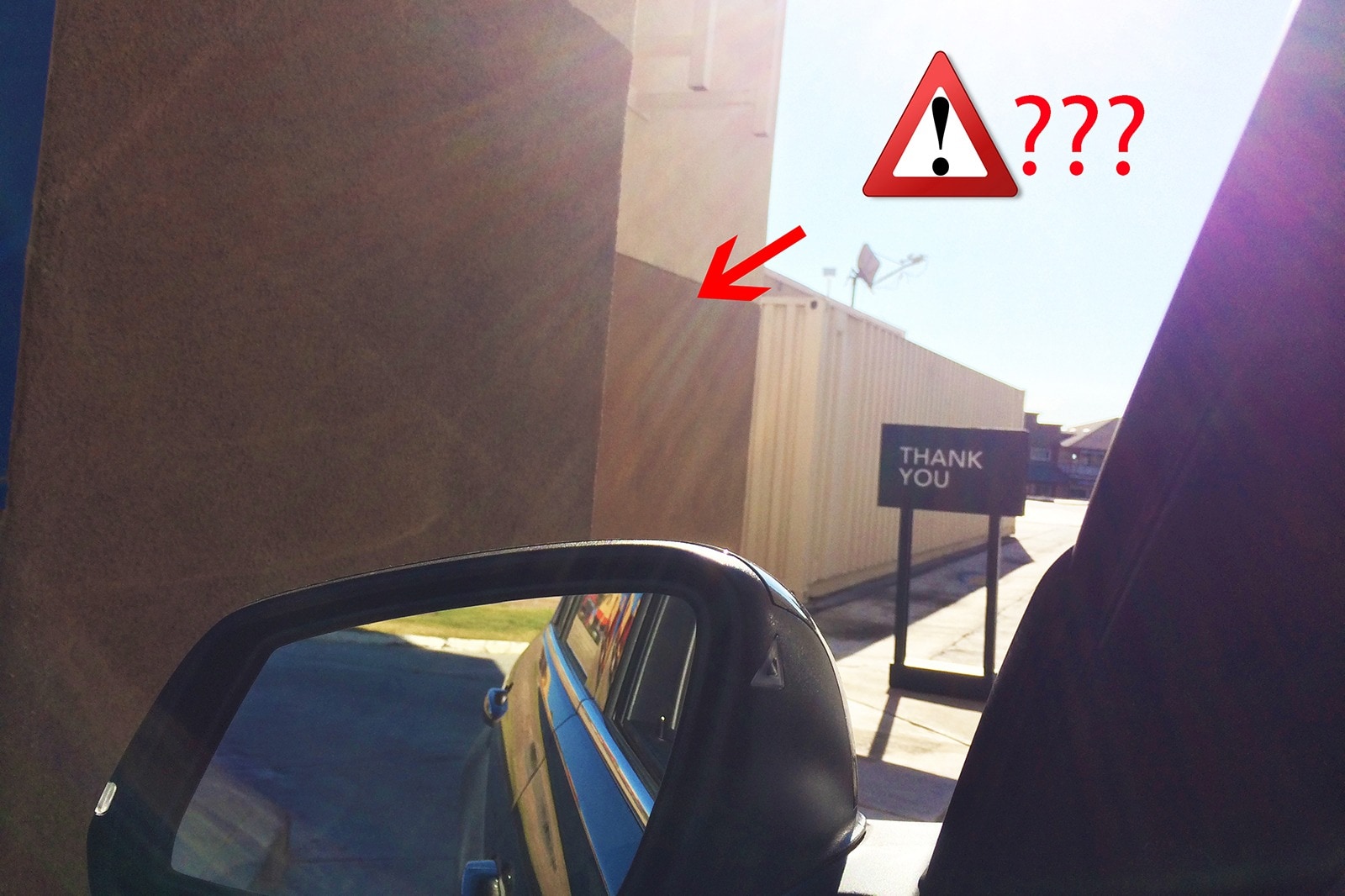
Thanks to the miracle of digital cameras, the need for well-honed, organic spatial awareness has faded for new and/or developing drivers. Backup cameras will be mandated on all new vehicles beginning 2018, and many manufacturers have already gone far and beyond future regulations, just as our long-term 2016 BMW 340i has.
While my personal beliefs rest in requiring people to learn how to drive with as few electronic crutches as possible, there are a few driving scenarios where the technology provides safety benefits beyond a driver's skill or experience.
In addition to the Driver Assistance package ($950), which includes a rearview camera and sonar park distance control, we also have the Driver Assistance Plus package ($1,700) that among other useful fender-saving features, adds more cameras — two in the side-view mirrors and two in the front bumper.
The 360-degree simulated top view, which looks like a satellite video feed from the movie Enemy of the State, is nice to have and especially invaluable for the spatially challenged. But for me, the front-side-view cameras provide the most benefit for drivers across the board.
If you're trying to find lane markings backing into a parking spot, side-view mirrors are still pretty effective. But to peek around a corner to see if a pedestrian, vehicle or other hazard is approaching, is far more difficult. It becomes a game of how-far-can-I-poke-my-nose-out-until-something-happens, and it's not that fun.

With the nose cameras, there's no guessing. They even have virtual markers that approximate how far your bumper is from the danger zone.

This job is all about picking nits. Drive a car, look for shortcomings, report on said shortcomings. So when I find it hard to say something about our long-term 2016 BMW 340i, that says something.
It's a car that does what it does at a high level of accomplishment. You might call this excellence, and I won't disagree.
The new 3.0-liter inline-6 is a gem, not only in power delivery but also refinement and sound. Ditto the BMW-fettled, ZF-built 8-speed auto, which I maintain is the best execution of an automatic transmission extant.
The 340i's seats, style, ride, handling, space, fuel-efficiency (if you can resist the siren call of power), quietness...they're all done to a high standard. This is a car that will satisfy an unusually broad range of sensibilities.
I maintain that it's too large — this 3 Series is a great 5 Series — but that's been the case for years now. And I lament the loss of civilization's best-ever cruise control interface: the BMW stalk. The 340i's steering wheel-mounted buttons are more fiddly than the now-extinct stalk (pour a little out), though the actual control-of-cruising itself is quite good.
This car simply oozes competence. If there's a downside to all its goodness, it's the price tag. A 3 Series equipped like ours is not an inexpensive car at very nearly $60,000. Cue involuntary eyebrow-raising.
Were it me, I'd skip the AWD and some of our car's optional features and instead go for the manual gearbox (even though the auto is brilliant). I'm also intrigued by the available Track Handling package for its non-run-flat Michelin Super Sport tires and upgraded brakes, but would need to drive one thusly equipped before giving it the nod.
Easy-to-See and Unobtrusive Blind-Spot Indicators
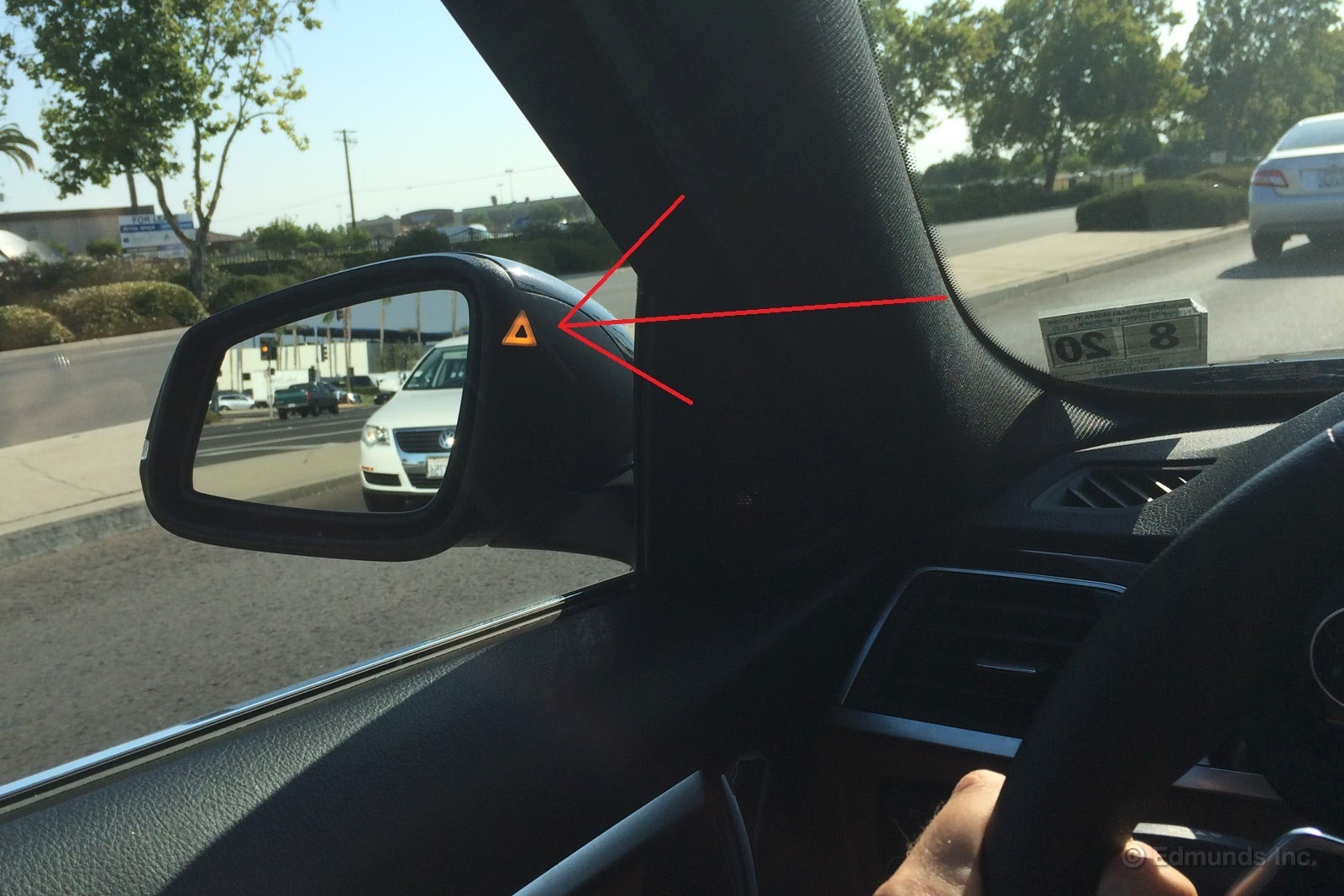
Most vehicles these days can be equipped with a blind-spot monitoring system. Blind-spot monitoring uses radar sensors to identify when another vehicle is in your left or right blind spot (i.e., the locations behind and over your shoulders that might not get covered with the vehicle's mirrors) and then gives you a warning if you attempt to change lanes. It can be a helpful safety feature, but certain systems are more useful than others.
I happen to like the one in our long-term 2016 BMW 340i, for two reasons.
The first is the easy-to-see nature of the vehicle indicators. The yellow triangle light mounted in the mirror housing is big and bright, and that means you don't need to shift your gaze or mental focus much to see it. I like this better than systems that have their warning lights in the mirrors themselves. Those are often harder to see or can get lost in the background of whatever else you're looking at in the mirror.
BMW also gives you an extra layer of protection with its monitoring system. If you engage the 340i's turn signal while a vehicle is in your blind spot, the light indicator flashes and the steering wheel subtly vibrates. Other systems typically beep loudly at you if you engage the turn signal. The steering wheel vibration is less intrusive, and as an added bonus, your passenger might not realize that you were just about to do something stupid.
Fuel Economy Update For June and July - City Driving Drags It Down
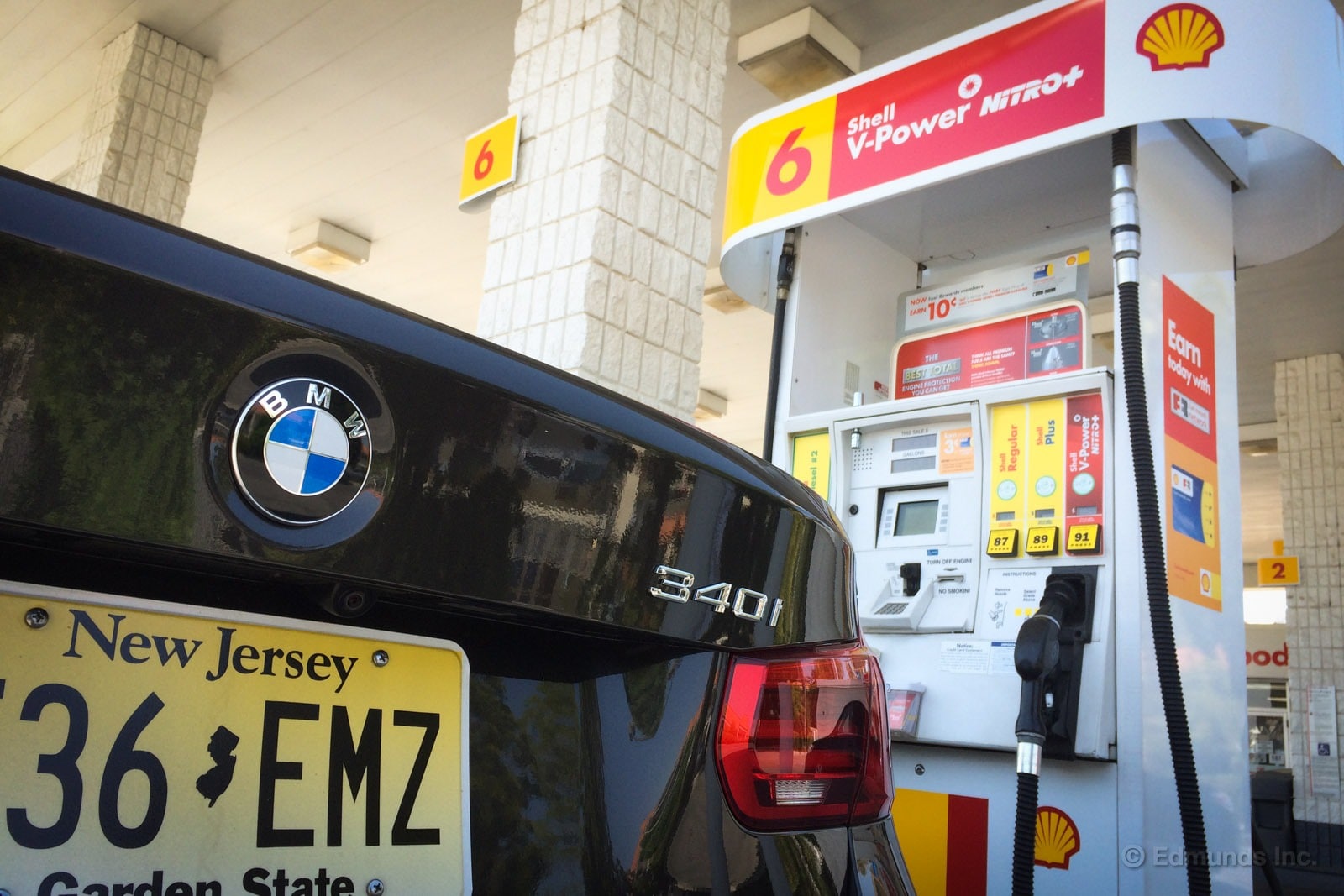
We neglected to report on our 2016 BMW 340i last month, but I'll make up for it today. Consider it a special double-issue of fuel economy! Alas, you could also consider it a riposte to our initial fuel economy update, in which James provided a rather sunny forecast.
This time, the MPG clouds are darker.
The bulk of our driving the past two months happened within the confines of Los Angeles. That traffic-heavy diet resulted in a string of fill-ups that didn't even meet the EPA estimate for city driving. In fact, we posted our worst tank yet during this period: 14.2 mpg.
We did have one bout of highway driving in which we netted 29 mpg from a tank. But the 340i's lifetime fuel economy stands at 22.6 mpg now. Back in June, we were at 24 mpg combined.
Hopefully, we can balance things out with a long road trip or two in the coming months.
Worst Fill MPG: 14.2
Best Fill MPG: 31.1
Average Lifetime MPG: 22.6
EPA MPG Rating: 26 Combined (22 City/33 Highway Combined)
Best Range: 406.3 miles
Current Odometer: 6,023 miles
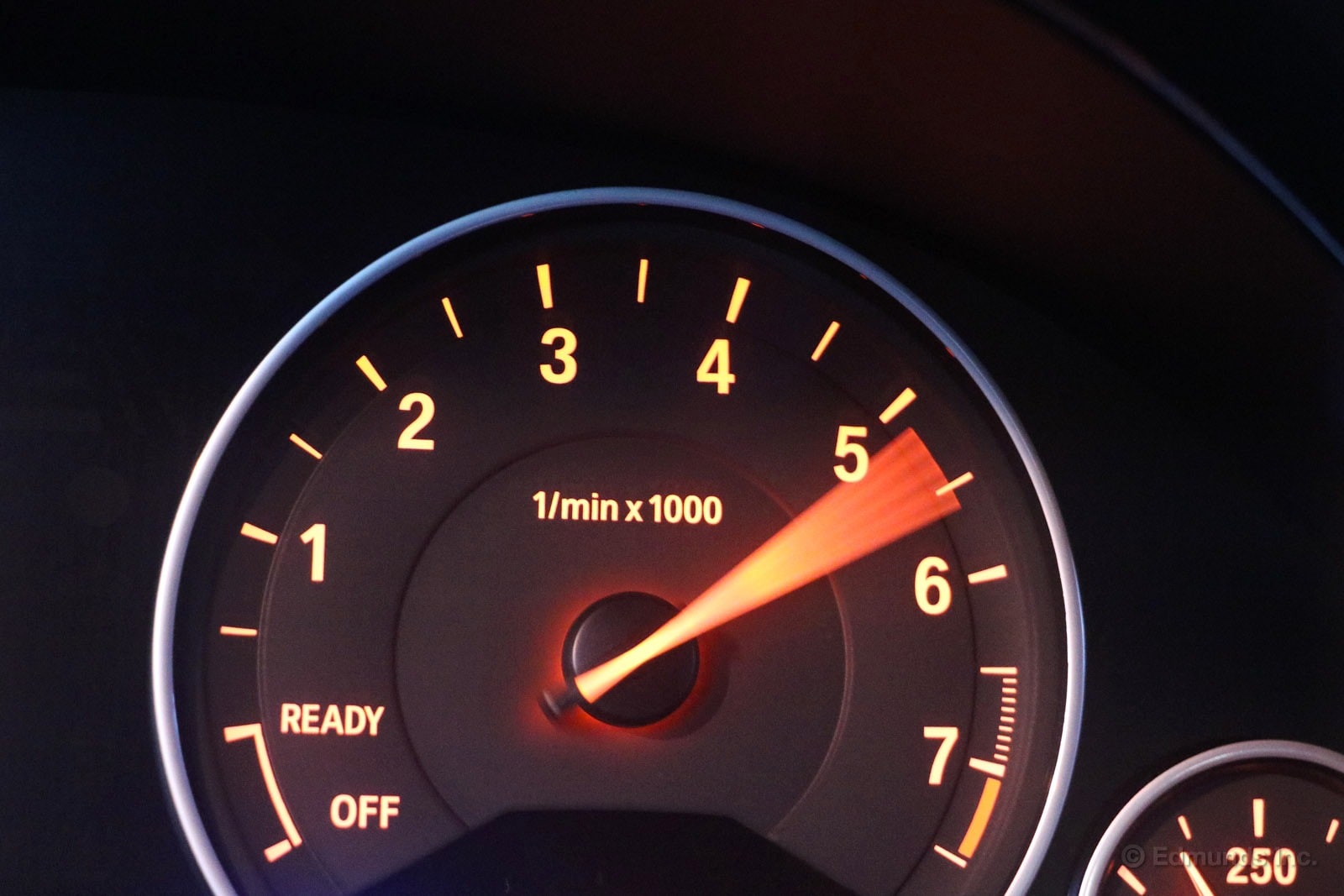
Plenty of luxury sedans can be had with engines that produce more than 300 horsepower these days. But finding one that can accelerate from zero to 60 mph in just 4.4 seconds is a lot harder. Our 2016 BMW 340i did just that in our instrumented testing, yet it's rated at a mere 320 hp. Typically, you'd have to shop cars packing closer to 400 hp to get similar performance.
Somewhere within in the depths of BMW's engineering offices, there's got to be a motivational poster with a picture of a kitten poking its head out of a box and text below reading: "Underpromise and Overdeliver."
The other interesting thing about our turbocharged 340i is that it's not a one-hit wonder with that zero-to-60 sprint. Check out its quarter-mile time in the performance test linked above: 12.7 seconds at 108.3 mph. In general, any factory-spec car that can run 12s is impressively fast. A 2014 Porsche Cayman S PDK, for example, ran a 12.7@108.6 in our testing, and get this — a 2012 Audi R8 4.2 manual ran a 12.9@109.2. How's that for company. Many other turbocharged test cars have produced quick launches to 60 mph but lost steam at the quarter-mile mark, whereas the 340i just keeps on pulling like the naturally aspirated Porsche and Audi.
Don't get me wrong, having easily accessible power that gets you up to freeway speeds quickly and effortlessly is advantageous. That's why modern turbo engines make sense — it's the way most of us use our cars. But BMW has earned a reputation for making spirited engines that produce plenty of power at high rpm, and true to form, the 340i's turbocharged inline-6 never runs out of breath. Horsepower is said to peak at 5,500 rpm, but you can still wind it out towards its 7,000-rpm redline and enjoy the rush.
For me, it's this kind of motivational spirit that puts the "M" in BMW. If you're shopping for a small luxury sedan with more than 300 hp, don't go by the spec sheet alone. Take a test drive, too. I'm sure the 340i is going to win you over.

Is a 2016 BMW 340i a viable family car if you've got little kids? Buying a luxury sedan packed with luxo-goodies and a stout 320 horsepower might pull on your heartstrings, but if you can't easily install child safety seats, your leather-lined rocketship won't do you much good.
Fortunately, the current 3 Series has you covered.
I'll start with the most challenging test: installing a rear-facing safety seat. A vehicle needs plenty of rear legroom in order to have enough space for the seat. Otherwise, you'll have to move the front seats forward, and that can be potentially problematic for the driver and/or front passenger.
You might not word-associate "BMW 3 Series" with "roomy," but I was pleasantly surprised by the relative ease of installing my older Britax Marathon reversible car seat. (This seat is for toddlers, but a rear-facing infant safety seat will take up a similar amount of room.) I did have to power the front passenger seat forward a few inches from its normal position to provide enough clearance. But I sat up front afterwards and found that the remaining front legroom was still what I'd consider viable for an adult (I'm 5'10").
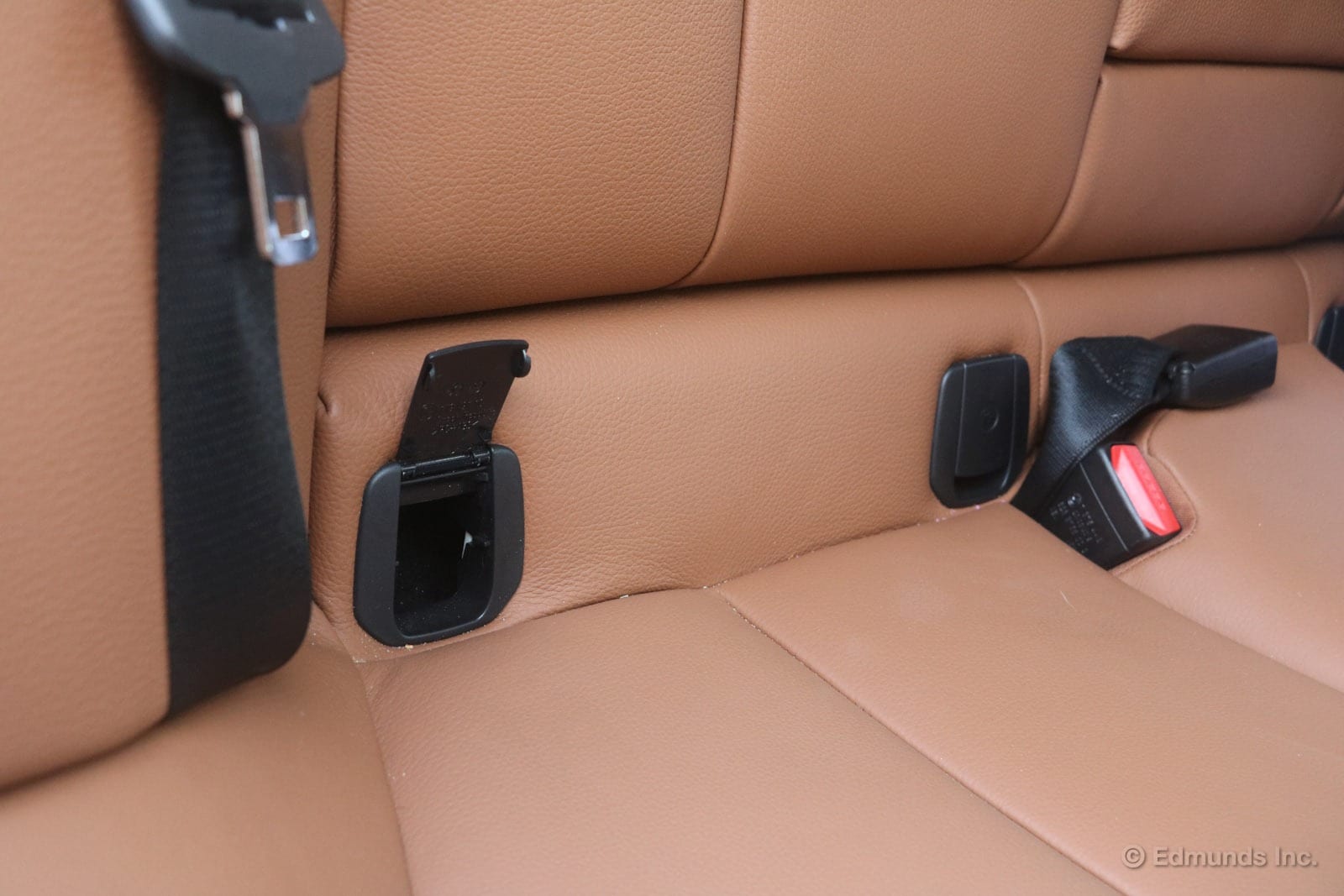
I also like the 3 Series' easy-to-locate LATCH connectors: just lift up the plastic covers and, with a Madden-esque boom!, there they are. The seat cushions are relatively flat, too. Luxury-class rear seats are often heavily contoured, which makes it harder to get a safety seat installed correctly.
The angle of both the seat cushion and the seatback can be issues, as well. I did prop up the child safety seat to the correct level by using a rolled up towel, but this is typical in my experience.

It was similarly straightforward to strap down the seat in its front-facing position. The rear head restraints are removable, and that allows you to get the safety seat installed snugly against the seatback.
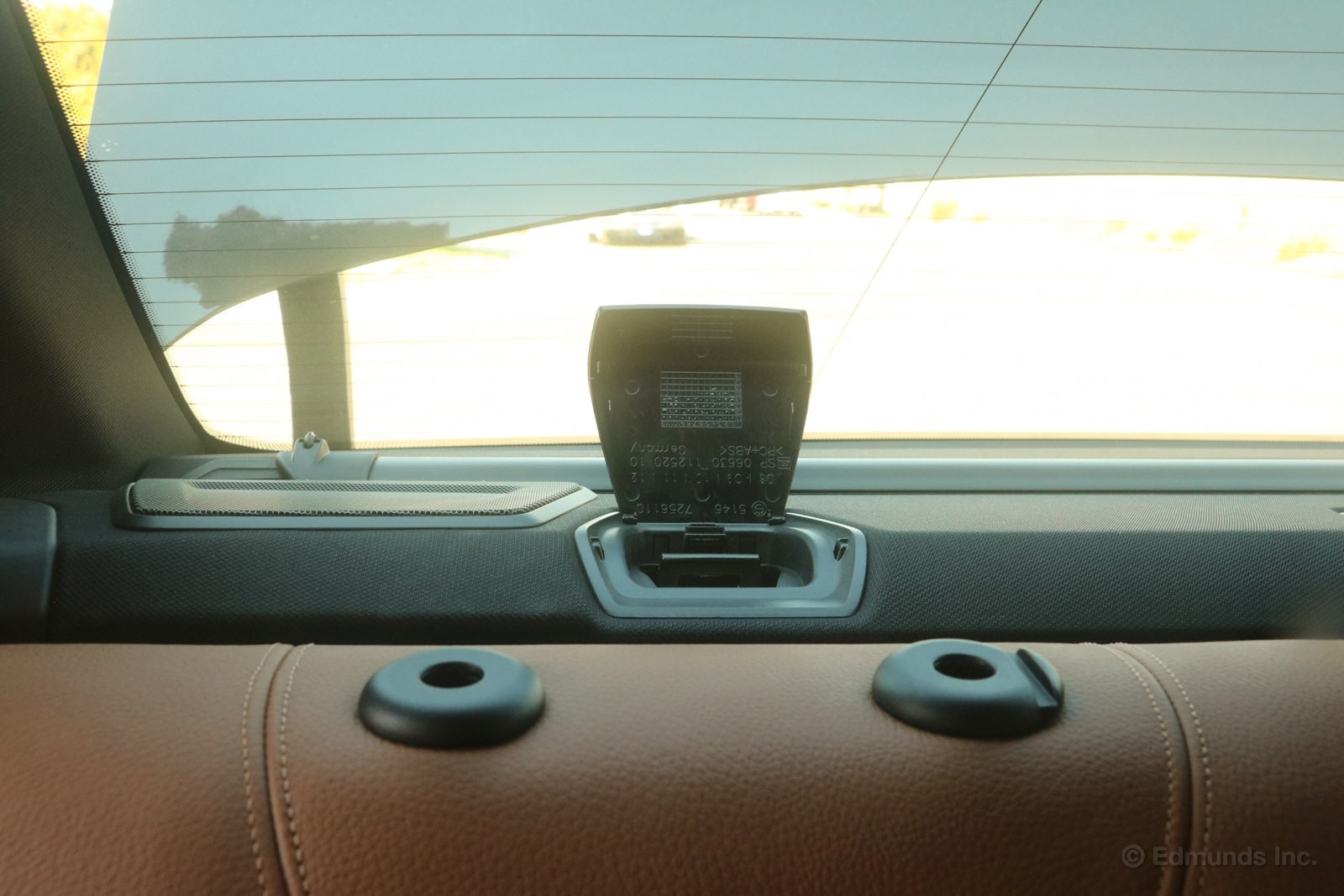
Removing the head restraints also provides a less-obstructed view to the top LATCH tether anchor points.
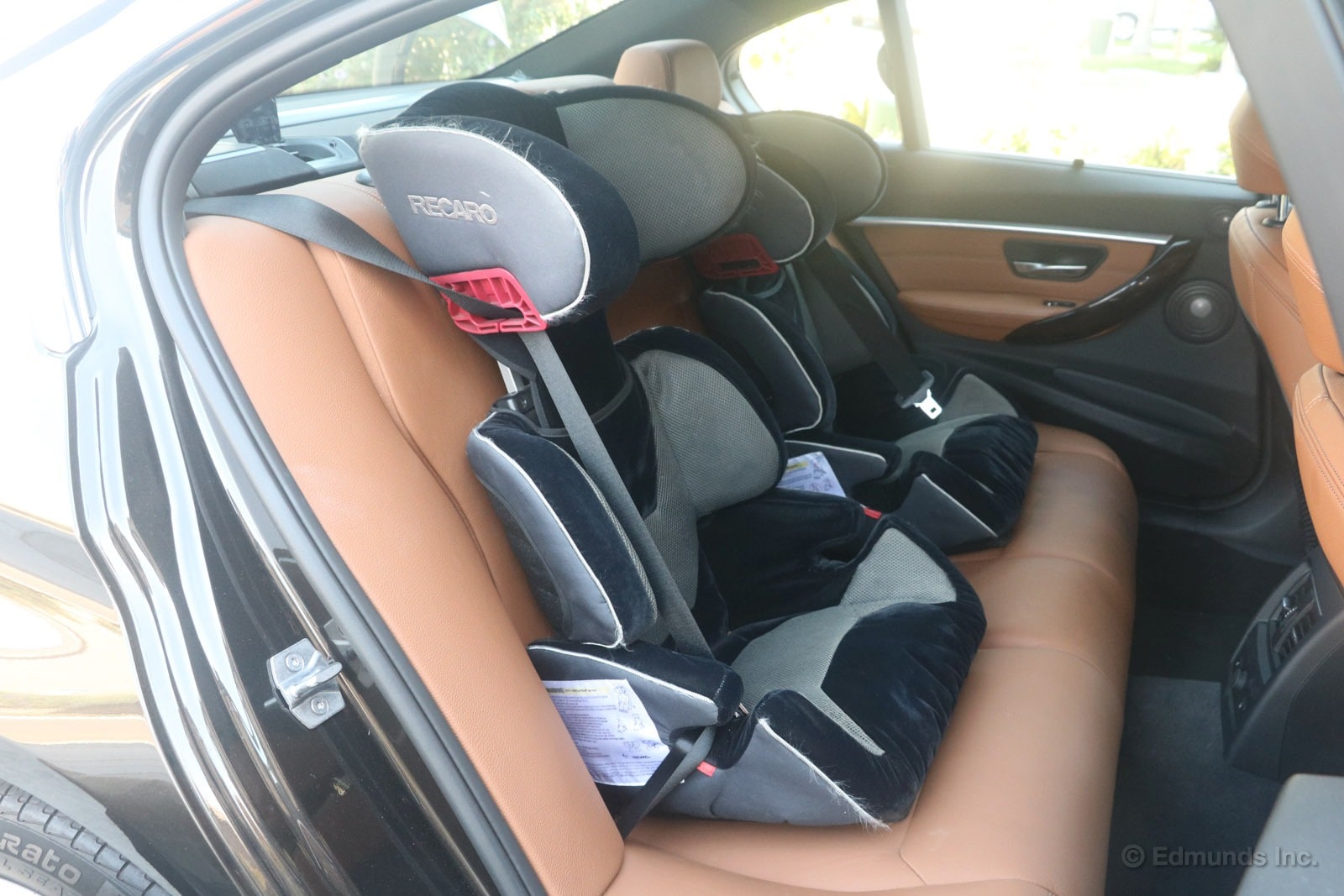
Finally, the easy install: a high-back booster seat. This Recaro booster fit perfectly.
All in all, it was a solid showing for our long-term 340i.
First Service Performed, But We'll Have To Go Back
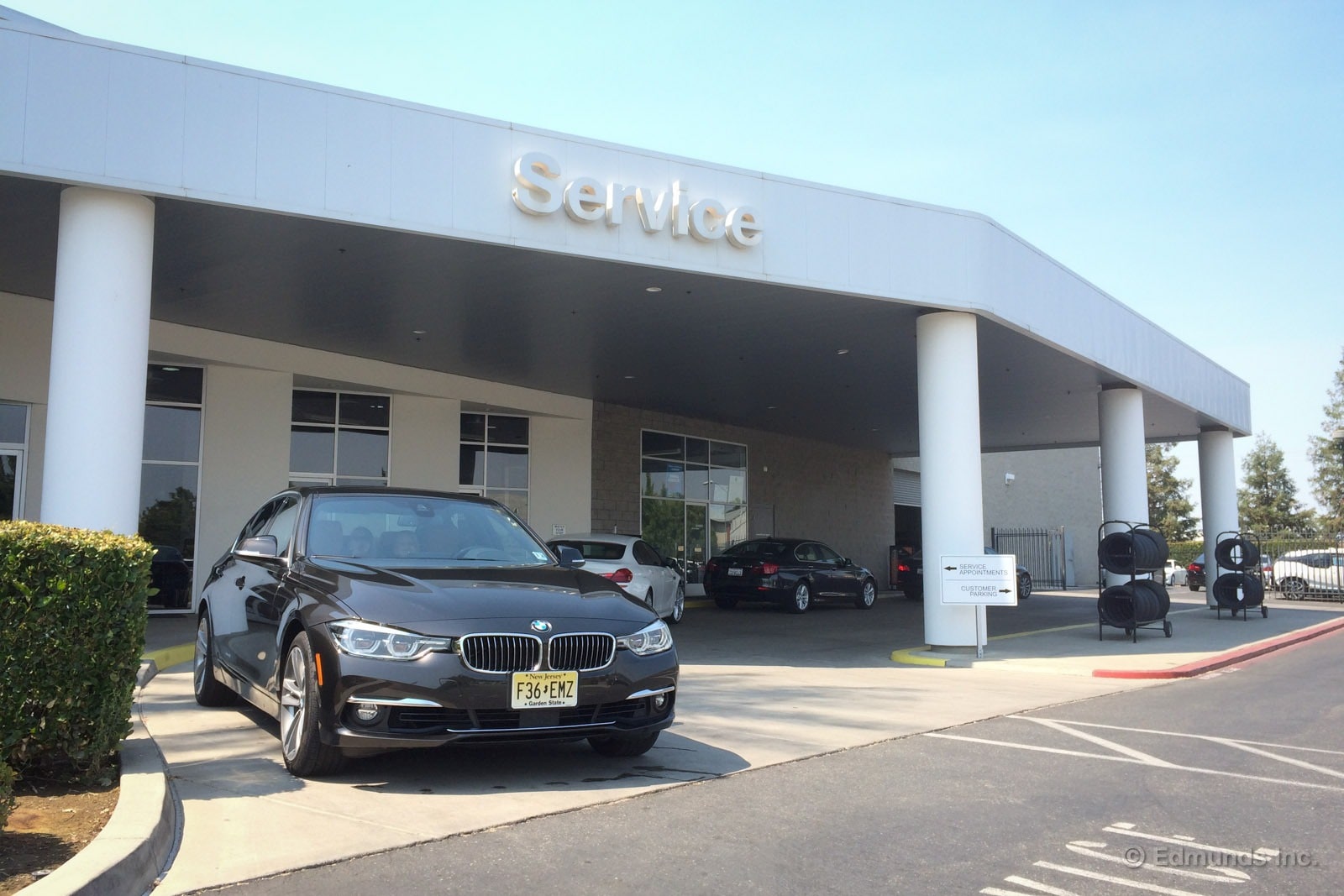
A few days ago, a "service due" indicator began popping up on our 2016 BMW 340i's driver information display every time I pressed the start button. The timing seemed a little odd to me. Based on our experience with modern BMW products, I expected the first service wouldn't occur until 10,000 to 12,000 miles, yet our 340i was around 6,000 miles at the time. Our 2015 M235i, for example, first went in at 12,000 miles.
But iDrive's vehicle info page said we needed an oil change, so I booked an appointment at my local BMW dealer to get it done.
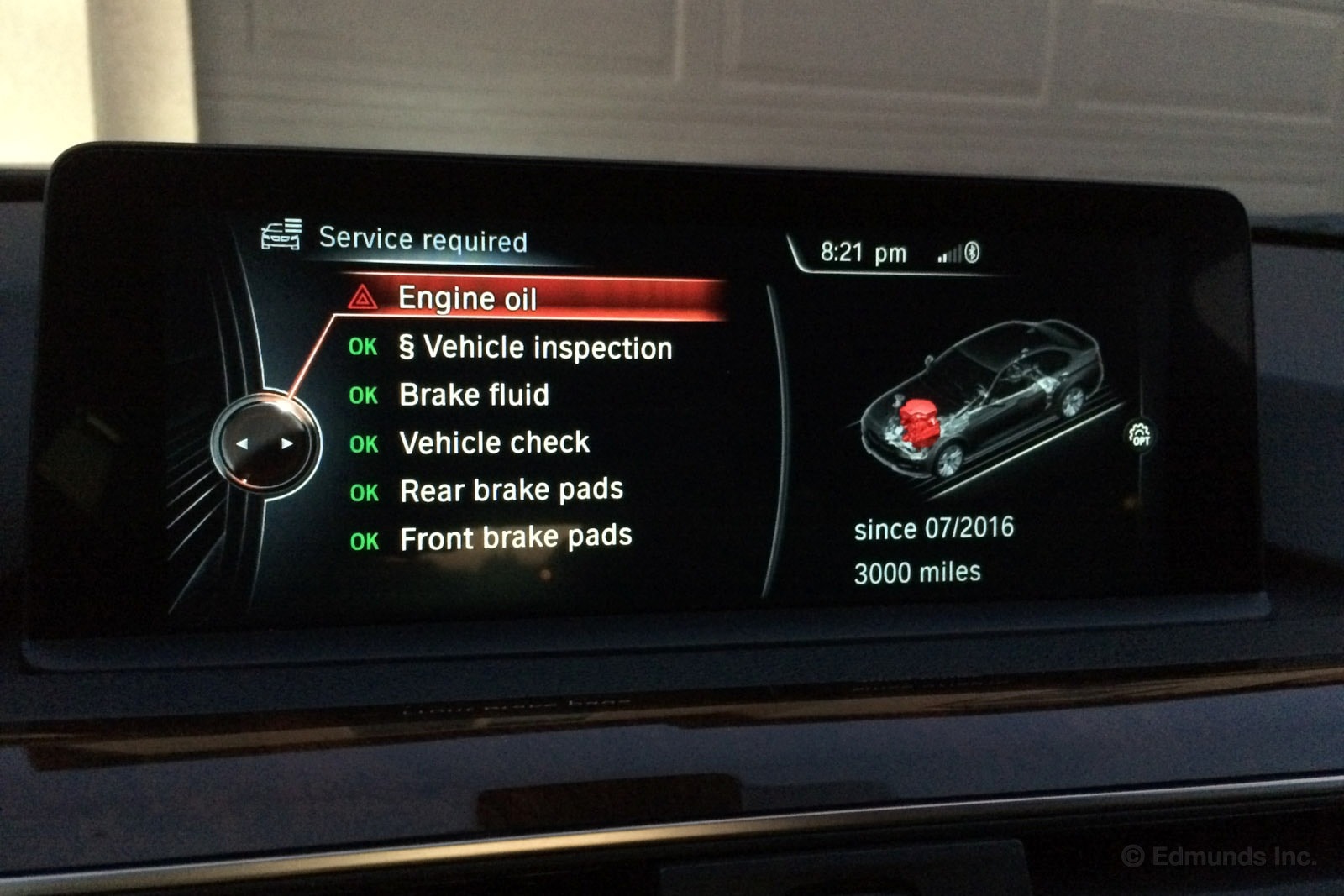
I showed up at BMW Fresno and chatted with my advisor, Sergio, while he entered the 340i into his system. I told him I was surprised that our 340i needed an oil change so soon. He replied that BMW had altered its service schedules recently so that they now were requiring intervals "more like a normal car." OK, I thought, but at 6,000 miles?
Sergio also mentioned that our 340i had a recall out on it for a software update. Unfortunately, I only had time to wait for the oil change. I said we'd have to postpone the update for now.
I hung out in the dealer lounge and did some work via the free WiFi. About an hour later, Sergio told me the oil change was done but there was a problem: the technician couldn't reset the service indicator, and they didn't know what was going on. "Do you mind waiting a while longer while we figure out what's wrong?" Err, sure.
I waited about 40 minutes more. Sergio finally came back. They ran a battery of tests, he said, and discovered that our 340i has a defective oil-level sensor that was preventing the service-indicator reset. He could order a new sensor, but it would take about 10 days to get in.
I didn't have 10 more days with the car, so I told Sergio to just wrap it up. We'd handle the sensor replacement (and software update) later. But thinking back on it all now, I wonder if the defective sensor triggered a false and premature oil-change request.
Otherwise, it was a pleasant experience. It was also free, per BMW's four-year/50,000-mile free maintenance plan that's effective for 2016 cars. (Note that BMW has shortened it to three years and 36,000 miles for 2017.)
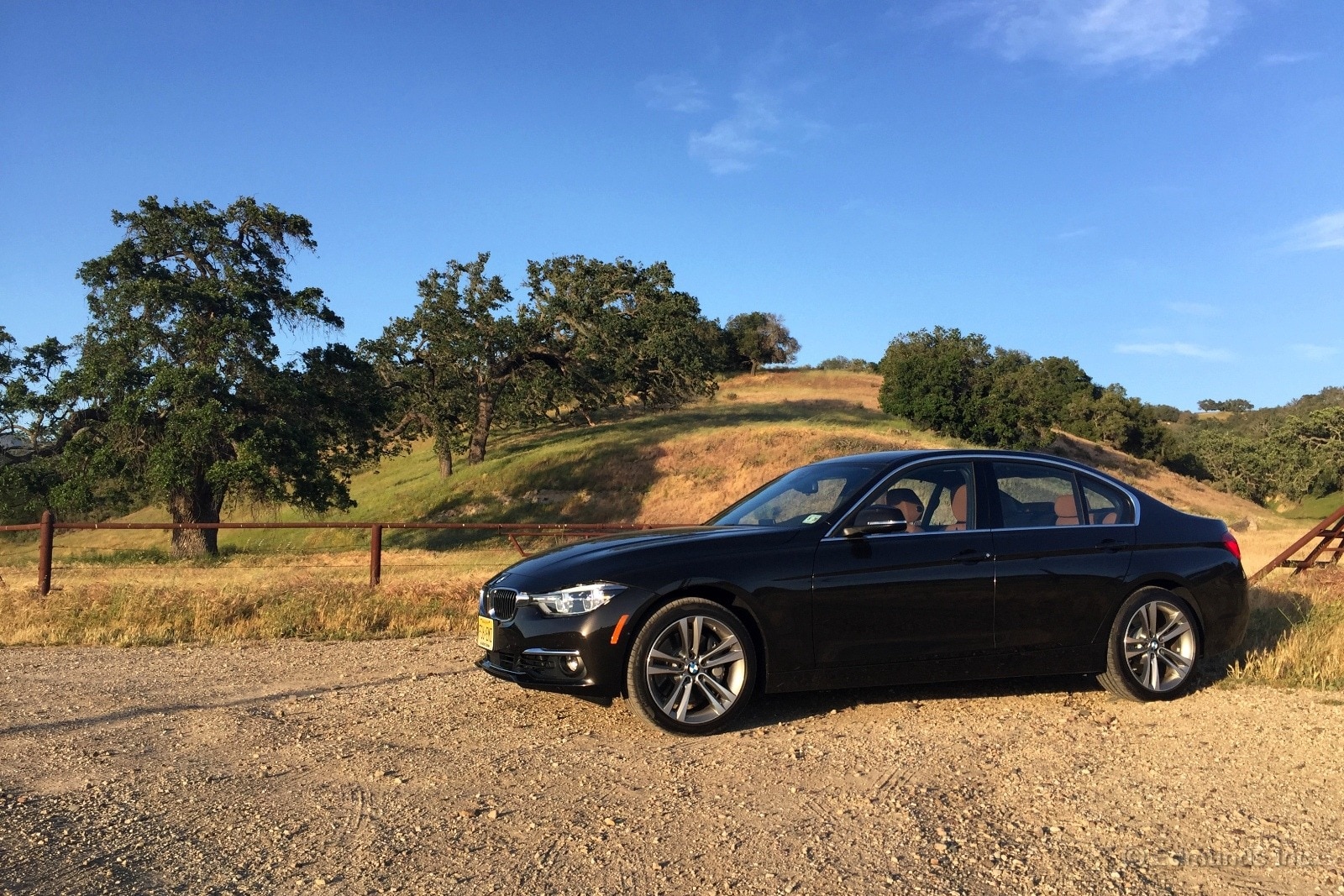
By the time this post goes live, I'll be somewhere in the Pacific Northwest with our long-term 2016 BMW 340i. The plan is to drive from L.A. to Portland, spend a few days there with a couple of friends and then proceed to Seattle for a larger reunion. Due to time constraints, I'll be sticking to the express route — Interstate 5 — on the way up, but I'm hoping to meander back down with some interesting side-trips.
So, anything you want to know about the 340i's road-trip bona fides? Leave me a comment and I'll give you my take when I get home. In the meantime, check me out on Instagram if you want to see what I'm up to. I'll be posting from the road whenever something reasonably interesting happens.
Cheerio!
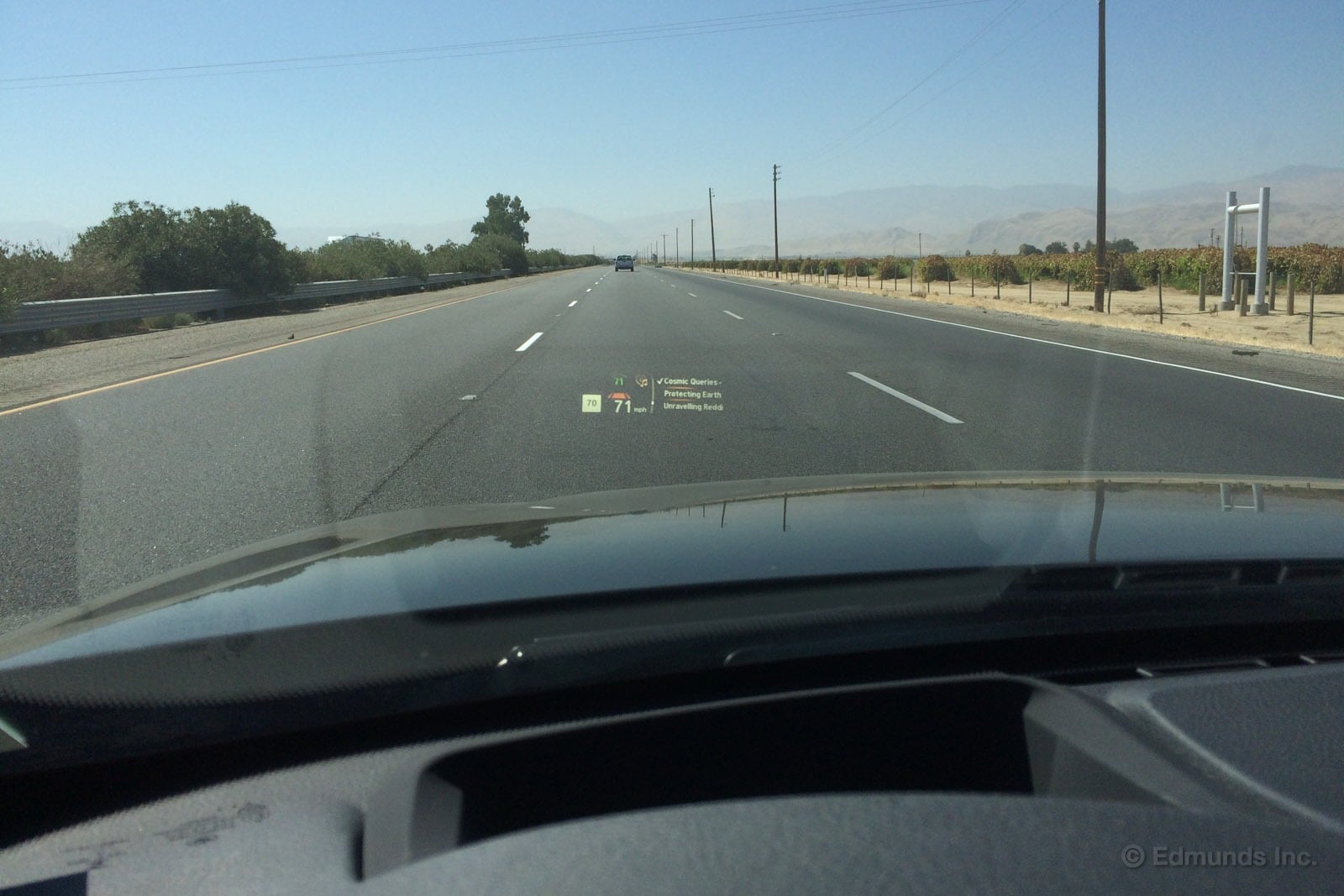
Our 2016 BMW 340i test vehicle is jam-packed with optional features. As noted in our introduction of this vehicle, it's jam-packed enough to cost a rather eye-popping $59,920. But we did get a lot of cool stuff for that price, and one of the items that has pleasantly surprised me is the head-up display.
It comes bundled in the $2,750 Technology package. This also includes a navigation system, the bigger 8.8-inch center display screen, an upgraded gauge cluster display and BMW Online and Remote services. Individually, you could probably do without one or two of these options, but for the money it's fair to expect that you're going to want them enough to go ahead and just get the package.
Do you need a head-up display? No. But as head-up displays go, the 3 Series' is an over-achiever. Most head-up displays will show you your speed and maybe a couple tidbits of info. More often than not, they display in one color.
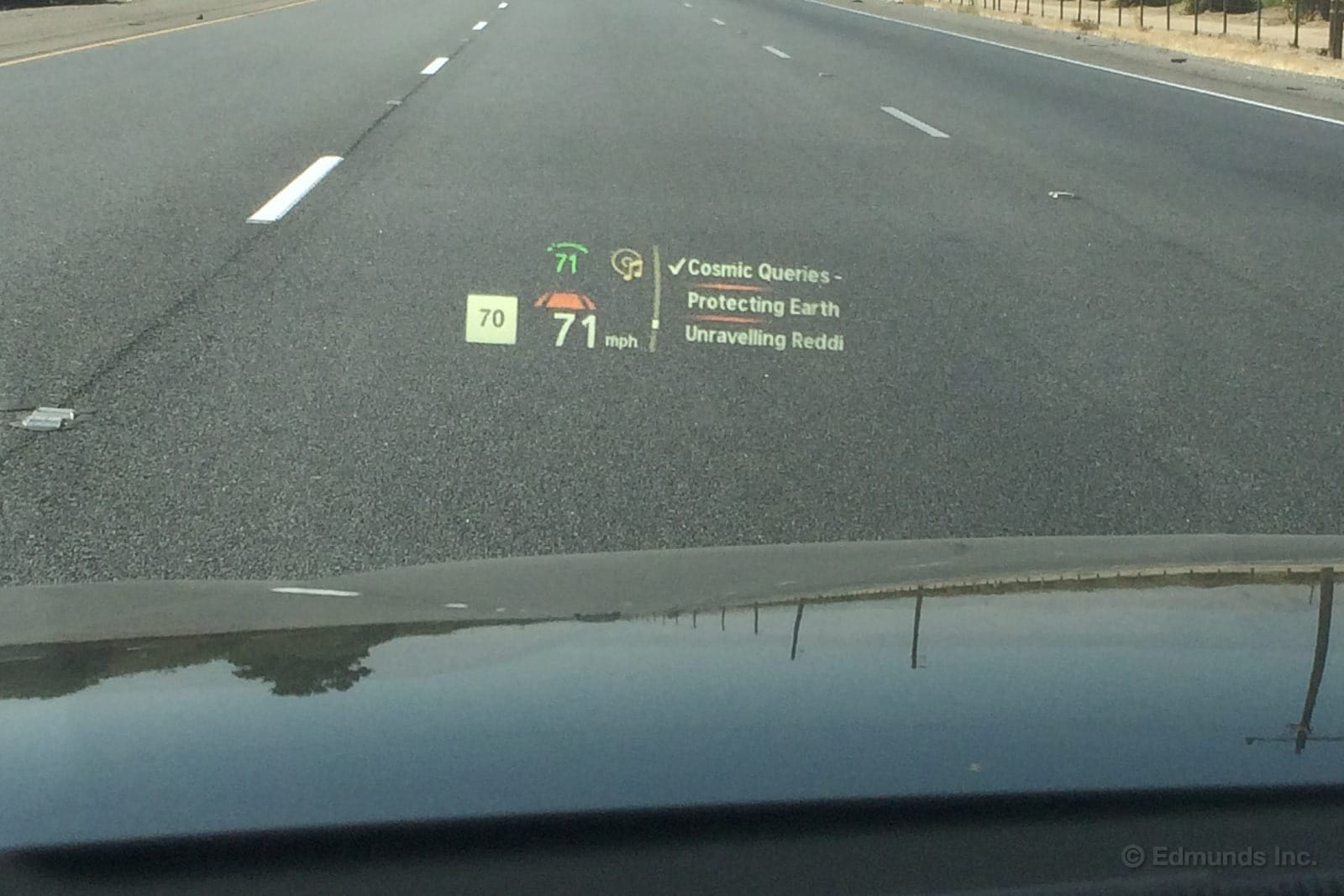
As you can see in my photo, the 3 Series' head-up display shows the car's current speed and the speed limit of the road you're currently driving on. These are always shown on the left-side of the display. Having the speed limit info readily available at a quick glance is a boon, particularly if you're driving on unfamiliar roads in a 320-horsepower sedan that eggs you on to bury the throttle at every opportunity.
If you've got cruise control enabled, it will show you your set speed in green on the top of the display. Our car also has adaptive cruise control. With this, the head-up display shows icons for following distance and vehicles ahead.
On the right-hand side, the head-up display can show audio information and navigation directions. If you use the steering wheel's audio scrolling knob to sort through a music playlist, for instance, the screen will show you the song names. It doesn't display enough to show long names but it's enough for you to get the idea. It's less distracting to look here rather than the car's central display screen.
I didn't get a picture of the navigation system in use but, similar to the audio display, it's very helpful to have right in front of you. It can show you street names, the distance until your next turn and which way you're supposed to turn. All very handy.
If you're thinking about buying a 3 Series, make sure to check this feature out.
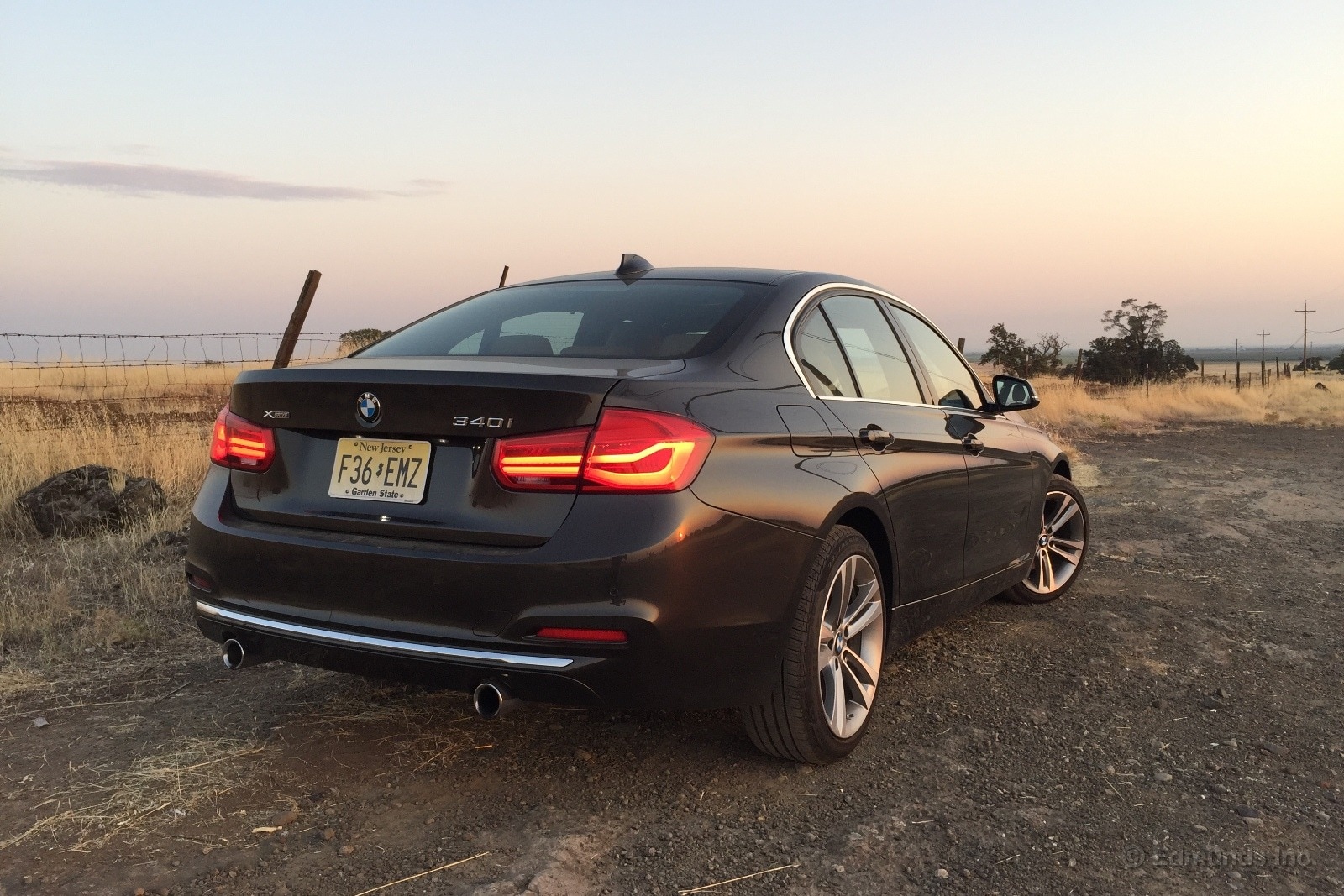
Before I embarked on my Pacific Northwest road trip, I asked you all what you wanted to know about our 2016 BMW 340i.
Got your answers right here.
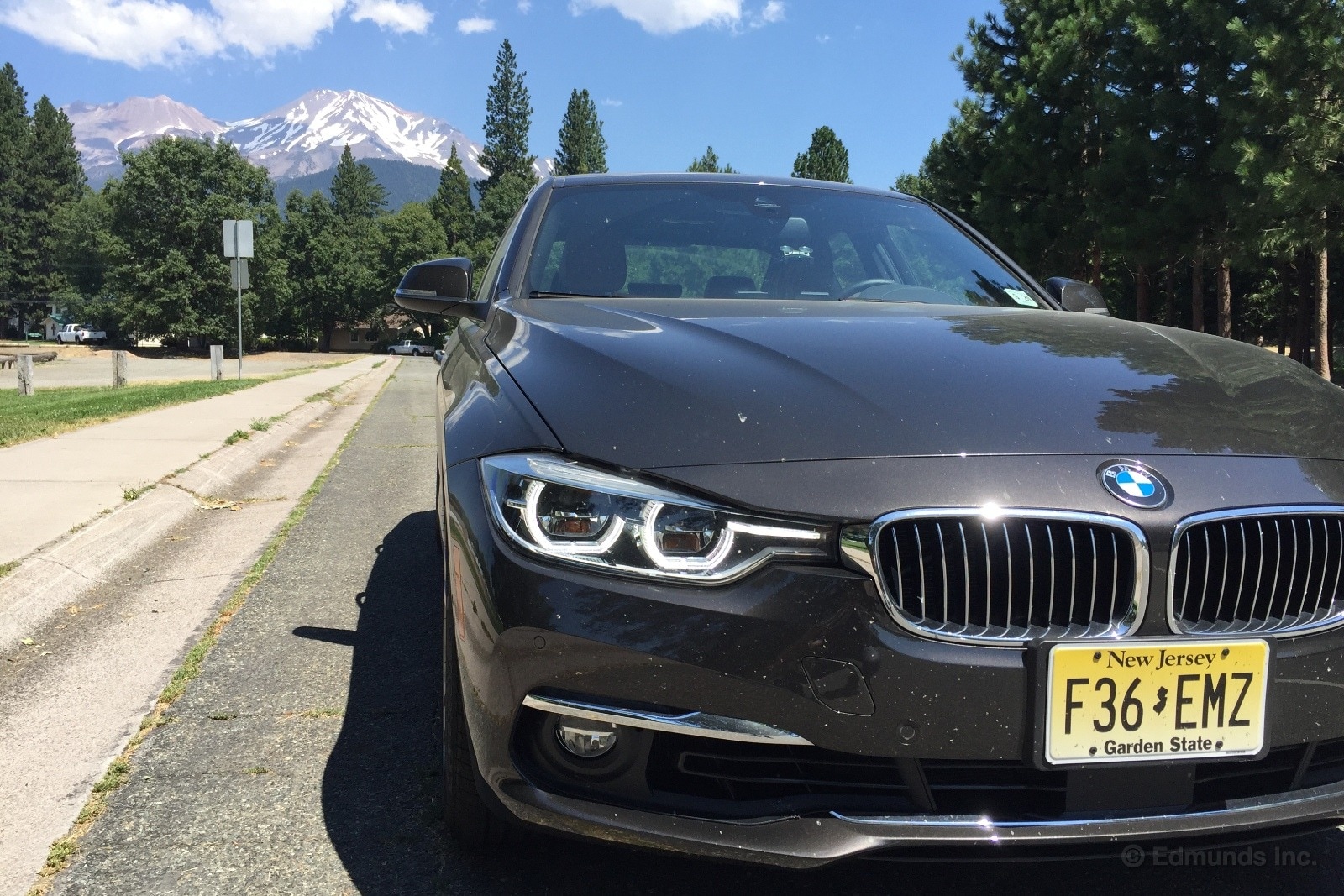
1) "How's the steering feel/feedback? This has been criticized in the F30, and I was appalled at the numb steering in a couple of early 328i's I tested, but supposedly it's been improved." — nedmundo
Tough question. Let me start by noting that the track-test impressions mentioned by s197gt are based on a very different kind of driving. Out there, our guys are pushing cars up to and past the limit of adhesion, because that's the point — it's how you evaluate lateral grip and emergency handling and so forth.
So when one of our track drivers reports that the 340i's "steering has excellent weight, and a good amount of feel from the electrically assisted steering rack. It's one of the more natural-feeling electric steering systems I've experienced in a while," I just nod and take mental notes, because I haven't taken the car to those extremes myself. Their use case, if you will, is one that I can't speak to based on driving to Seattle and back.
What I can tell you is that I spent a lot of time in "E90" (roughly 2006-'12) 3 Series cars on public roads, starting with the very first road test I ever wrote, which involved driving a sport-packaged 2008 328i sedan up Highway 1 to Monterey. On the Seattle trip in our 340i, I didn't consistently encounter twisties like those, but I did go through a number of winding, high-speed passes on Interstate 5 near Mt. Shasta. Not a scientific comparison, in other words, but if memory serves, the non-electric E90 rack had less on-center vagueness (I want to say virtually none at all) and a reassuring, locked-in firmness that the F30 rack subjectively lacks. I never felt less than secure in the 340i through those Shasta passes, and I wasn't taking it easy, but the E90 steering just had a preternatural composure and precision to it. I think it was pretty much perfect. Introduce electric assist into that equation and it's no surprise that you get something less than perfection, supposed improvements for 2016 notwithstanding.
I tried activating the 340i's Sport mode, by the way, and the steering effort went up noticeably, but I felt the other issues were not resolved. Just my interpretation of the situation, but there you have it.

2) "How is the noise isolation on highway at um 'speed limit'? On par with the current gen C class, or quite a bit noisier?" — speed12sil
This would be another tough question if I'd only been driving in Oregon and Washington. The roads up there have got to be the noisiest in the country. Best theory I've heard is that they use studded snow tires in the winter, and the studs dig up the pavement. That squares with the quietness of the freshly paved sections I occasionally encountered — makes sense that they'd be hushed initially and then degrade with each passing winter.
Anyway, if I had to judge the 340i's road noise based on those two states, I'd tell you it's terrible, forget about hearing the radio at highway speeds, and you might consider wearing ear plugs. But in California and I would assume other non-Northwest states, it's a pretty quiet car for the most part. Doesn't much matter how fast you're going. On some surfaces, it's like there's almost no noise at all, and the 340i morphs into the perfect transportation pod.
Regarding the specific C-Class comparison, my memories of the Merc aren't clear enough to pick a winner, but in our instrumented testing the 340i registered 63.2 decibels at a steady 70 mph cruise, slightly louder than the C300 4MATIC (62.6) and the short-lived C400 (62.9). For reference, the new 2017 Audi A4 threw down a 59.8 in this test, so apparently BMW has room for improvement. But I'd hardly call the 340i's noise levels problematic.
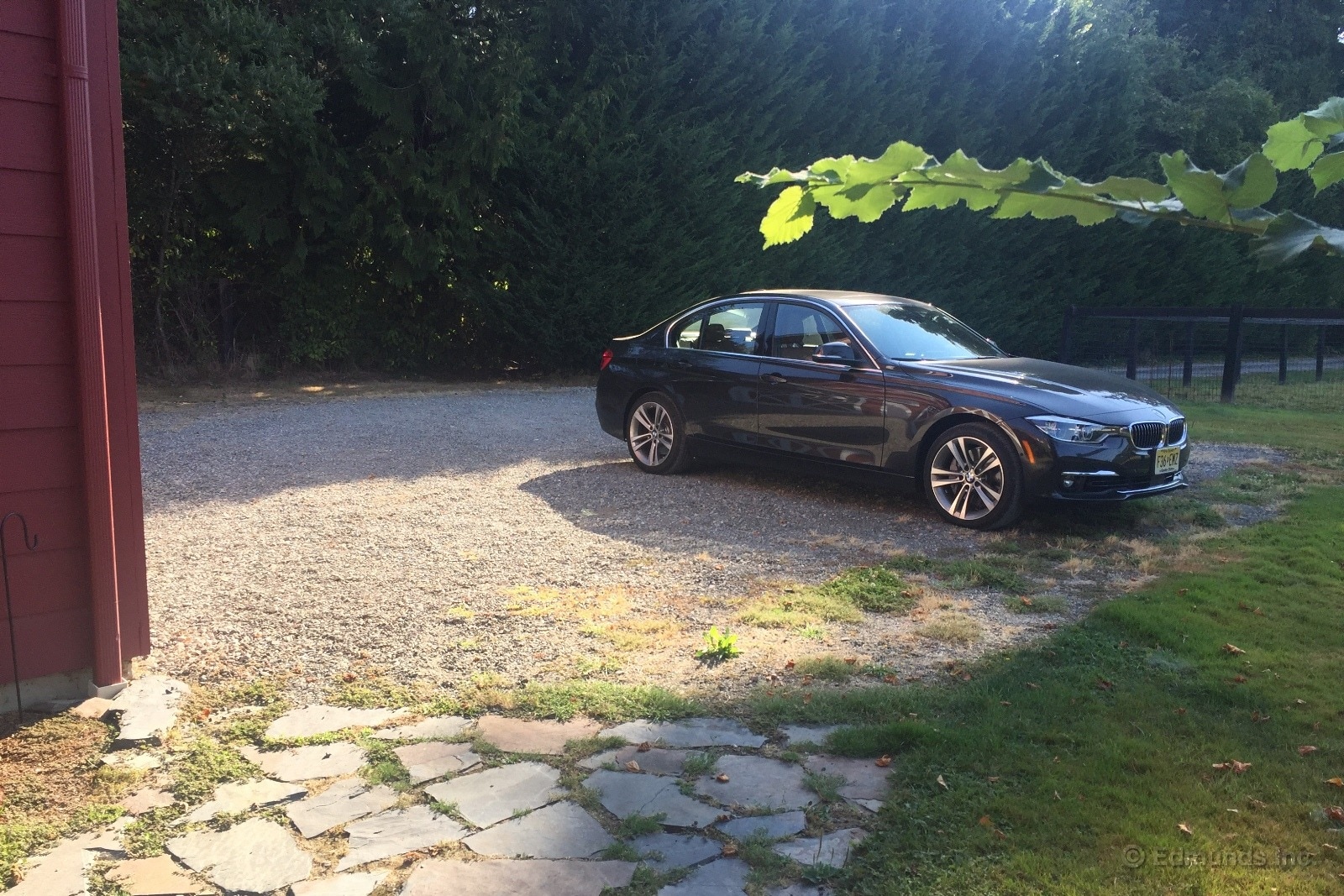
3) "How is the ride with the run-flat tires relative to competitors that don't use them. I used to own a 2007 335i (without the sport suspension) and the impact harshness from those tires was terrible. I now drive an S4 and the ride is much smoother." — kennycs4
It's not great. Multiple passengers remarked on how firm the ride was, and I couldn't argue with them. I've learned not to expect a plush ride in a European sport sedan, but this borders on not good enough. It would be interesting to try non-RFTs on this car to compare. Anecdotally, I've heard BMW drivers say it's night and day, and I remember being struck by how well the E90 M3 rode on its standard non-RFTs.

4) "How composed is the 340i at high speed? For context, I'm an E90 M3 owner who recently completed an 800 mile road trip in a 2016 320i xDrive. While the car was deeply impressive in many respects, its high speed composure left something to be desired. Above 80 mph, the soft rear suspension's deep strokes combined with the low-friction steering to reduce confidence in situations that wouldn't have raised an eyebrow in either the M3 or my previous E46 325i ZSP. TL;DR: Is the 340i more of an autobahn monster than the lower-spec F30s?" — smittync
I wouldn't say the 340i is more of a monster, but aside from the steering quibbles mentioned above (#1), I can't really complain about the F30's high-speed comportment. I know what you mean about the "deep strokes" of the rear suspension. There's a lot of down-and-up travel back there by sport-sedan standards, and given the poor impact-absorption of the RFTs, I'm not sure there's much benefit in terms of comfort. But in my experience with a variety of F30 models, if you push them, they still reward you, and that's going to be more than enough for most drivers.
Of course, if you're in the group that's not fully satisfied, you can buy a nice low-mileage E90 M3 right now for the price of a new 328i (about $40,000 to start). That doesn't sound like a bad idea.
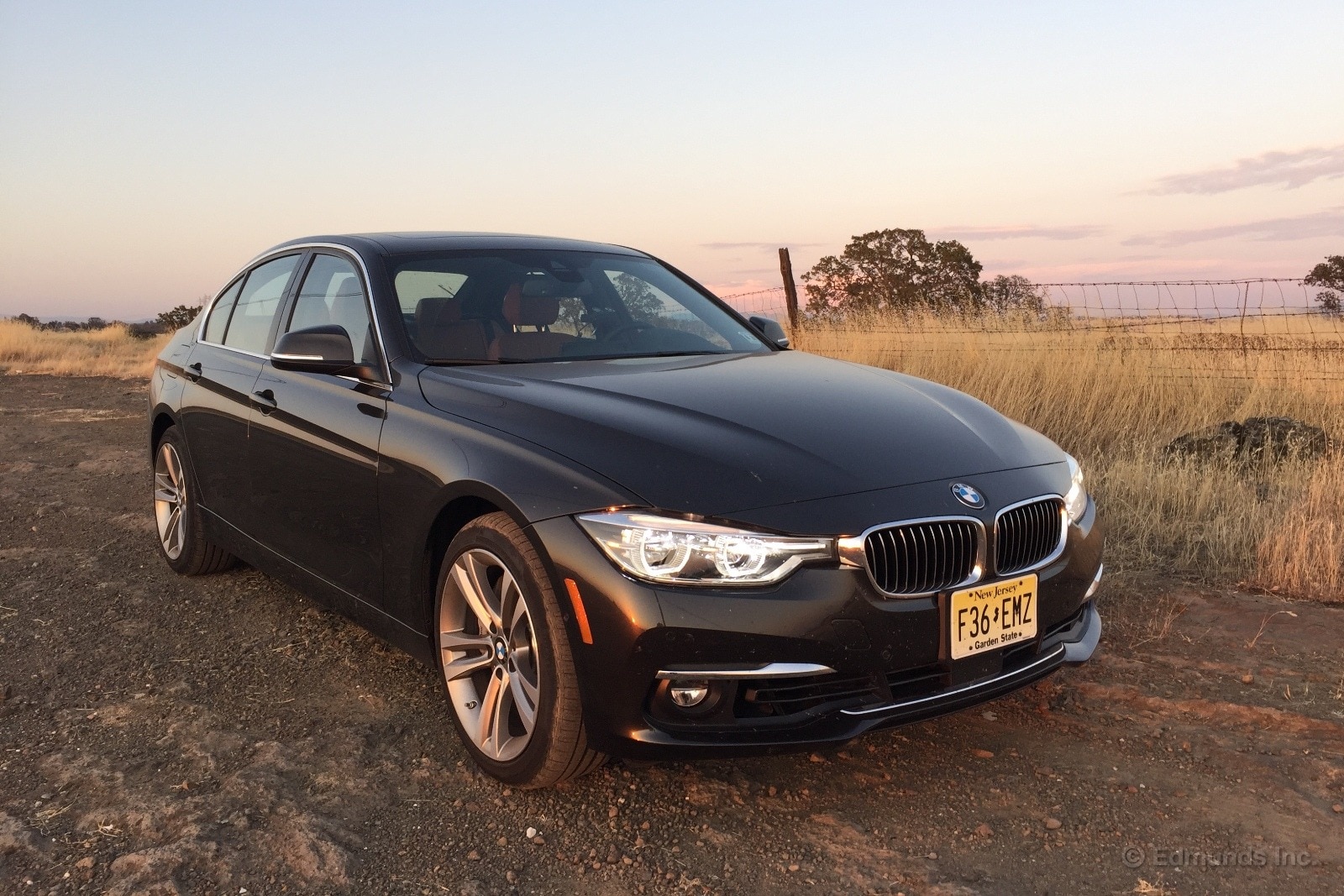
5) "As a daily driver and road trip car I would like to know more about the everyday aspects of the car. How well do the wipers, lights and climate control work? Are the seats comfortable for long rides and is there enough storage space for cups and other junk that accumulates on road trips? How is the instrument lighting at night? These are things you'll never find out about on a test drive." — allthingshonda
I'd say "just fine" to most of that. One thing I really like is the adaptive cruise control interface — there's a handy rocker switch that adjusts the speed up or down in either 1- or 5-mph increments (just rock harder for 5 mph), and the following-distance controls are similarly intuitive. I also like how the head-up display shows the current speed limit next to the speed you're going and artfully integrates the cruise-control speed when one is set.
Storage space is the only weakness on your list, as BMW stubbornly refuses to provide any open nooks or bins on the center console beyond the two standard cupholders in front of the shifter. That's barely enough room for the driver's phone, wallet and sunglasses case; the front passenger is out of luck, and so are you if you get a coffee. I ended up putting my sunglasses case on the passenger seat or in the door pocket in order to keep one of the cupholders free. Not a big deal, really, but with this car you can't do much more than nitpick.
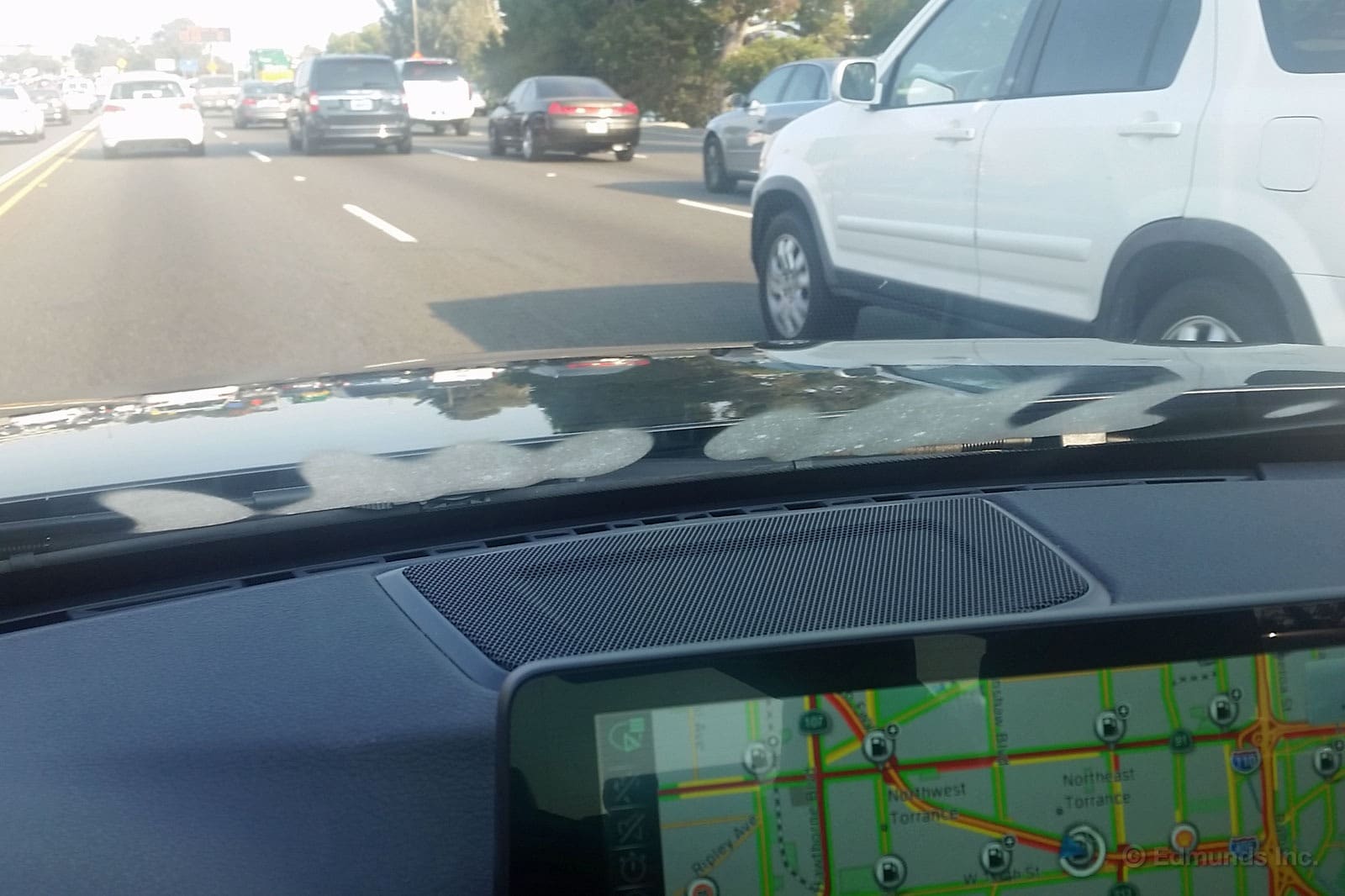
German cars are not known for having frosty air conditioners, yet our 2016 BMW 340i can freeze your fingers off with the best of them. I find myself gradually turning the temperature up as I drive home to stay comfortable in the evening.
I also noticed that the 340i's air conditioner has a tendency to create condensation at the bottom of the windshield on certain settings. Haven't seen a car do that in a while, at least not on a hot day.
If it ever gets cold around here, we'll test out its ability to defog the windshield, but that's going to be a while. A very long while.
August Fuel Economy Update - Back in Balance
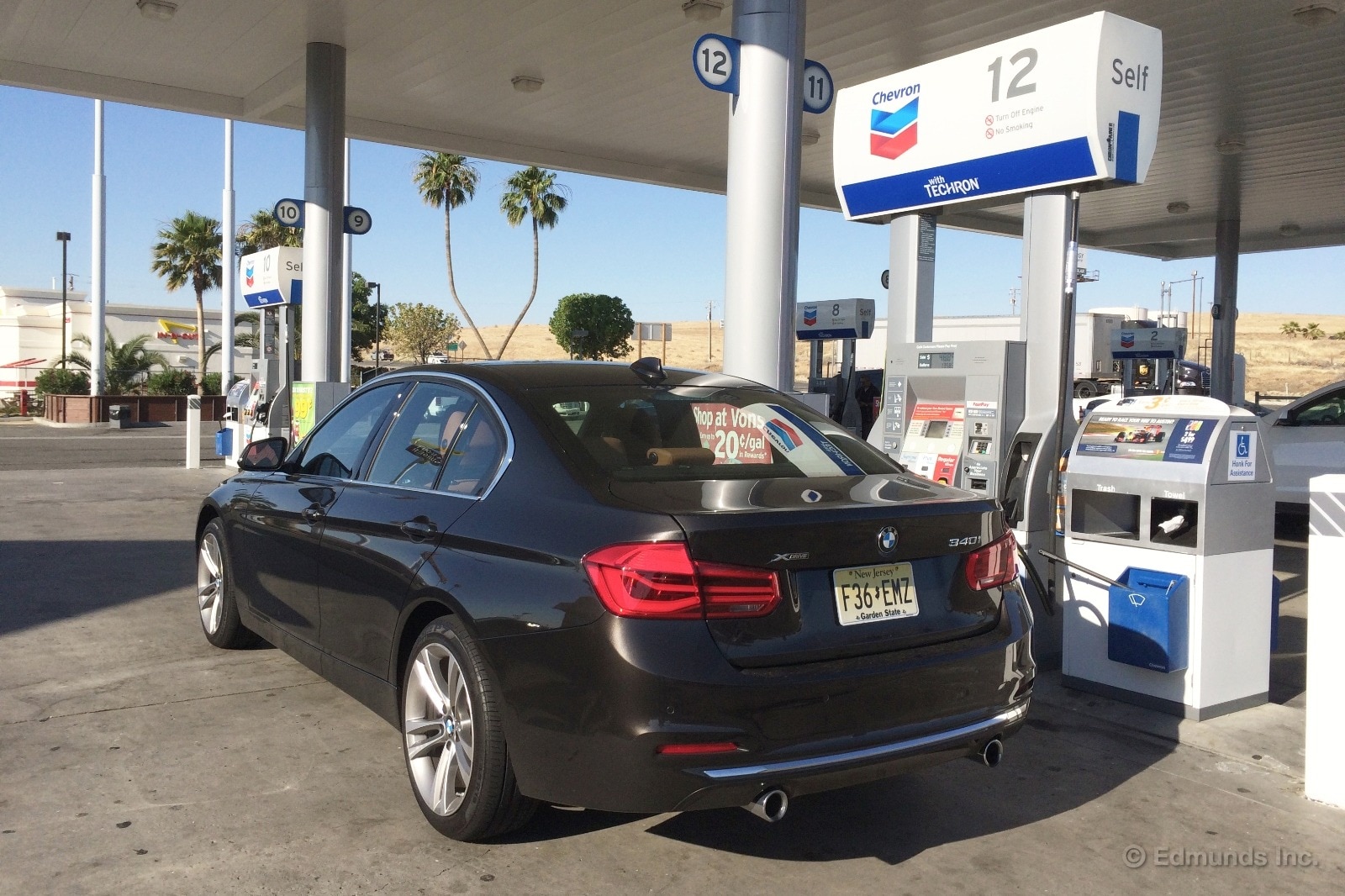
Last month we reported a dip in average fuel economy for our 2016 BMW 340i, largely due to a string of tanks inefficiently drained in LA city traffic. We needed a good road trip to help bring things back into balance, which is exactly what Editor Sadlier provided this month with a comfy cruise to the Pacific Northwest.
The long highway stretches, combined with Sadlier's impressive display of restraint, netted us a record tank of 518.4 miles and 34.6 mpg, easily besting the EPA's 33-mpg highway estimate. An all-time monthly high of 27.7 mpg was enough to push our 340i's lifetime average back above 24 mpg, which is where it was before the early summer months.
Now that school's back in session, we could be facing another low-efficiency month with the increased traffic. That may be all the reason we need to leave town again.
Worst Fill MPG: 14.2
Best Fill MPG: 34.6
Average Lifetime MPG: 24.5
EPA MPG Rating: 26 Combined (22 City/33 Highway Combined)
Best Range: 518.4 miles
Current Odometer: 9,261 miles
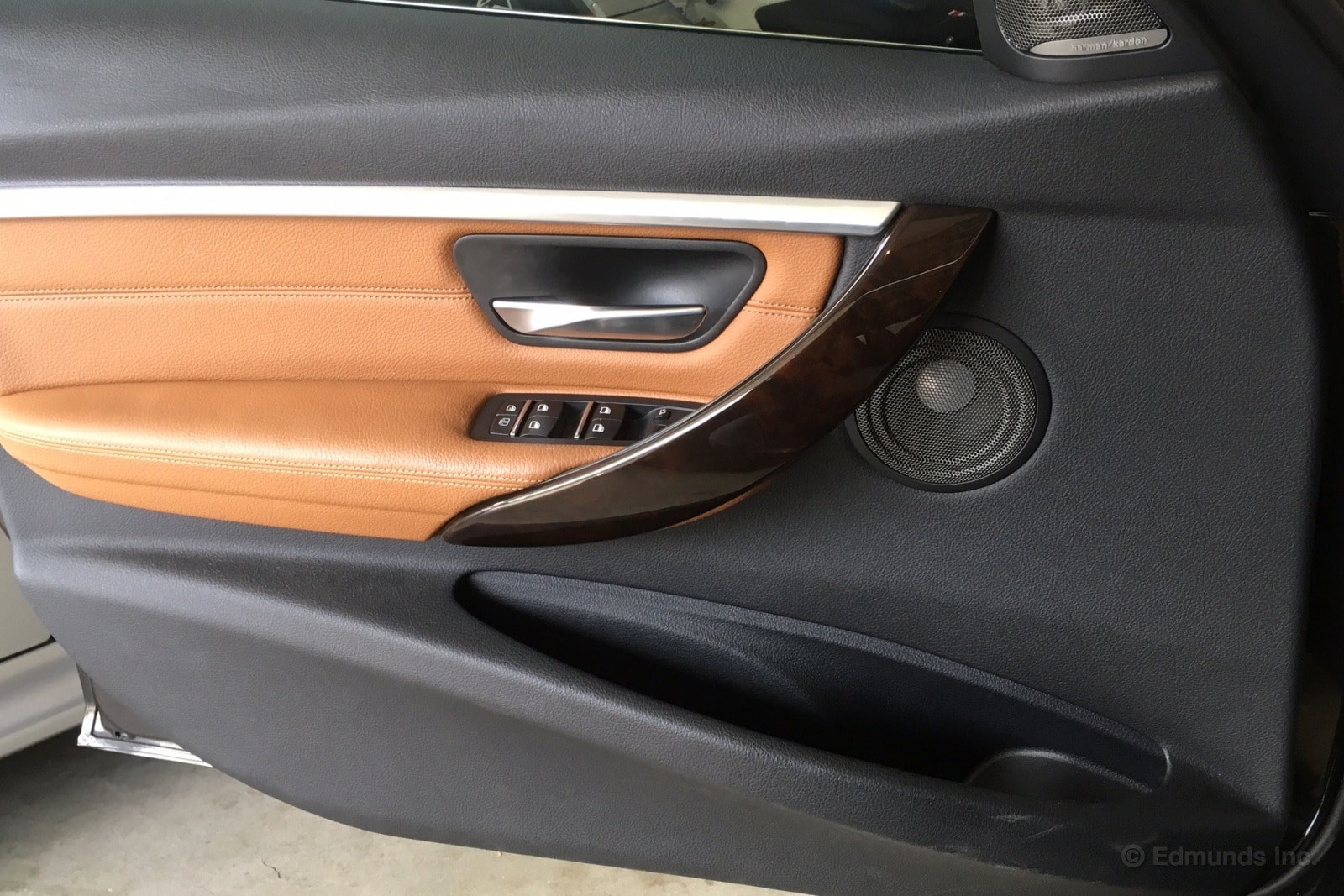
If there was one thing I didn't like about getting into our old long-term BMW M235i, it was closing the door. With the significant length and weight of the door plus the odd placement of the grab handle, it was like having a door knob mounted on the same side as the hinges.
Thankfully, the same design miscues don't apply to our current 2016 BMW 340i.
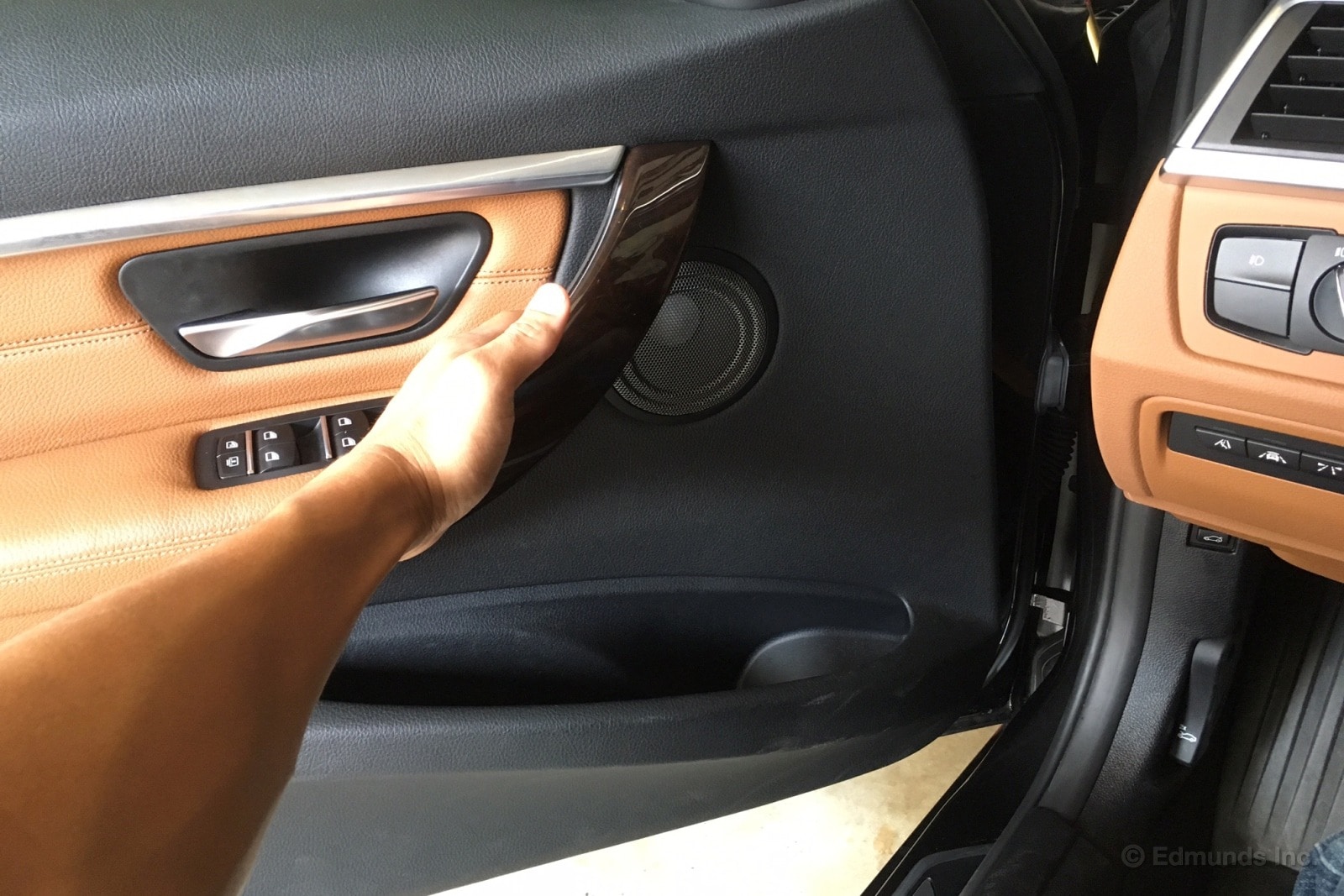
This design better suits the shorter and lighter sedan door in terms of mechanical leverage. The handle is located closer to the door's center, and it's easy to reach once you're seated inside. Personally, I find the the 3's handle more aesthetically pleasing, too.
Monthly Update for October 2016
Where Did We Drive It?
In October our long-term 2016 BMW 340i xDrive pointed north for a sojourn in Vancouver, British Columbia. It ventured there with a few stops in each state along the way. After all, in the parlance of billiards, there's a lot of green between there and here.
The route initially took us from Los Angeles to Petaluma, California, via the interminably boring Interstate 5, the idea being simply to put a big distance in early. From there we veered toward the ocean, where the good roads are, and onward to the Lost Coast, then Portland; Corvallis, Oregon; Seattle and finally Vancouver. And back. We encountered a wide range of terrain, including lumpy and unmaintained pavement, washboard dirt roads and truck-mutilated Oregon freeways. After a brief spell back at the homestead, the 340 served additional daily-driver duty in Fresno, California.
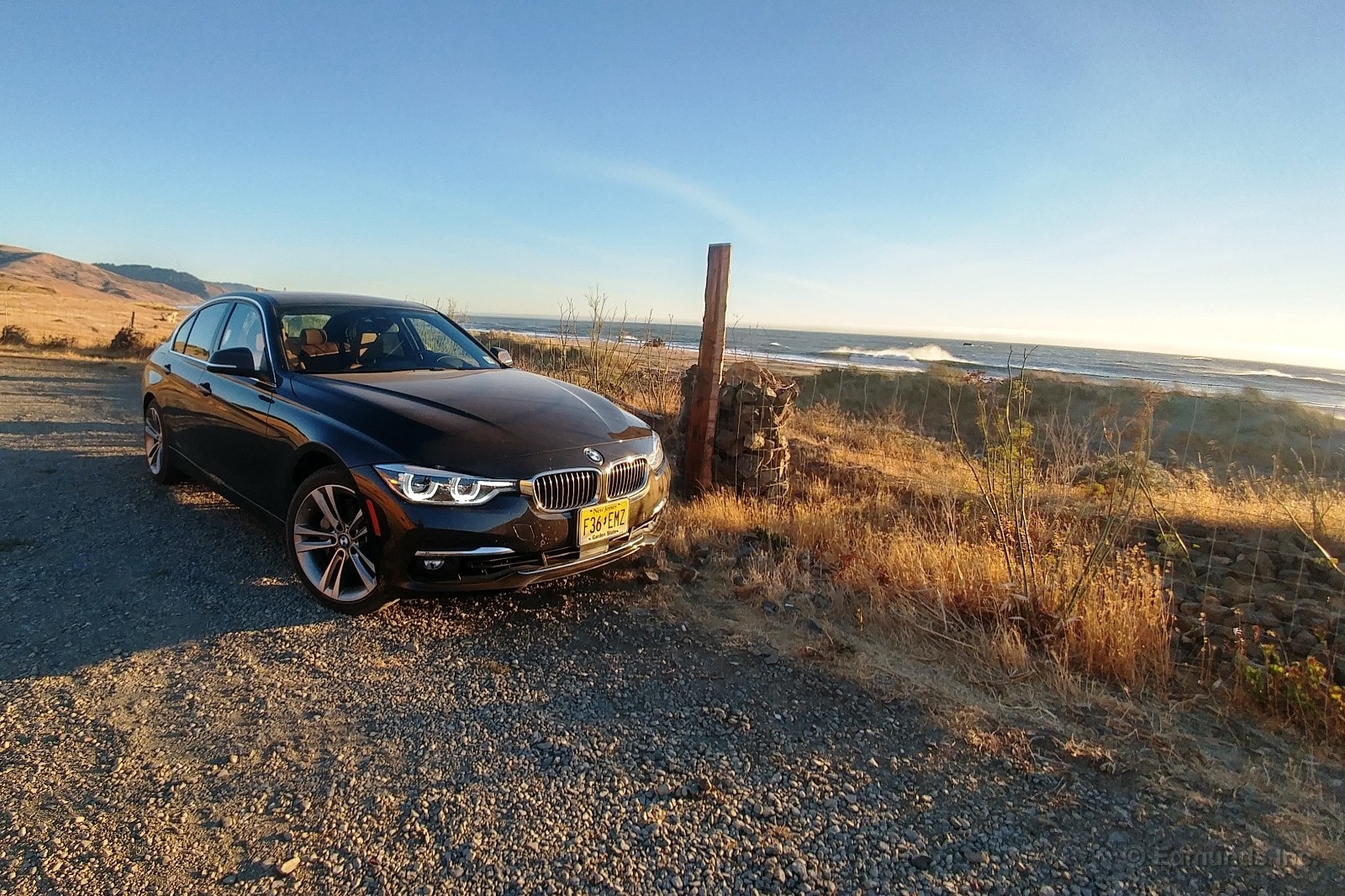
What Kind of Fuel Economy Did It Get?
Average lifetime mpg: 24.7
EPA mpg rating: 26 combined (22 city/33 highway)
Best-fill mpg: 34.6
Best range: 518.4 miles
Current odometer: 14,640 miles
Maintenance and Upkeep
No maintenance was performed during the month of October, though one peculiar occurrence will be inquired about the next time it goes in. At one point during the road trip to Canada, the 340i's plastic dashboard panel directly above the center console fell out. Just like that. This occurred after some extended driving on bumpy pavement, which doesn't excuse the barfing of the panel.
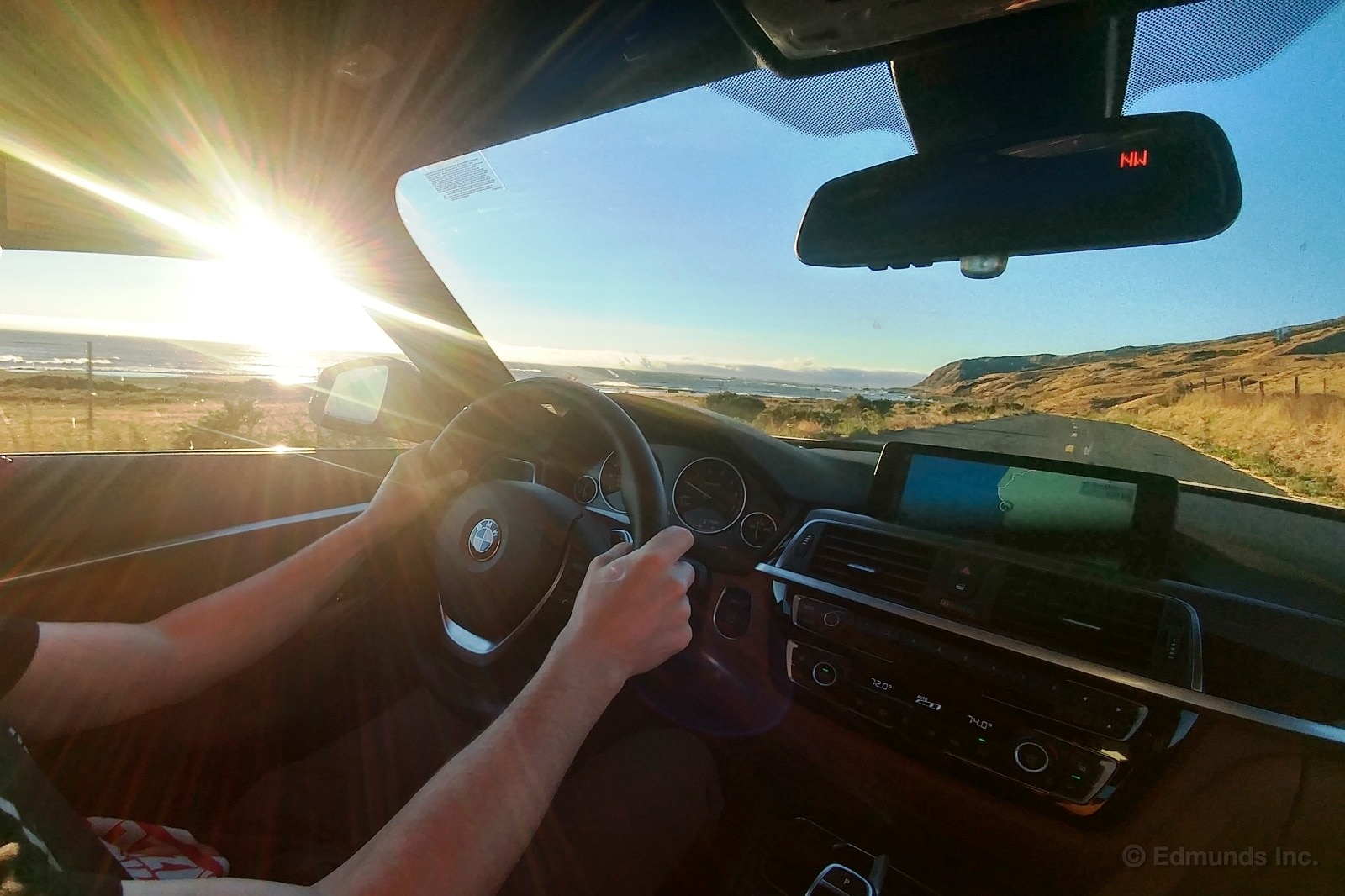
Logbook Highlights
Performance
"In the immortal words of Han Solo: 'She might not look like much, but she's got it where it counts, kid.' On the outside, our long-term test car is your typical 3 Series suburbia cruiser. Brown paint, even! But mash the gas and this 340i will out-accelerate just about every other car on the road." — Brent Romans, Senior Automotive Editor
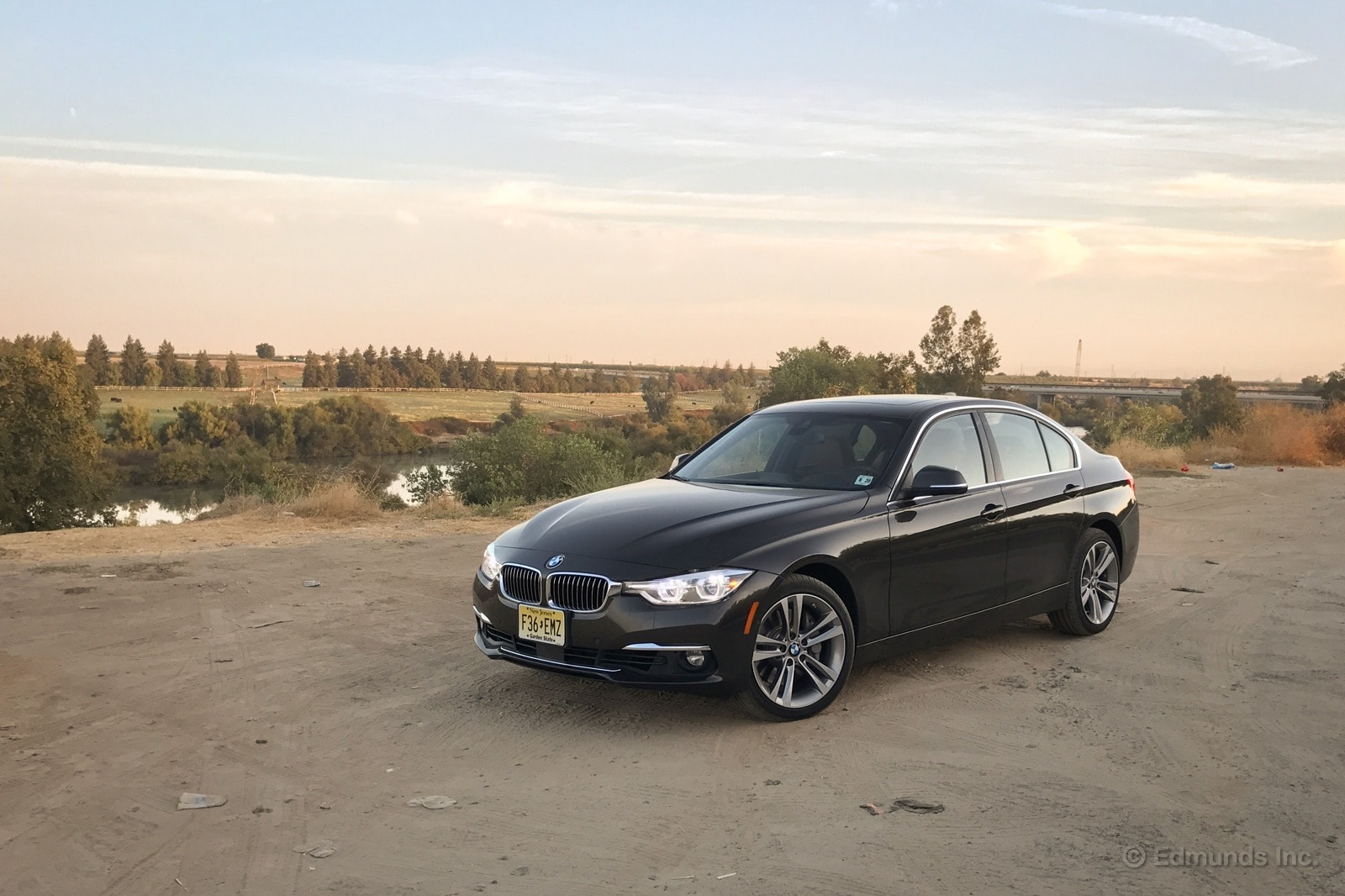
"Fantastic road-trip car. Power, control, comfort, and it's legitimately hard not to get 30-plus mpg. The F30 3 Series has been knocked around by the automotive press for its 'steering feel' and such, but for my money, this 340i is the best car in its segment." — Josh Sadlier, Content Strategist
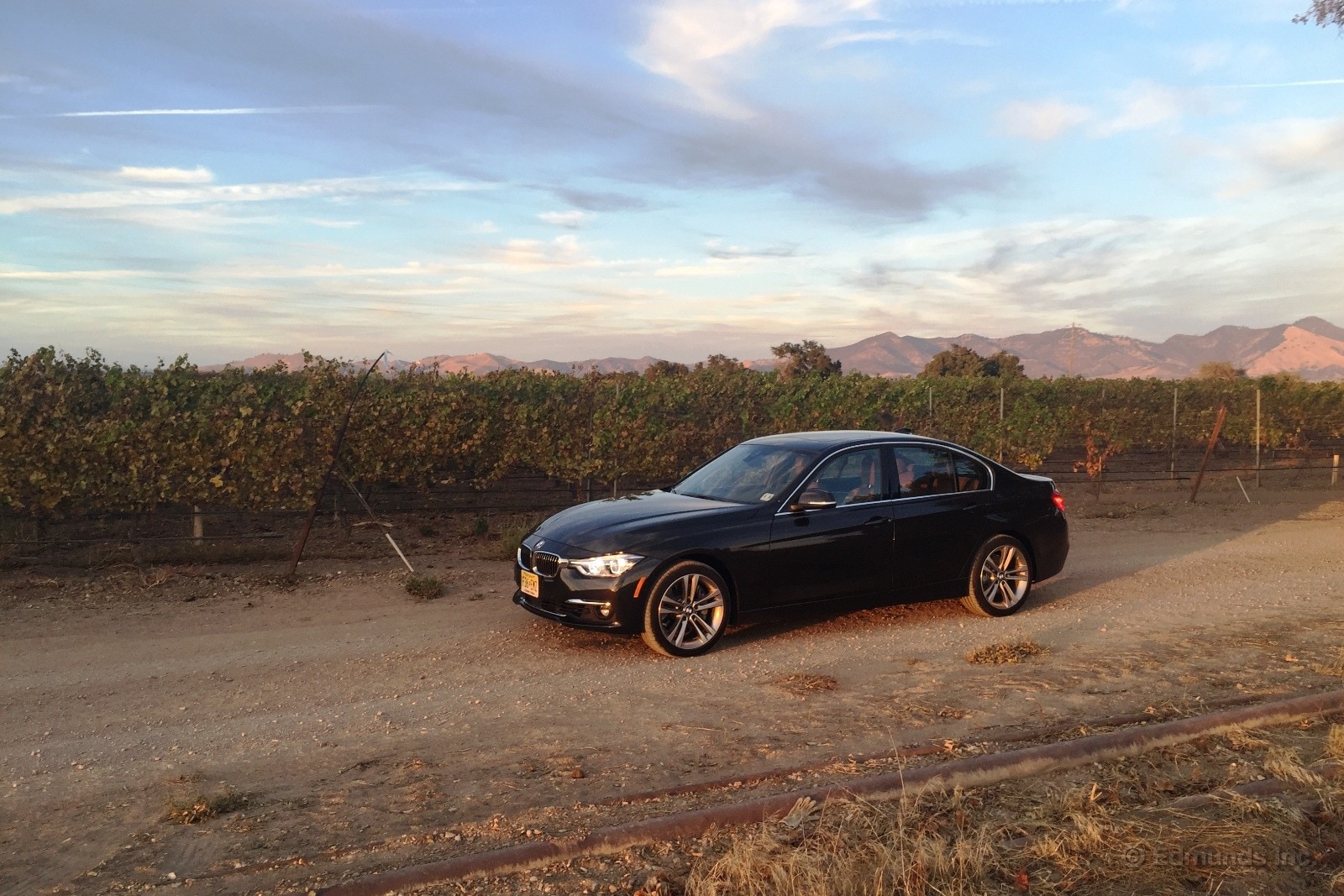
Interior
"OK, so I gave our BMW 340i praise last week about its interior design. But this trim piece below the climate controls is disappointing. It's not quite the same color shade as the rest of the dash, and it doesn't feel solid or high-quality. In fact, I can easily pull it off with just a few fingers! As Donald Trump might tweet: Sad!" — Brent Romans, Senior Automotive Editor
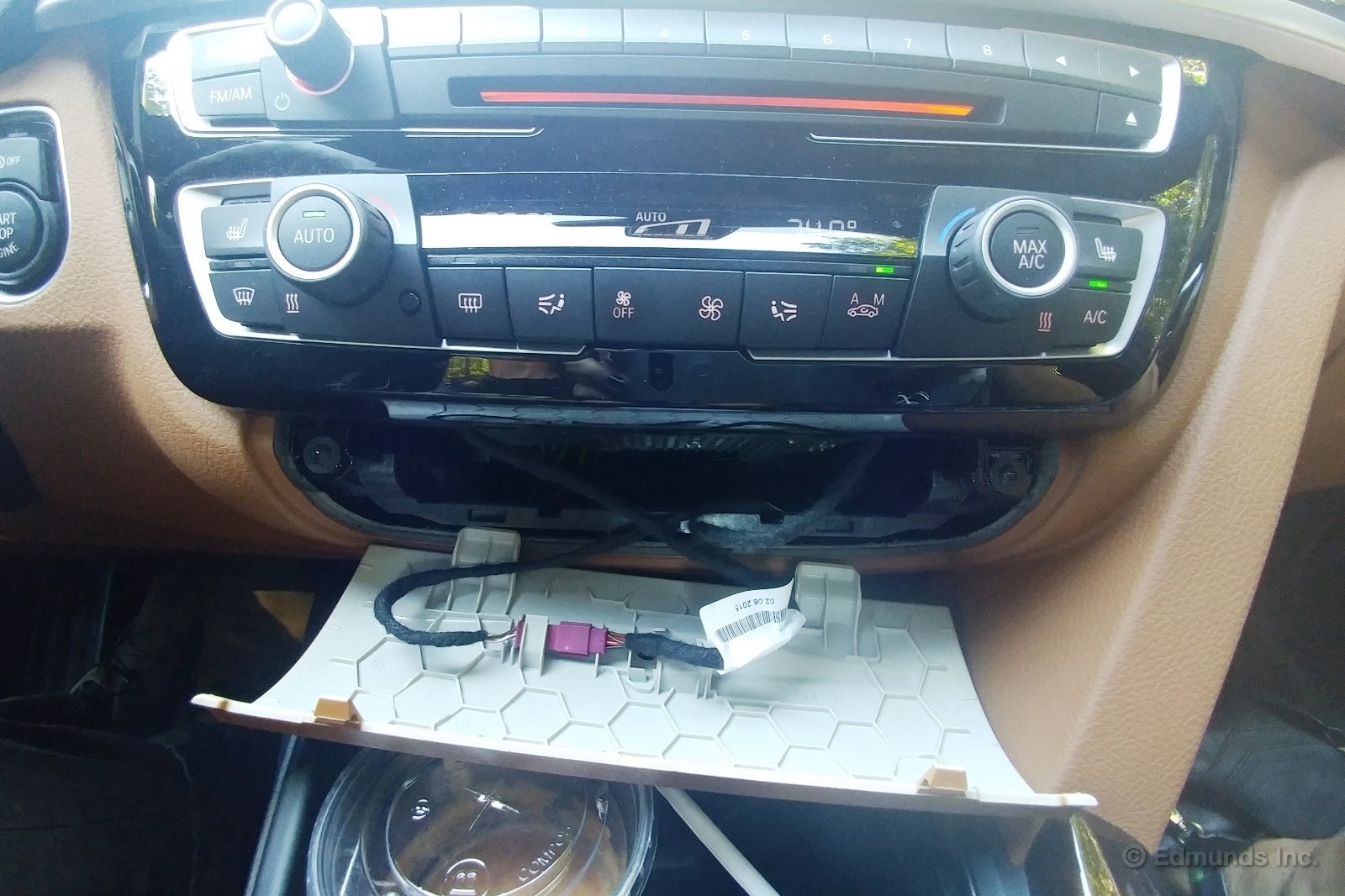
"The panel that Brent noticed is loosey-goosey is, in fact, precisely that — it vomited out of the dashboard of its own accord while I was driving on rural California roads. The panel remained tethered by a wire fastened to its underside, so it sort of flopped around on the center console until I could reach a safe stop. After I stopped laughing, I gave the panel a cursory inspection to determine if it was broken. It appeared to be intact, so I pushed it back into place. Apparently, it does not have a very robust mooring in the dash, considering Brent was so easily able to remove it. Not saying he has small, weak hands or anything. Just saying." — Jason Kavanagh, Engineering Editor
Technology-Audio
"This car has one of the loudest stereos in our fleet. Seldom am I able to turn something up to 75 percent volume and say, 'Yep, that's enough,' but with this car that's definitely the case. The sound quality above those levels is still good as well. And this is all when I'm playing music via Bluetooth, which normally has a lower volume than other sources. Good on ya, BMW." — Travis Langness, Automotive Editor
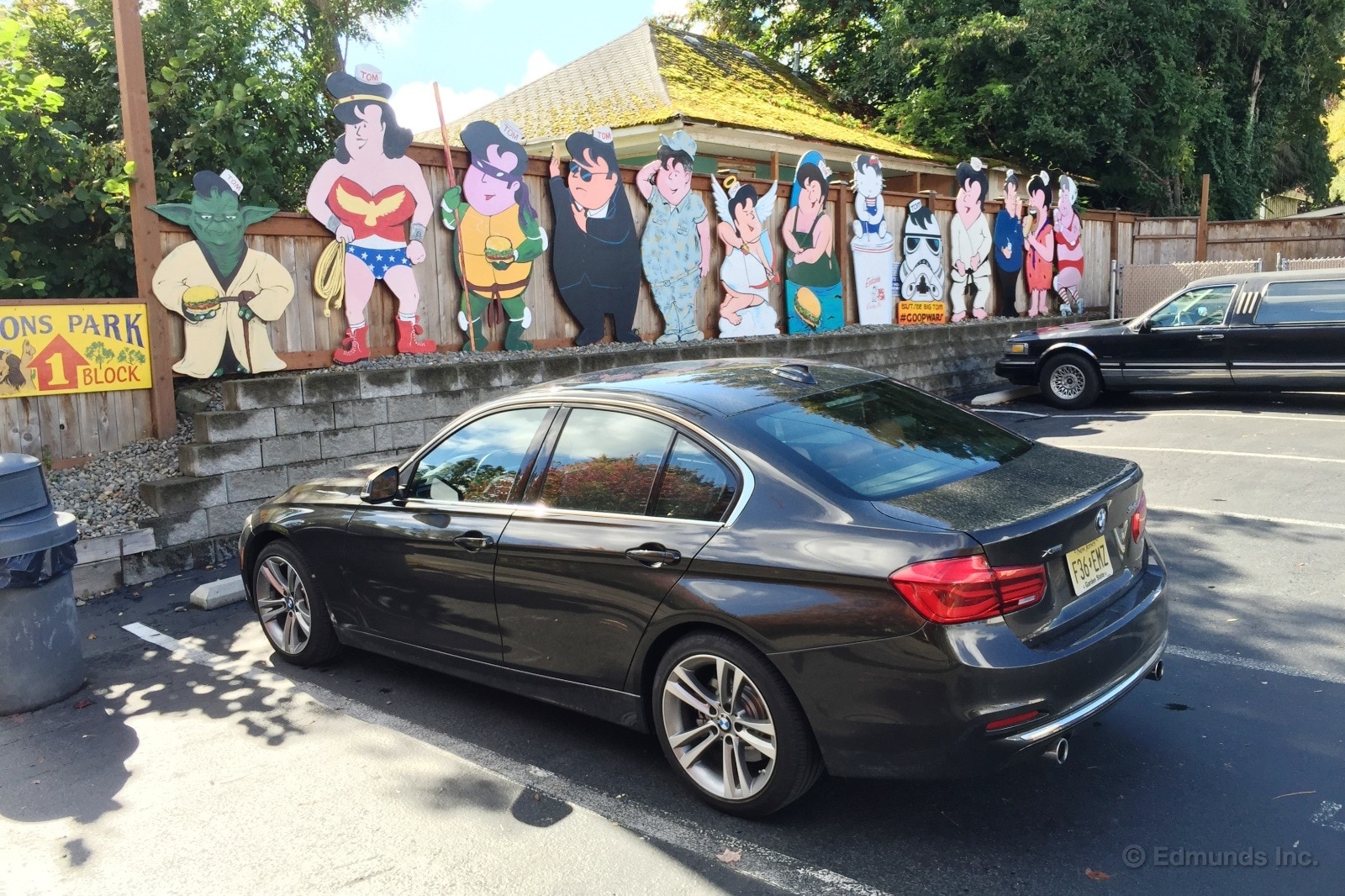
Our $60K 3 Series Is Missing Something
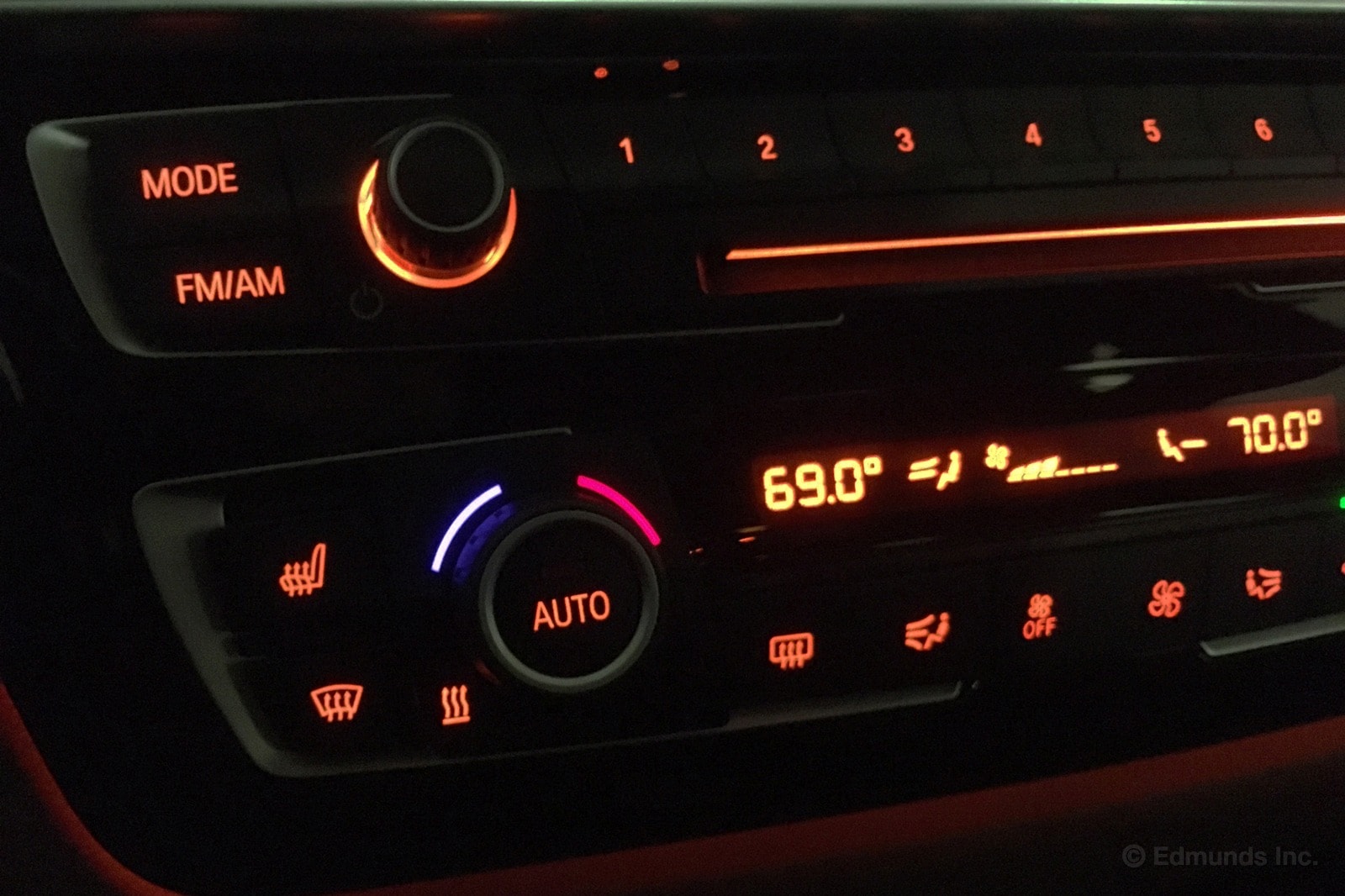
Our long-term 2016 BMW 340i seems like it can do no wrong. However, BMW seemingly forgot about the feature that we warm-climate dwellers value as much as the rest of the world values catching rare Pokemon.
I am of course referring to seat coolers, or ventilated seats, or the greatest vehicle feature since air-conditioning. You won't find it in our $60k 340i, or in any 3 Series, for that matter.
My sister is looking for a new car to replace her beloved Audi A4 2.0T Quattro (with a proper six-speed manual gearbox). She was here in Los Angeles a few weeks ago, visiting from another warm climate, and I took her for a ride in the impressive new 2017 Jaguar F-Pace SUV. Her main takeaway from that ride was that her next car needed to have seat coolers. I guess she won't be looking at a 3 Series.
By comparison, BMW's main competitors in this space — Audi, Mercedes-Benz, Lexus — all offer seat ventilation as an option. In fact, Kia managed to let this interior essential trickle all the way down to its Soul + model. That's right, you can get a 2016 Kia Soul + with seat ventilation for less than $25,000. I let my sis know.
So if you were beginning to think that our 340 was perfect, I'm here to tell you it isn't. But it's still my favorite car in the fleet.
Monthly Update for November 2016
Where Did We Drive It?
We drove our 2016 BMW 340i about 1,500 miles during the month of November. It was an an uneventful month, truth be told. But it rained here in Southern California (something of an event!) and that gave us a chance to test out our car's traction-enhancing all-wheel drive. We also visited a BMW dealership for some warranty work and impressed visiting family members during Thanksgiving. All and all, it was a solid month for our 340i.
What Kind of Fuel Economy Did It Get?
For the month, we averaged 25.3 mpg. That's right at what the EPA says to expect for a 2016 340i with all-wheel drive. You might even consider this to be better than expected given how compelling it is to give the 340i the spurs and take advantage of the turbocharged engine's 320 well-bred ponies. The same could be said for our lifetime average, which is holding steady at close to 25 mpg.
Average lifetime mpg: 24.6 mpg
EPA mpg rating: 25 mpg combined (22 city/32 highway)
Best fill mpg: 34.6 mpg
Best range: 518.4 miles
Current odometer: 16,408 miles
Maintenance and Upkeep
When I brought our 340i in for a oil change service back in August, the dealership wasn't able reset the car's oil change indicator. A diagnosis eventually led to the discovery that our car's oil level sensor was defective. At the time, though, the dealership didn't have the part (it had to be special-ordered from Germany). I decided to just wait until a more convenient time to get our car fixed.
This month, at the 16,109-mile mark, I took the 340i to my local BMW dealer (BMW Fresno) to have the sensor ordered and installed. It took about half a day and was covered under warranty. From the service invoice: "As per previous diagnosis, found faulty oil level switch. Drained oil into clean container. Removed and replaced oil level sensor and reinstalled oil and reset lights."
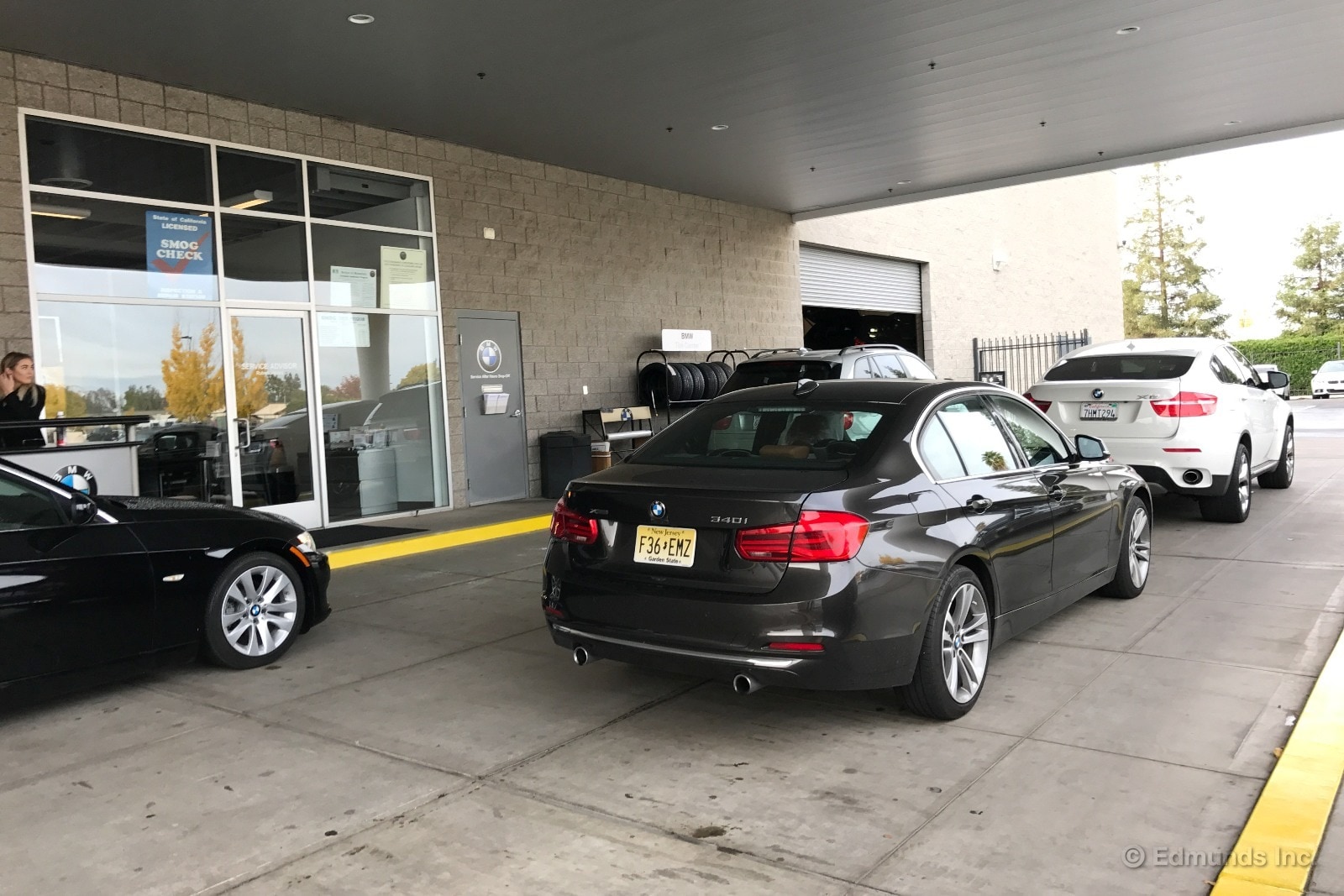
Logbook Highlights
Performance
"Our 2017 BMW 340i's handling capability does little to impress. This isn't a luxury sport sedan that inspires me to seek out curvy roads or take the long way home, nor is it a willing or energizing sedan the way I'd hope a 3 Series would be. Much of the blame could go to the lifeless steering. It provides little feedback or a sense of control. On occasions when I've thrown our 340i into a turn, it feels heavy, too. The good news is that our 340i is a secure and stable sedan. But it's just not much fun when the road bends." — Brent Romans, Senior Automotive Editor
"We've got an all-wheel-drive 340i, as indicated by its xDrive name. It's pretty much unnecessary considering it's sunny and warm about 95 percent of the time in Southern California (which is where Edmunds is based). But it did rain today, and that gave me a chance to see what happens when you give the gas pedal a solid whack. Answer: It's the same outlandish acceleration as when the pavement is dry. No wheelspin or drama, just warp speed. Whee! Our 340i is an all-season sport sedan." — Brent Romans
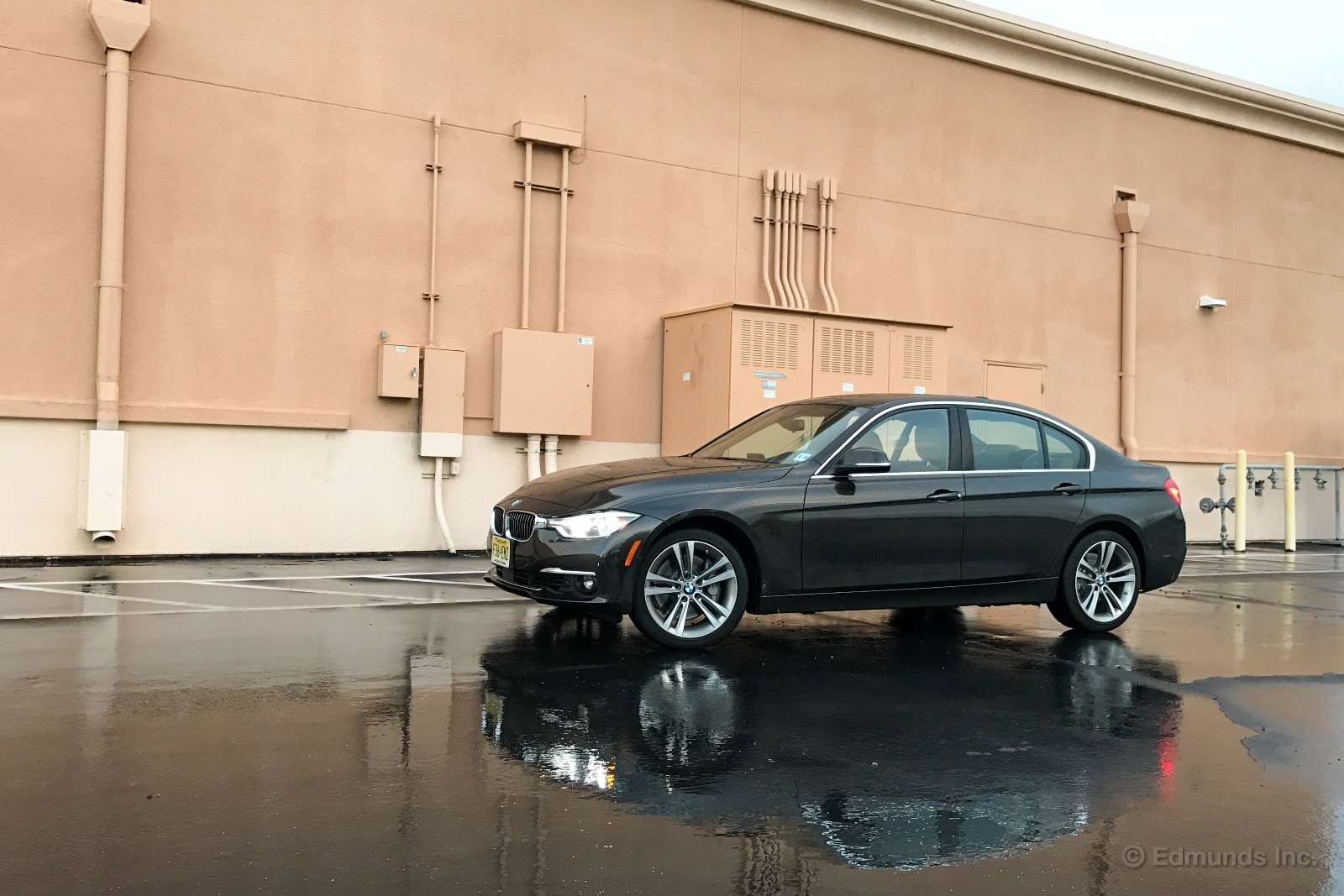
Maintenance
"I hopped into our 340i this morning and noticed that the tire pressure warning light was on. It's getting cold here in California (cold for us thin-skinned Californians, anyway), and experience has shown that low pressure indicators often pop up because of the lower temperatures. But you never really know, right? It could also be an actual tire puncture. Thankfully, our 340i provides very useful tire pressure information. It shows up on two displays: a basic one in the gauge cluster and a more detailed one on the central display screen. By monitoring the tire pressures, I confirmed they weren't dropping further, so it was indeed just the cold temps that had set it off. I inflated our tires up a bit to compensate for the colder temps, and all is well again." — Brent Romans
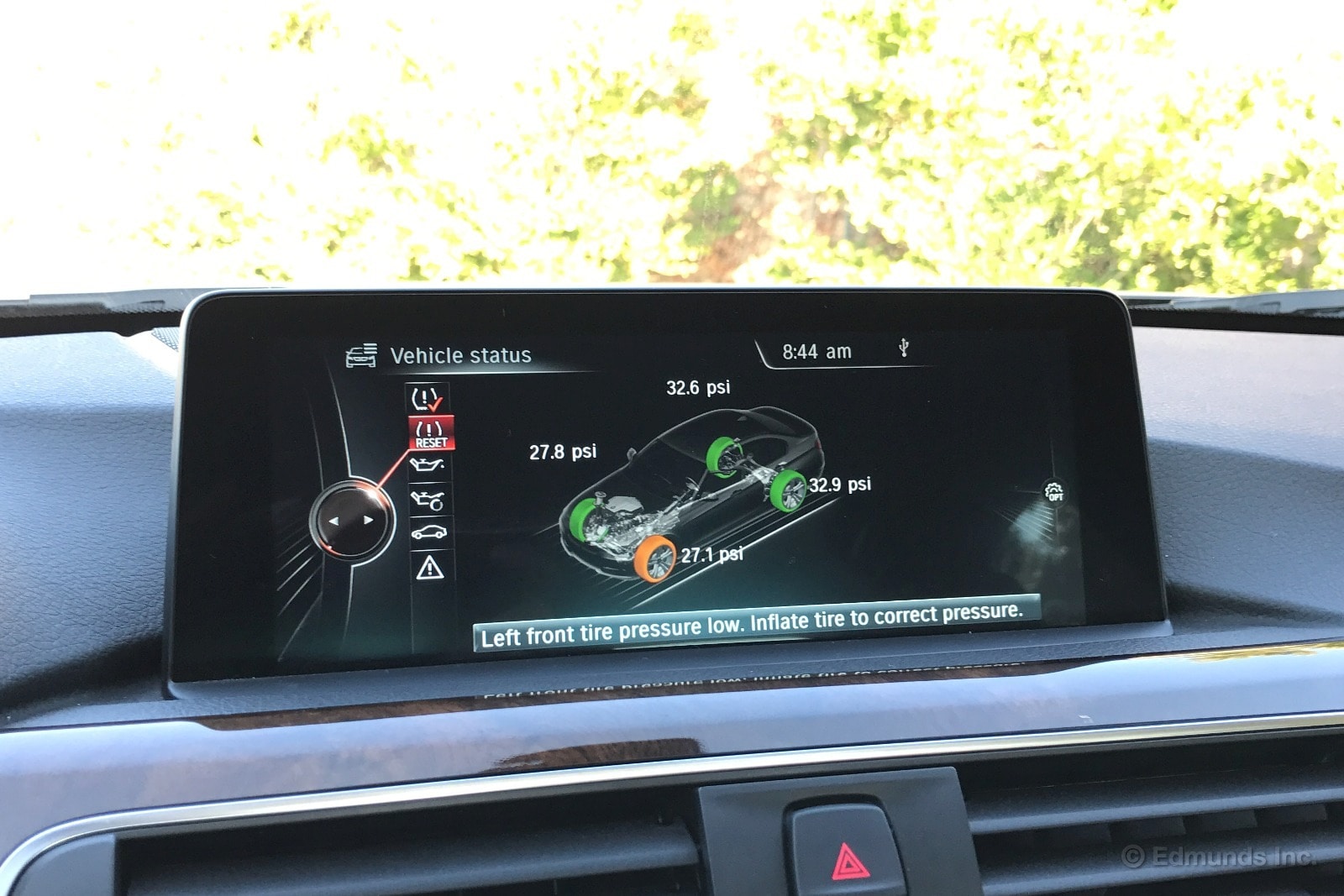
Cargo Space
"Although the 3 Series may have grown over the years, it's still not quite the full-fledged executive sedan you might think it is. Take the trunk for instance. You can barely fit one standard size golf bag in it. If fact, I had to take my driver out just to get it in there without bending anything. Of course, if you really had to fit another bag in there, you could always fold the backseats down. Three bags isn't going to happen without a little creative packing." — Ed Hellwig, Executive Editor
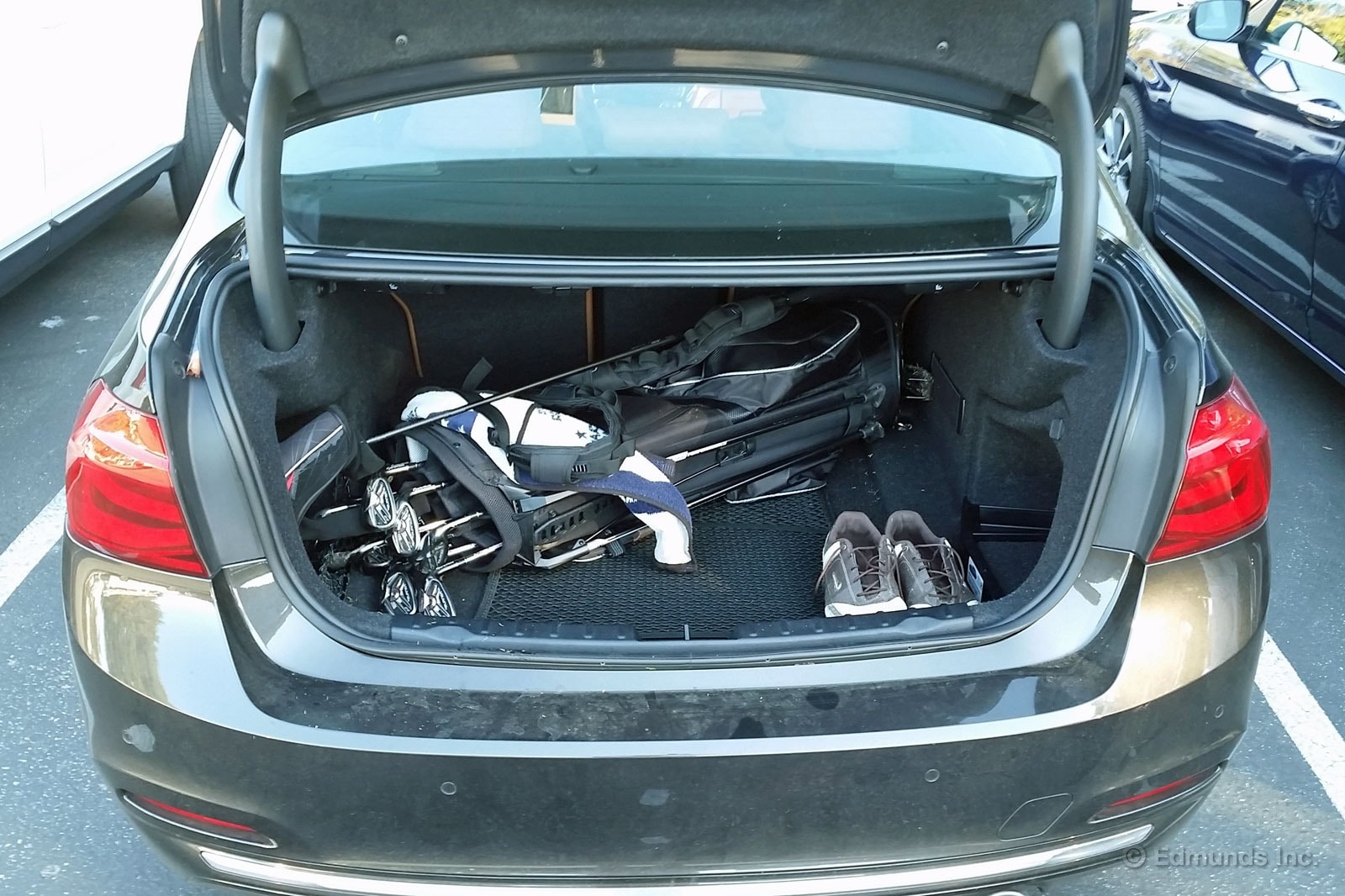
Technology-Audio
"Is this BMW's idea of helpful traffic information? There's way too much data crammed onto the navigation screen. You can't see the difference between the highway traffic and the surface streets. It's a mess and far from helpful. It should default to highway traffic only and make the streets a different color. Otherwise it's just a maze of colorful lines that mean nothing." — Ed Hellwig
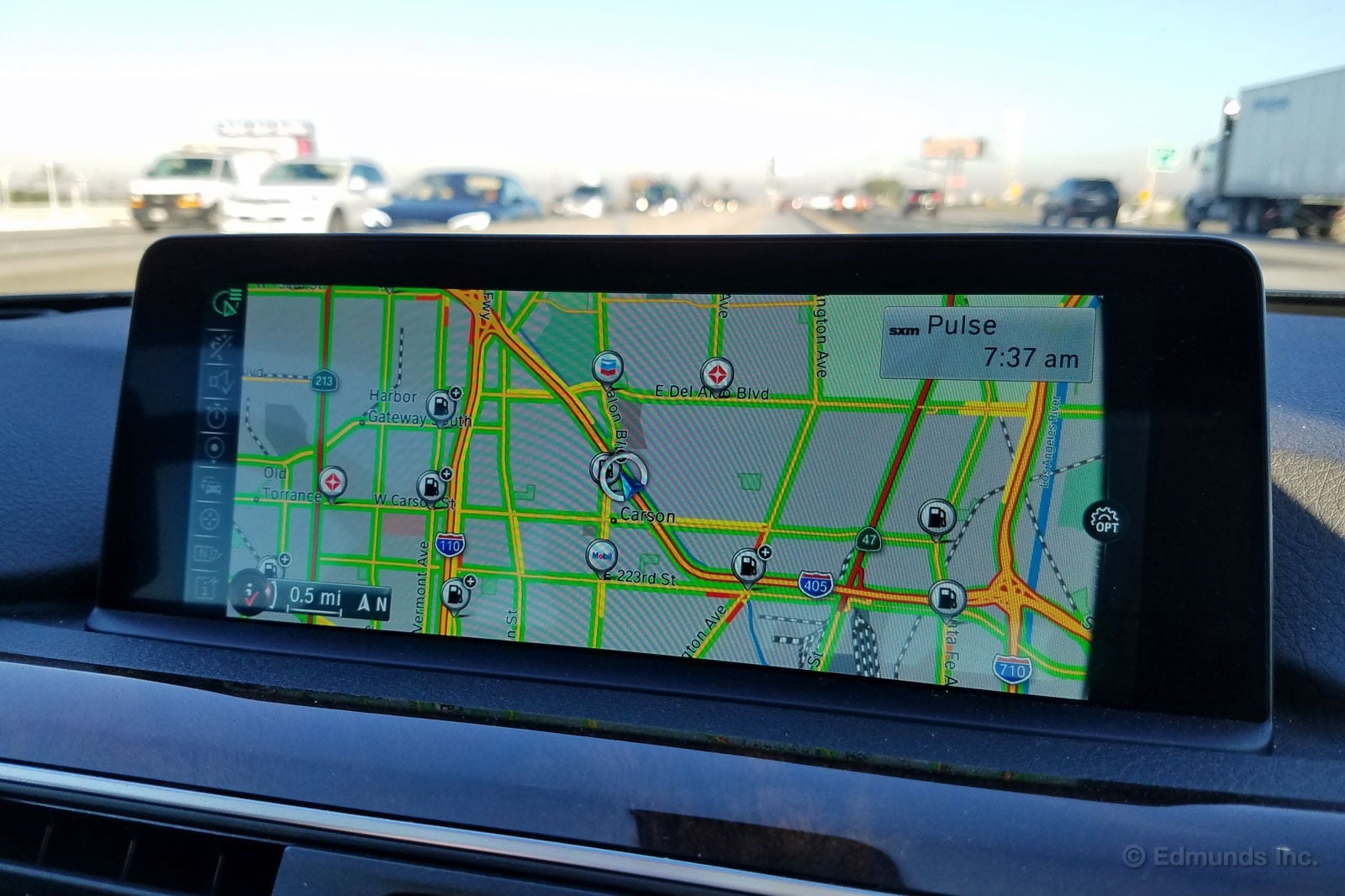
"Compared to many touchscreen infotainment interfaces, BMW's iDrive is harder to learn. There's more of a learning curve required to know how to make it work and find what you want. But the good news is that once you learn it, it's a superior interface. Using the knob-based controller (and the surrounding physical buttons) requires less of your attention than pushing virtual buttons on a touchscreen, and that translates to less driver distraction. iDrive's menu structure is logical, too. Of the main infotainment interfaces out there, iDrive continues to be my favorite." — Brent Romans
Miscellaneous
"It was fun having the keys to our 340i during the Thanksgiving holiday. I shuttled a few visiting family members around, and they all came away impressed. I even got to point out and employ the heated rear seats for my mother-in-law, and for that I'm sure I scored a point or two. At one point, though, my father-in-law asked how much our 340i cost. I pretty much blew his noodle when I told him that our car ran about $60,000. 'Geez, that much? I'll stick with my Chevy Malibu, thanks,' was his retort." — Brent Romans
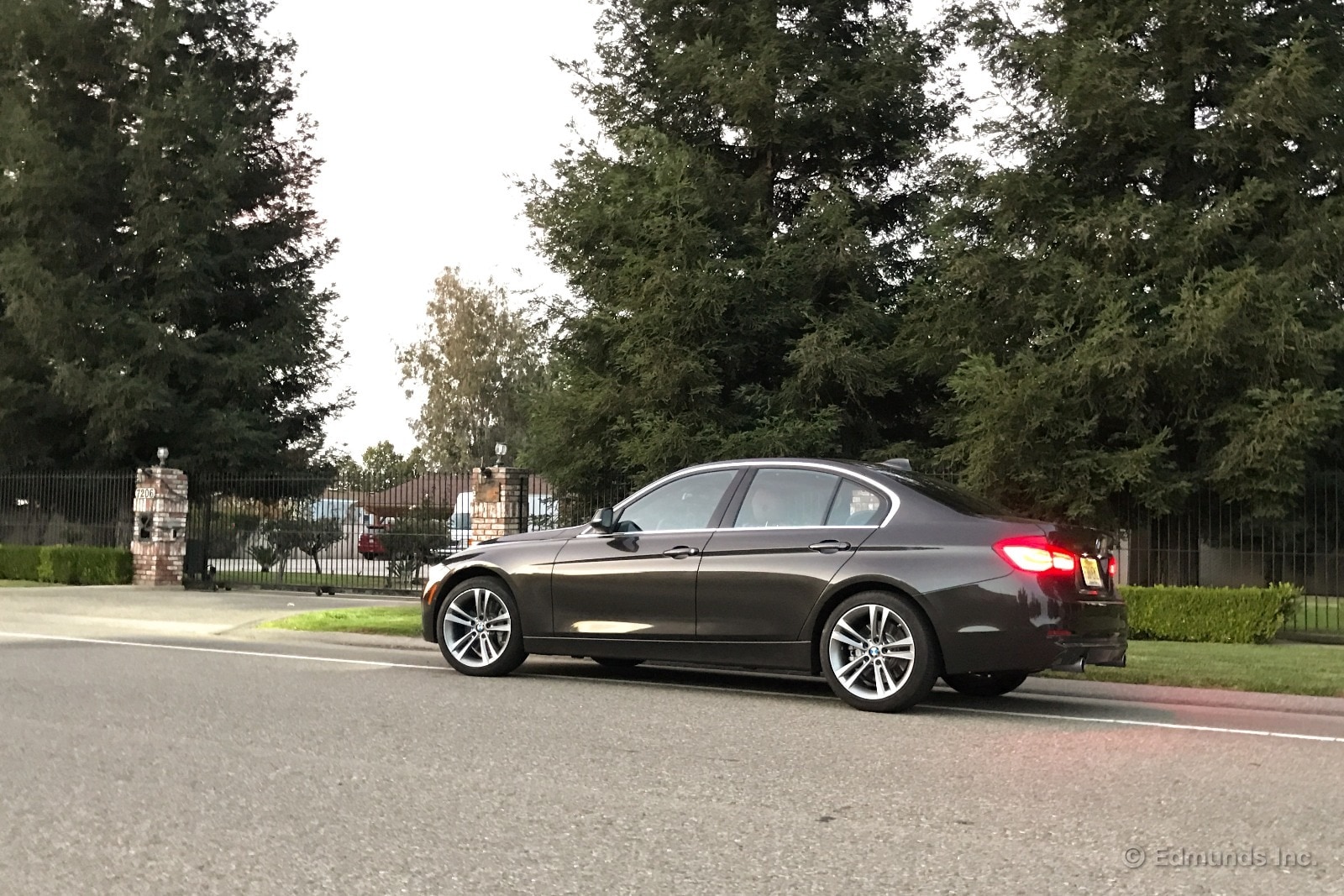
Monthly Update for December 2016
Where Did We Drive It?
It's been a weird month for me and our long-term 2016 BMW 340i. The editors here at Edmunds generally sign out a different vehicle Monday through Wednesday and stay in something from Thursday through Sunday. With the holidays, however, we ended up keeping one vehicle for over two weeks straight.
Since I'm a Los Angeles native, there weren't any epic drives to Grandma's house, just a bunch of short trips and errands in our 340i.
What Kind of Fuel Economy Did It Get?
Unsurprisingly, our 340i's lifetime average for fuel economy dropped while the car was in my care. What can I say? I like performance. Still, it was only a 0.2-mpg drop, and we're doing pretty well against the EPA estimates.
Average lifetime mpg: 24.4 mpg
EPA mpg rating: 25 mpg combined (22 city/32 highway)
Best fill mpg: 34.6 mpg
Best range: 518.4 miles
Current odometer: 17,664 miles
Logbook Highlights
Performance
"The difference between Comfort and Sport+ driving modes is sizable. It sounds corny, but it's like you get a different car in those modes, and both are excellent at what they're intended for. In Sport+ mode, you hear a subtle crackle from the exhaust on throttle overrun. I approve!" — Mark Takahashi, Automotive Editor
"I'm always astounded by the 340i's lovely powertrain. On paper, the specs aren't exactly eye-popping (320 horsepower and 330 pound-feet of torque from a turbo-six are just 10 hp and lb-ft more than the Ford Mustang's turbo-four manages), but real-life performance is fantastic. At our test track, our BMW pummeled an automatic-equipped Mustang by 1.5 seconds in a zero-to-60-mph sprint. On the road, the 340i's accelerator pedal has a bit of resistance that I appreciate. It sounds silly to say, but it makes you feel like unleashing the engine's power is a deliberate decision that is not to be taken lightly." — Cameron Rogers, Associate Editor
"It finally rained in L.A.! I took the BMW out to a special area where I can test out a car's handling on wet pavement and was both disappointed and impressed. First, I was disappointed because I totally forgot our 340i is the xDrive all-wheel-drive model and it just wouldn't get squirrelly enough for me. Usually with a rear-wheel-drive BMW, I can have a bit of hooligan, tail-out fun. Not so in our 340i. That said, it was impressively quite controllable, even with the stability control system turned off." — Mark Takahashi
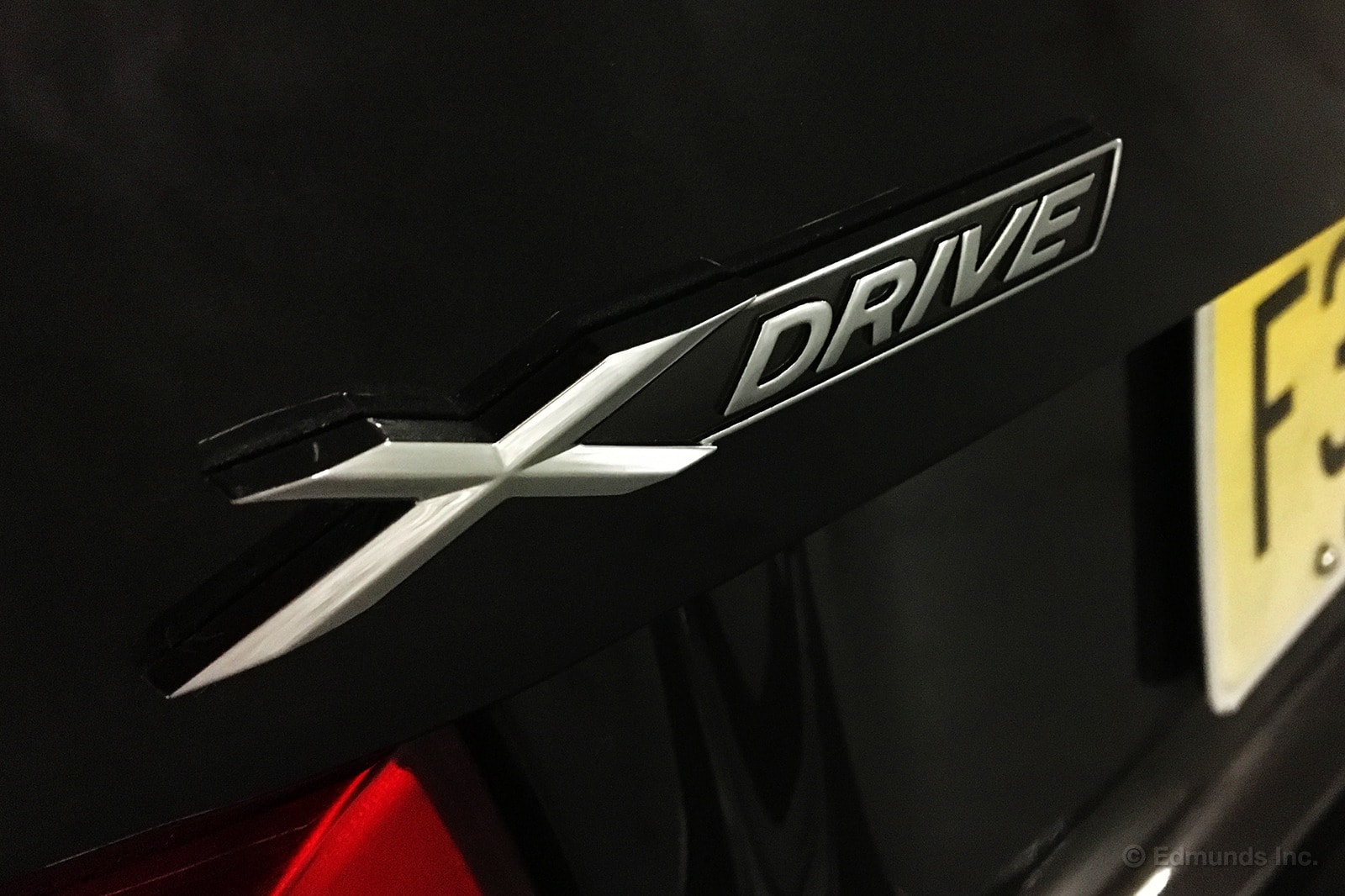
Comfort
"We've written about BMW's front sport seats before, but it bears repeating: BMW makes some of the best thrones in the game. They feature a multitude of adjustments, including four-way lumbar and adjustable side bolsters. But the highlight for me is the seat bottom, which offers a steep incline and extendable thigh support, a boon to tall drivers like me. The headrest can also be angled forward quite a bit, too. Best of all, these seats come standard on most 3 Series models except the 320i, where they are included in the Sport package." — Cameron Rogers
Technology-Audio
"After a few days with the 340i, I didn't have to look at buttons for the various drive modes, iDrive (media, phone and navigation) and on the steering wheel. That tells me they're thoughtfully and logically placed." — Mark Takahashi
"Standard on the 340i is a 16-speaker Harman Kardon audio system and it sounds great. From Beethoven to Lil Jon, the speaker delivered precisely what you'd want, and that's power and clarity. If you like strong audio, it may be worth upgrading to this if you get a supporting 3 Series model." — Mark Takahashi
"I like the way the adaptive cruise control works in our long-termer, though I agree with a previous post that it's not quite as good as the Mercedes system." — Mark Takahashi
Monthly Update for January 2017
Where Did We Drive It?
January was a busy month for our all-wheel-drive 2016 BMW 340i xDrive, and as the miles have steadily piled on, we've grown accustomed to the character of BMW's most popular sedan. Along the way, we've noticed some of the smaller details that long-term tests are designed to highlight, and we've even discovered some new quirks. In particular, Southern California's once-in-a-decade winter rainstorms wreaked havoc on our already challenged roads and brought forth an issue that many in snow country will surely experience.
Being the tail end of the holiday season, the first half of January allowed some of our editors to spend extended quality time behind the wheel. This is a rare treat — we're usually swapping in and out of cars two to three times a week. The second half was back to business as usual, with the 340i trading hands in quick succession and getting back to commuting duty.
What Kind of Fuel Economy Did It Get?
We filled up five times over the course of over 1,600 miles, and saw an overall average of 20.5 mpg (high of 22.4 mpg, low of 18.9 mpg) during the month of January. Credit this to city driving, sitting in traffic and enjoying the 320 horsepower from the inline-six engine.
These results aren't uncommon for the BMW, but it goes to show you that your results will definitely vary based on usage patterns.
Average lifetime mpg: 24.1
EPA mpg rating: 25 combined (22 city/32 highway)
Best fill mpg: 34.6
Best range: 518.4 miles
Current odometer: 19,266 miles
Maintenance and Upkeep
None.
Logbook Highlights
Performance
"As others have reiterated, the different drive modes (Sport, Comfort and Eco Pro) really change the behavior of the car. Comfort is good, but Sport is better. I tended to avoid Eco Pro as it reduced the responsiveness of the throttle and transmission beyond the range of acceptability." — Calvin Kim, Road Test Editor
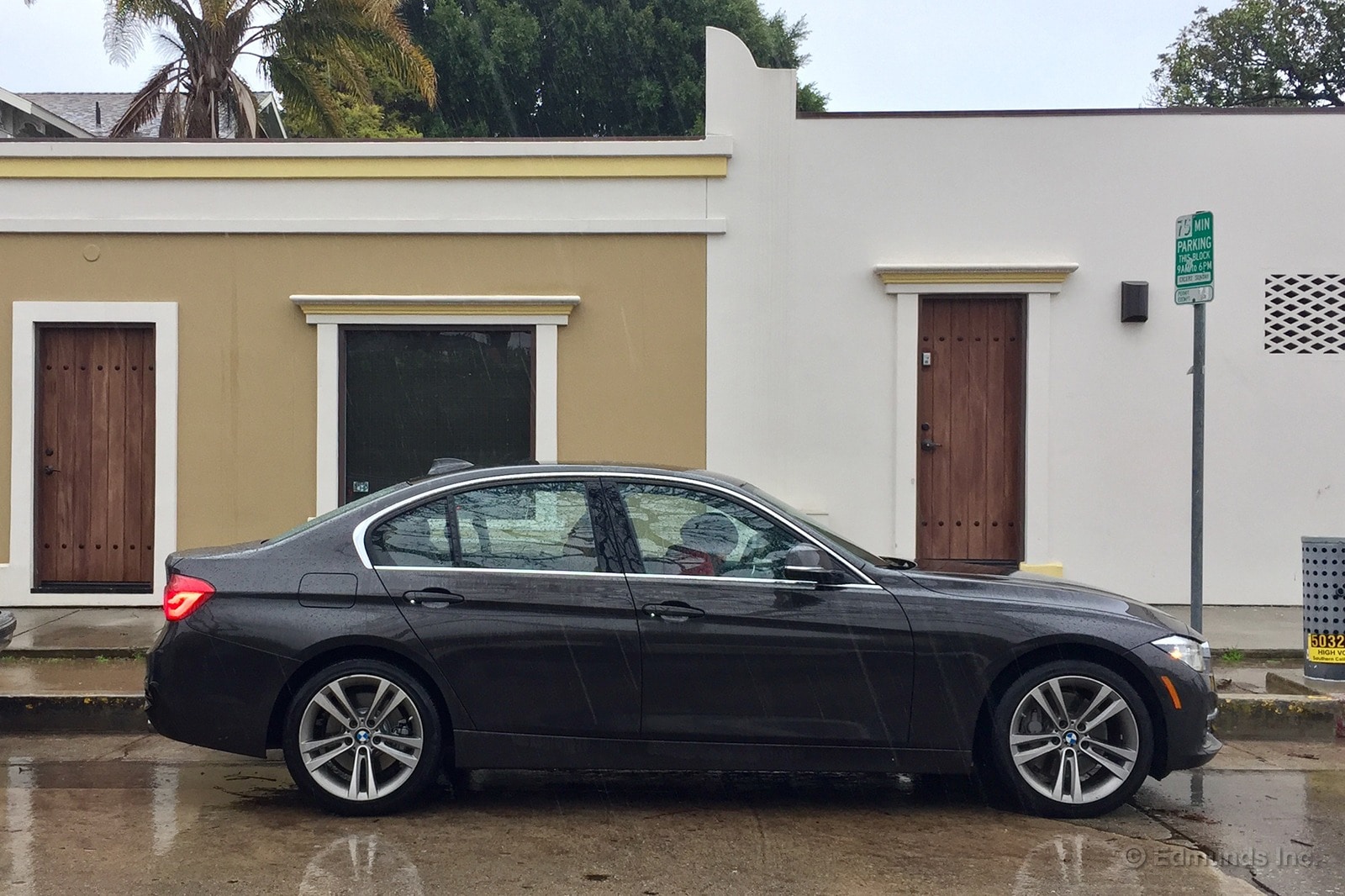
Interior
"This will sound odd, but I've often appreciated the way BMW does sun visors, and the 340i is no exception. There's a lot of resistance to motion, and this is good — it means the visor (when in the side window position) doesn't swing around and hit me in the face when making moderately spirited left turns." — Jason Kavanagh, Engineering Editor
Technology-Audio
"Torrential downpours greeted me as I departed Santa Barbara en route to Los Angeles. In the rain the 340i is as stable and confidence-inspiring as you'd expect. The rain-sensing wipers erred on the side of too infrequent for my liking, so I preferred the regular, dumb settings instead. No big deal. Heaps of traction is afforded by its AWD, which allowed me to deploy the 340i's considerable thrust without experiencing wheelspin." — Jason Kavanagh
"The radar system is smooth and reacts efficiently, although it takes the computer a moment to decide when a new lead car is relevant, leading to some harrowing moments of doubt about whether the BMW would stop itself in time." — Calvin Kim
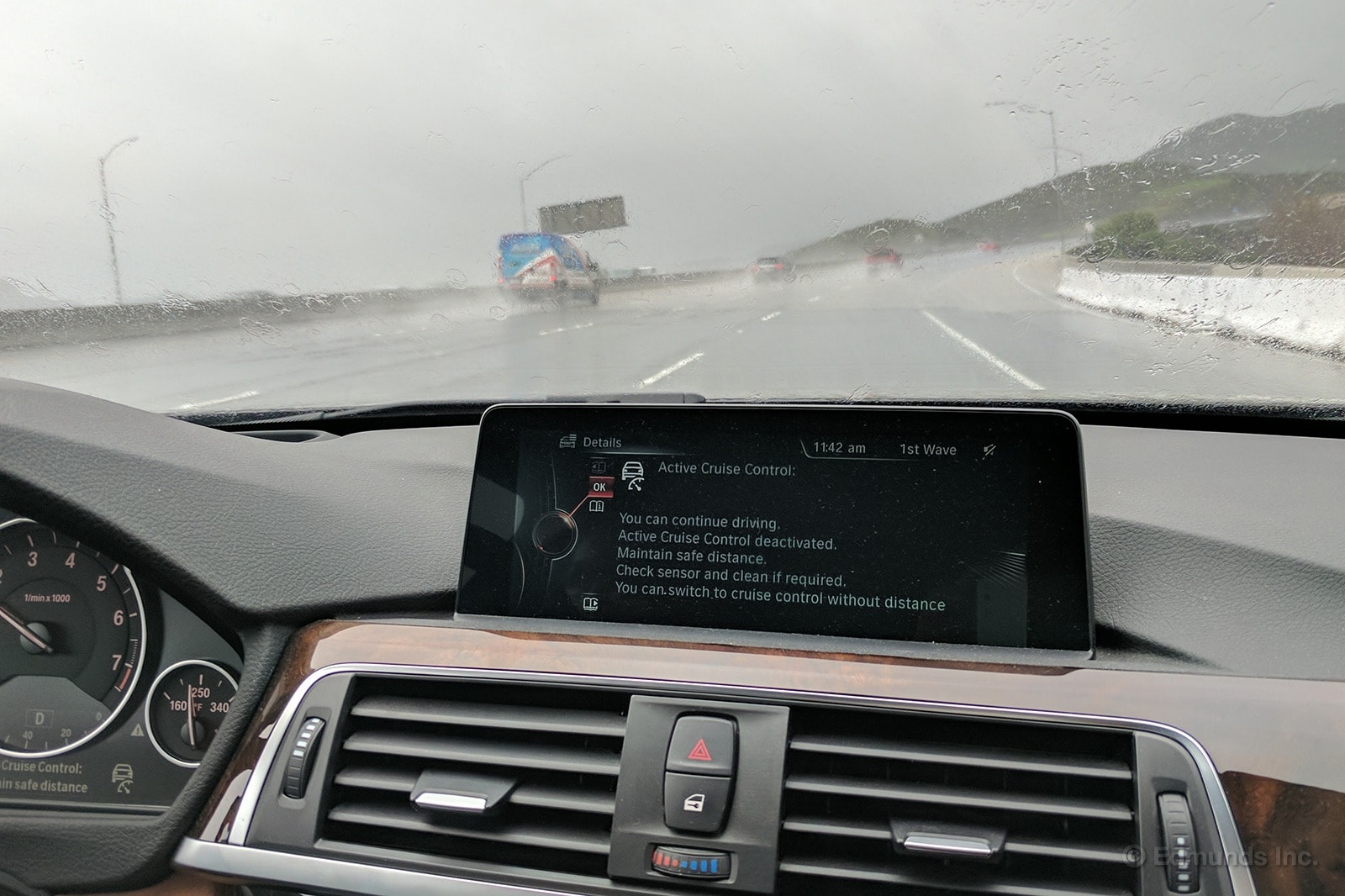
"The frontal collision/adaptive cruise dingus doesn't like the rain. It chimed in with this display during my drive. It's an informative alert to be sure. As an aside, I predict that our inevitable autonomous future will be replete with sensor-washing systems, perhaps each with its own redundant system. Adaptive cruise was also disabled during my drive, which is no surprise since its function piggybacks on the frontal collision detection system. There is, apparently, a way to revert it to conventional 'dumb' cruise in this situation, but I was not in a position to research the owner's manual as directed (because driving). I instead futzed around with the cruise interface, holding buttons and such in a futile attempt to enable it via intuition. Oddly enough, the adaptive cruise would return if I cycled the 'power' on the cruise. Then it would click off again with the alert above after several minutes. There was really no rhyme or reason to the interval. Everything worked fine again once dry (and with no manual cleaning of the sensor), which leads me to believe this might be a maintenance item to check during its next service." — Jason Kavanagh
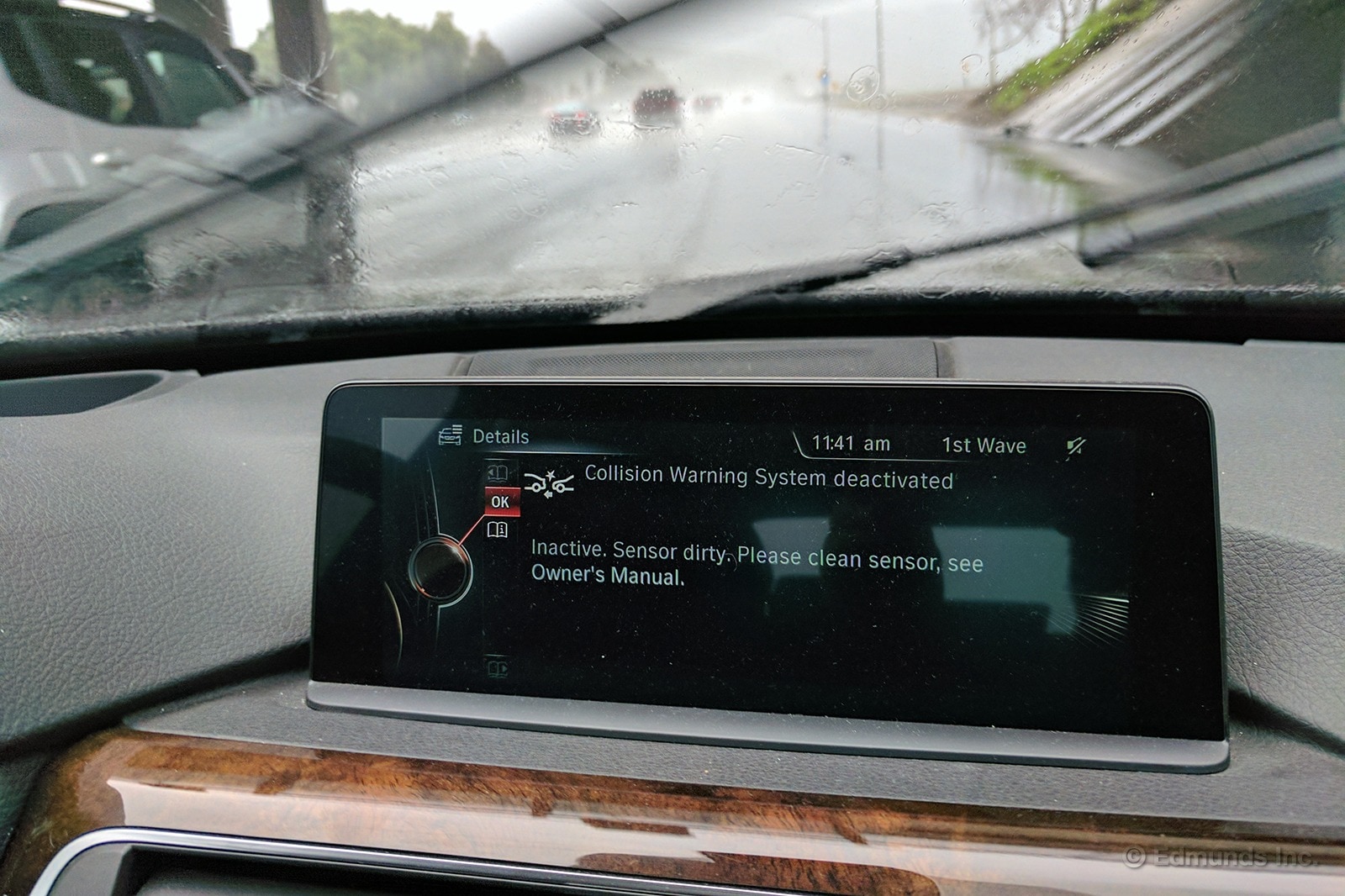
Monthly Update for February 2017
Where Did We Drive It?
This month our 2016 BMW 340i xDrive did plenty of commuting, but it also took a few breaks for weekend getaways. A trip to San Francisco saw the all-wheel drive come in handy during a torrential downpour, although the adaptive cruise control system's sensors didn't fare so well. After that adventure, the 340i probably appreciated being taken to a spa in the desert near Palm Springs, even if it couldn't relax in the natural thermal baths.
Whatever the destination, the 340i remains much in demand for its comfort, poise and speed. However, not everything is wine and roses with our Jatoba Brown Bavarian. Concerns have emerged that the 3 Series feels less special than it once did, even as it gains features that should make it more competitive on the market.
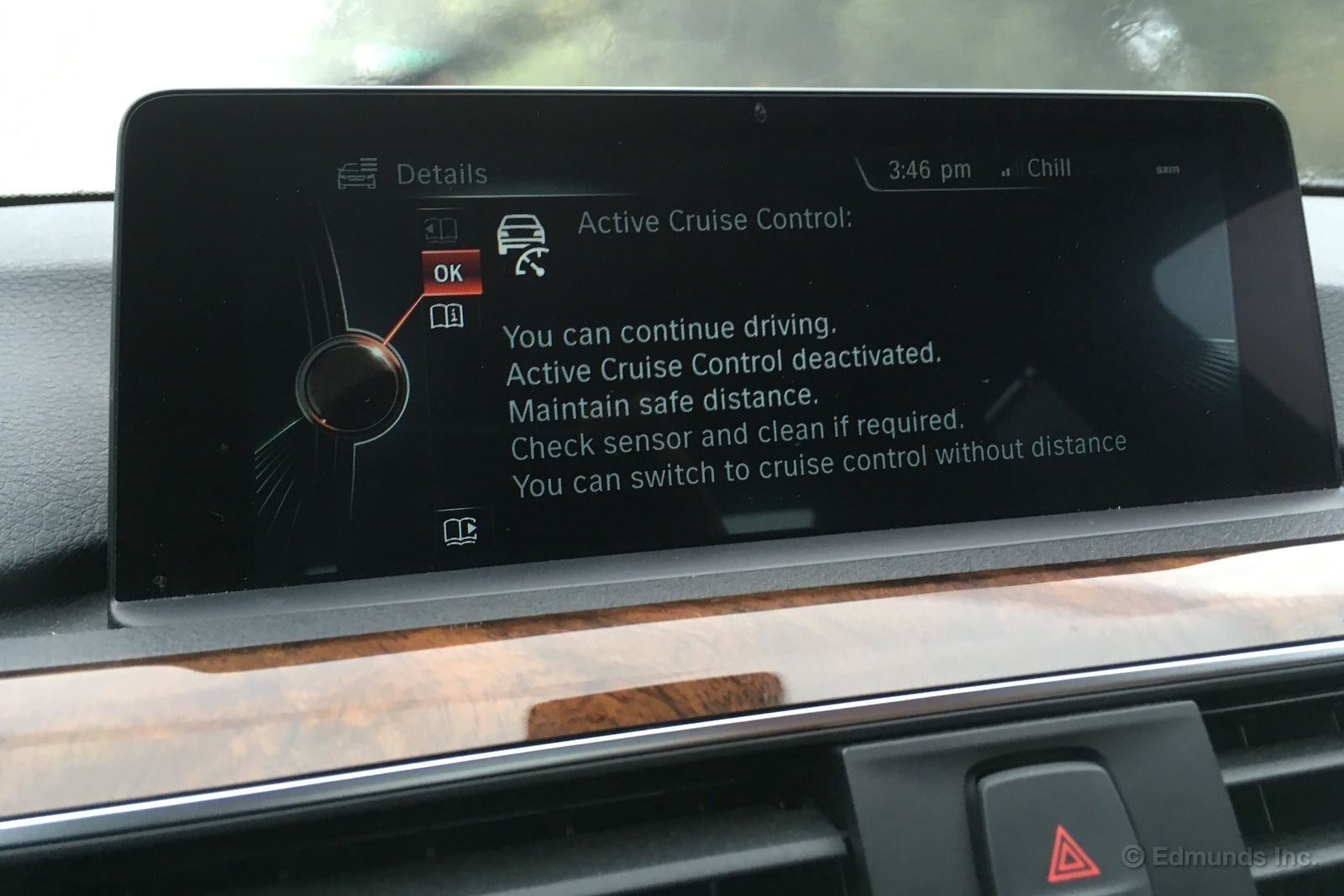
What Kind of Fuel Economy Did It Get?
February's miles included two longer freeway journeys, which bumped up fuel economy a bit over January. Alas, the daily L.A. slog and periodic dips into the louder end of the 3.0-liter engine's rev range kept us from getting close to our lifetime best.
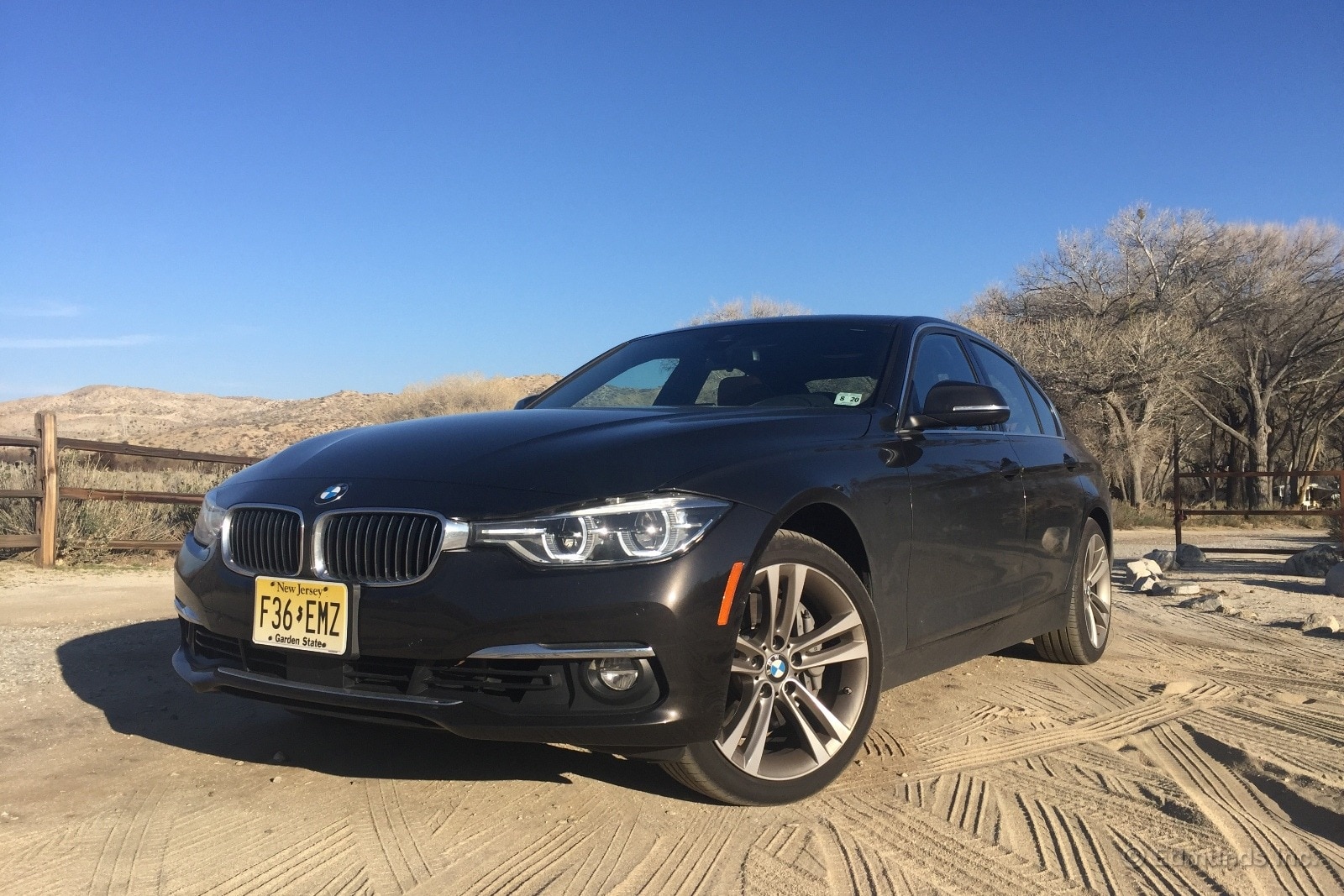
Still, our average in February was 24.8 mpg, which is right in line with EPA estimates. The BMW has done remarkably well here despite that marvelous engine, which continually tempts us to misbehave.
Average lifetime mpg: 23.9
EPA mpg rating: 25 combined (22 city/32 highway)
Best fill mpg: 34.6
Best range: 518.4 miles
Current odometer: 21,025 miles
Maintenance and Upkeep
None.
Logbook Highlights
Performance
"Perhaps a day will come when we're all zipping around in electric pods and the closest thing to an engine note is whatever's being pumped through the speakers. But we're hardly there yet, so I still have certain expectations for how a high-performance engine ought to sound. BMW, of course, has historically made some of the sweetest-sounding sixes in the business, and even its first turbocharged inline-six — the twin-turbo N54 — had a satisfyingly silken growl. I'm a little concerned about the company's latest efforts, however, including the admittedly potent lump under the hood of our 340i.
"To me, this turbo-six is the ultimate performance appliance: It's astonishingly capable and fuel-efficient, but it sounds hollow and uninspired, like a world-beating vacuum cleaner. Before you tell me that no one cares, let me tell you about Ferrari, which built its peerless brand in significant part on the music its engines emit. Between the 340i's underwhelming acoustics and the current M3's need for synthetic enhancement (see 'pumped through the speakers,' above), I'm afraid the F30 3 Series will be known as the generation when BMW's music died." — Josh Sadlier, Content Strategist
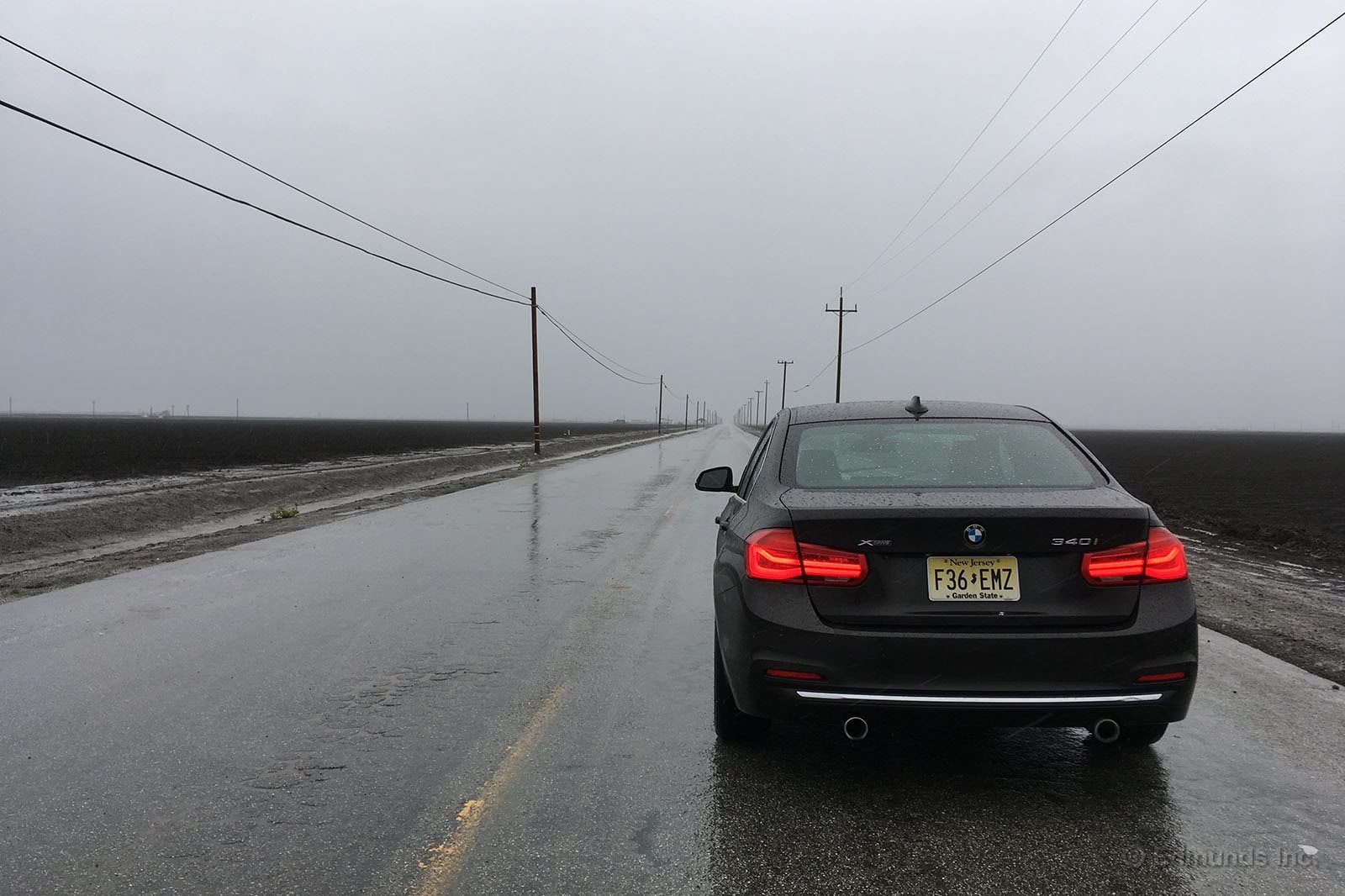
"It's strange to drive a car with a communicative chassis and uncommunicative steering. My rear end tells me that I just hit a midcorner bump, but as far as the steering wheel is concerned I might as well be on a glass-smooth track. That said, it's a pleasant commuter car. Eco Pro mode has a function that allows you to coast like you would in a manual, where neutral is easily accessible. It's very intuitive and makes negotiating midspeed traffic much easier. But for sitting in summer traffic, I'd want to reconfigure Eco Pro to allow for full A/C." — Will Kaufman, Associate Automotive Editor
Interior
"Trunk space is deep but narrow, and rear seat space is borderline marginal, but that's OK because the front seats are comfortable and very adjustable." — Calvin Kim, Road Test Editor
"I find it a little odd that there isn't a 'sync' button for the A/C system, so you always have to adjust driver and passenger temps separately. Or am I missing something?" — Jonathan Elfalan, Senior Road Test Editor
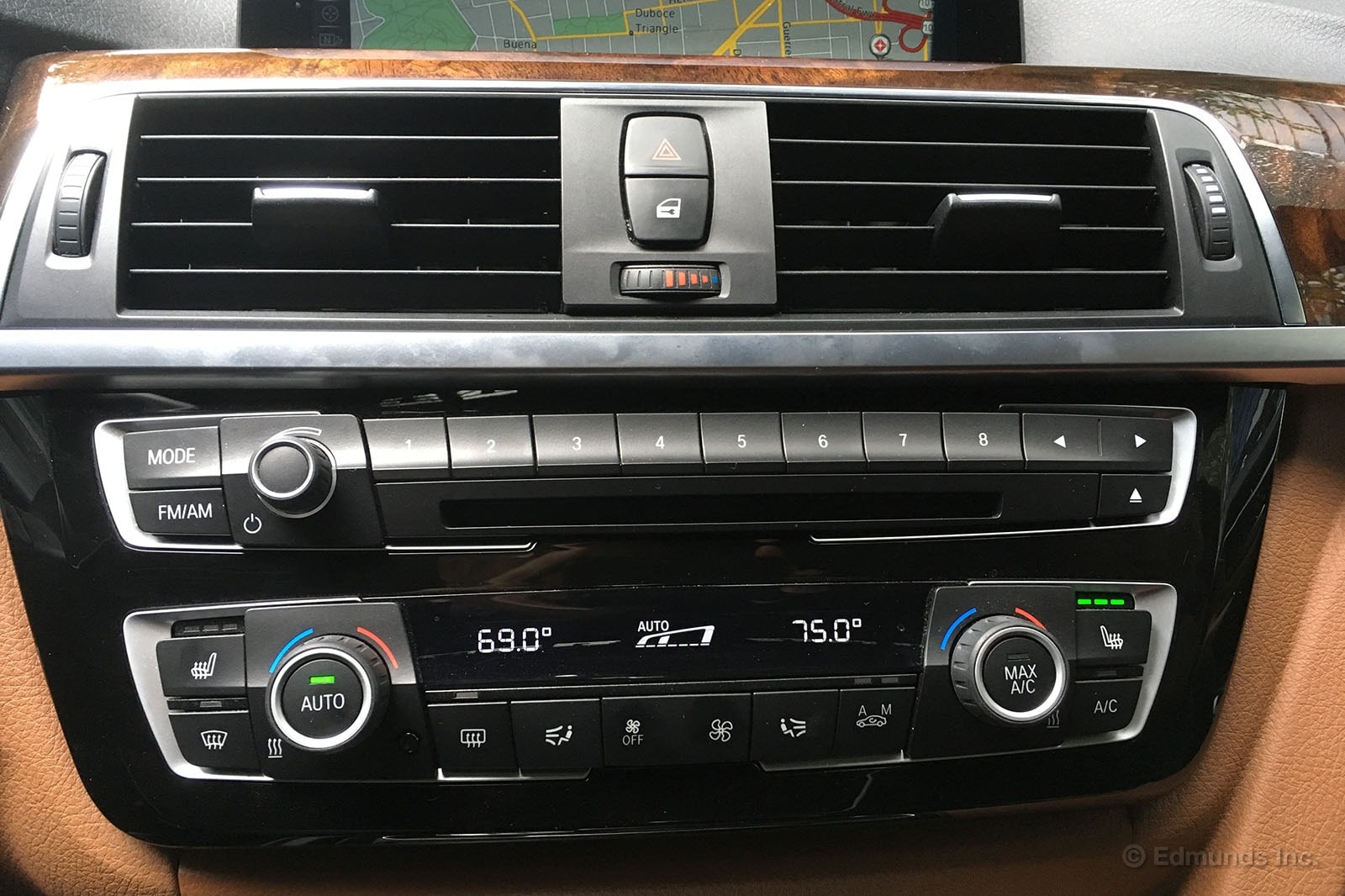
Audio & Technology
"I'm disappointed anew every time I fire up the 340i's standard 16-speaker Harman Kardon audio system, which is the optional premium upgrade on lesser 3 Series models. If I didn't know the specs, I'd guess it was the entry-level stereo instead. The bass isn't rich, the highs aren't crisp and the soundstage isn't full. I've played with all the settings; it just sounds flat no matter what. This is in stark contrast to the early E90 (previous-generation) 3 Series, which came standard with a dual-subwoofer 10-speaker setup that genuinely cranked. Also, the E90 M3's optional stereo was a high-powered beast, as I recall (it was in our 2009 long-termer). But BMW removed features from the standard stereo toward the end of the E90's run, and it sounds to me like that approach persists today. Pity. I used to look forward to the listening experience whenever a 3 Series came around." — Josh Sadlier

"Although the 3 Series is showing its age, the modern tech is all there. During my 200 miles with the car, I became very familiar with the radar cruise control and real-time traffic display on the navigation screen, as many of the miles were spent in bumper-to-bumper traffic going down to visit family and run errands in Orange County. On top of the iDrive controller is a small touchpad surface, and I found myself writing the letters to find destinations and input addresses far more often than using the scroll wheel to make selections. The iDrive system reads back the letters to you, so you can legitimately enter text without looking at the display." — Calvin Kim
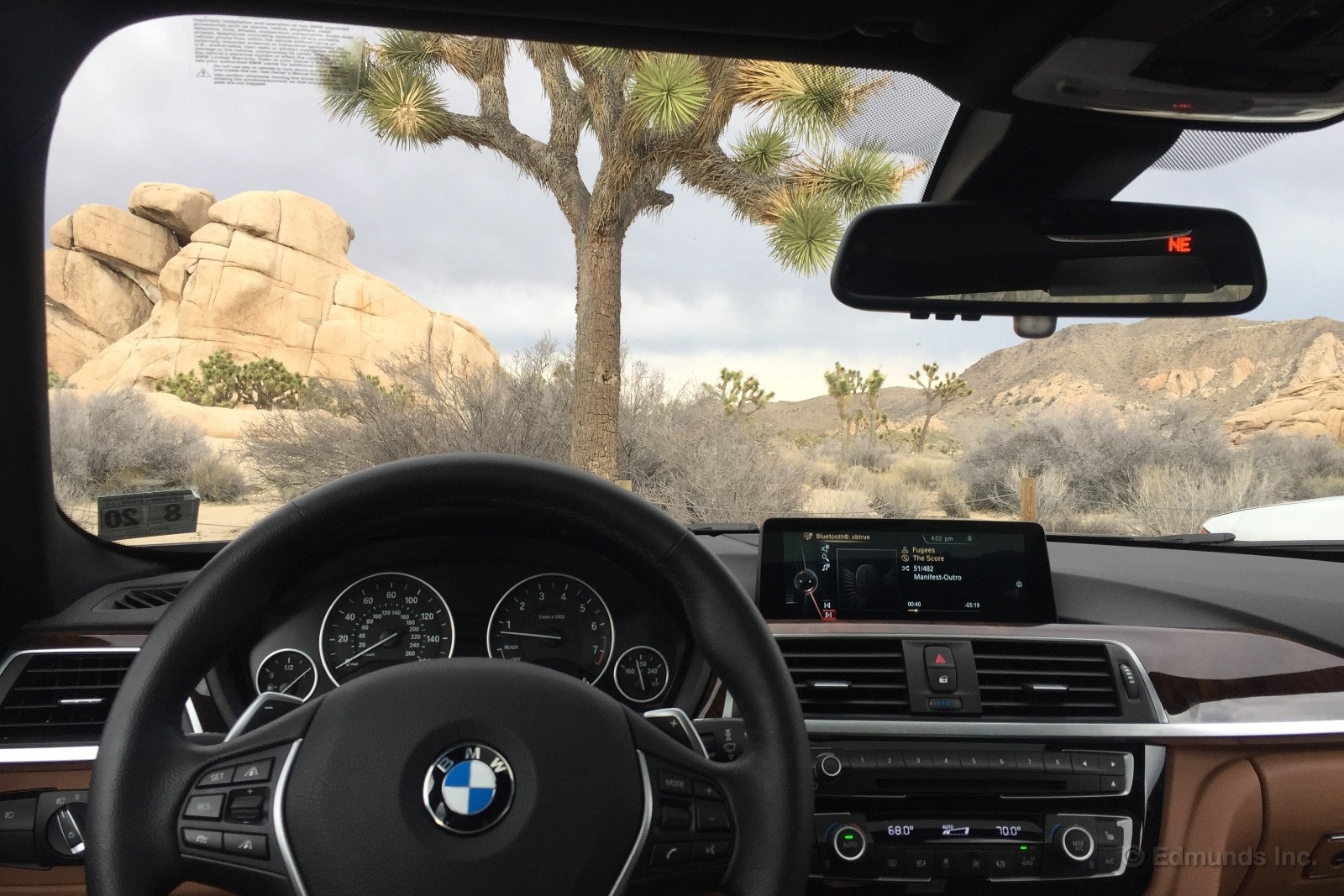
Miscellaneous
"While it might be objectively one of the best-performing cars in the fleet, I just can't seem to connect with our 3 Series. Yes, it's fast; yes, it handles extremely well; but it feels so devoid of character. Maybe it's the brown-on-brown-on-brown color scheme of our car, but this thing just doesn't stand out. At least in black, our old ATS stood out a bit. It was more aggressively styled, too. This Bimmer feels like one of a million here in L.A. And that certainly doesn't help the vibe I get while driving it." — Travis Langness, Automotive Editor

Monthly Update for March 2017
Where Did We Drive It?
Daily commuting and a weekend road trip made up the bulk of our 2016 BMW 340i's time on the road in March. It's a common mix for a lot of 3 Series owners, we suspect, and this sport sedan handles mundane commutes through the city as well as it does a winding mountain road. It also delivers pretty impressive mileage figures, making it well suited to daily driver duty.
It wasn't all traffic and potholes, however, as one staffer snagged the sedan for a weekend golf trip. It put into perspective how much trunk space the 3 Series has available versus its larger 5 Series sibling. Let's just say that the 3 Series has its limitations.
What Kind of Fuel Economy Did It Get
We added only about 500 miles to our 340i xDrive in March. As such, our lifetime average and best fill-up remain unchanged from last month.
Average lifetime mpg: 23.9
EPA mpg rating: 25 combined (22 city/32 highway)
Best fill mpg: 34.6
Best range: 518.4 miles
Current odometer: 21,518 miles
Maintenance and Upkeep
None.
Logbook Highlights
Interior
"I'd describe the current 3 Series' rear passenger space as just enough. Having adjusted the driver seat for my long-legged self, I was able to sit behind that seat with adequate legroom and headroom. The only issue was footroom during ingress/egress; I had to turn my feet sideways to make it work. But to me, that's fine for this segment. In other words, please, BMW, don't make the next 3 Series any bigger than this one." — Josh Sadlier, Content Strategist
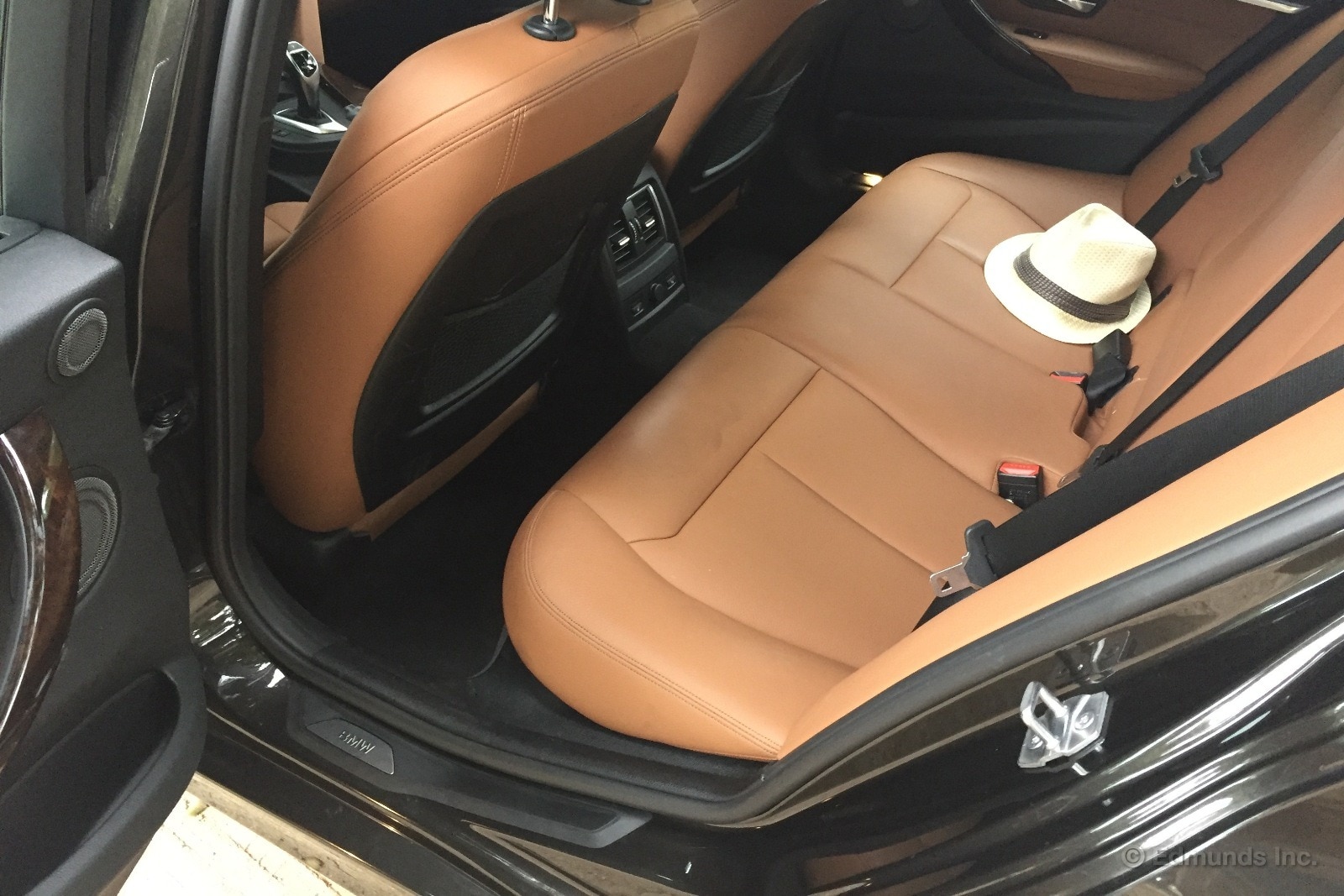
Cargo Space
"I expected more golf-bag-friendliness from this generously proportioned 3 Series. Two lightweight bags barely fit in the trunk, and we had to take the driver out of one of them. Maybe there's a better way to Tetris them in there, but given that this 3 Series approximates the size of 5 Series past, I figured a couple of bags would be a breeze. Not so much." — Josh Sadlier
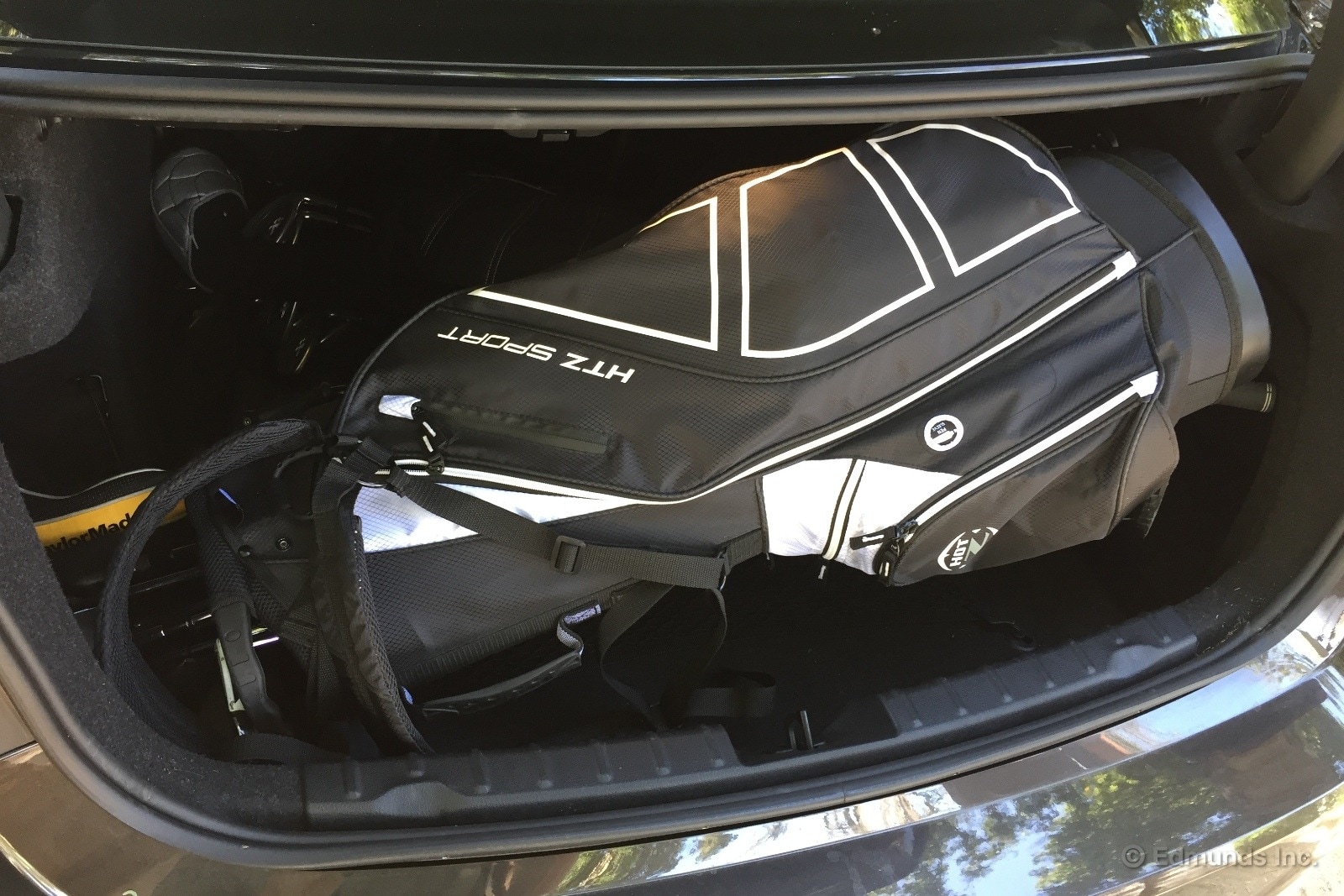
MPG
"I continue to be smitten with the fuel efficiency and range this powertrain provides. On my current fill I've covered about 315 miles in a variety of conditions, including a lot of stop-and-go, and I've got a quarter-tank remaining with 29 mpg showing on the trip computer. You'll recall that this is a conservatively rated 320-horsepower AWD beast that does zero to 60 in the mid-4s. BMW has unlocked a new level here. I don't love the engine's character, but I'm astonished by everything else." — Josh Sadlier

Miscellaneous
"Noticed one of those distinctive run-flat bulges in the driver-side front tire's sidewall. No palpable vibration at speed; this was a visual ID while positioning the front wheels for a photo shoot. Something to take care of in the near future."— Josh Sadlier
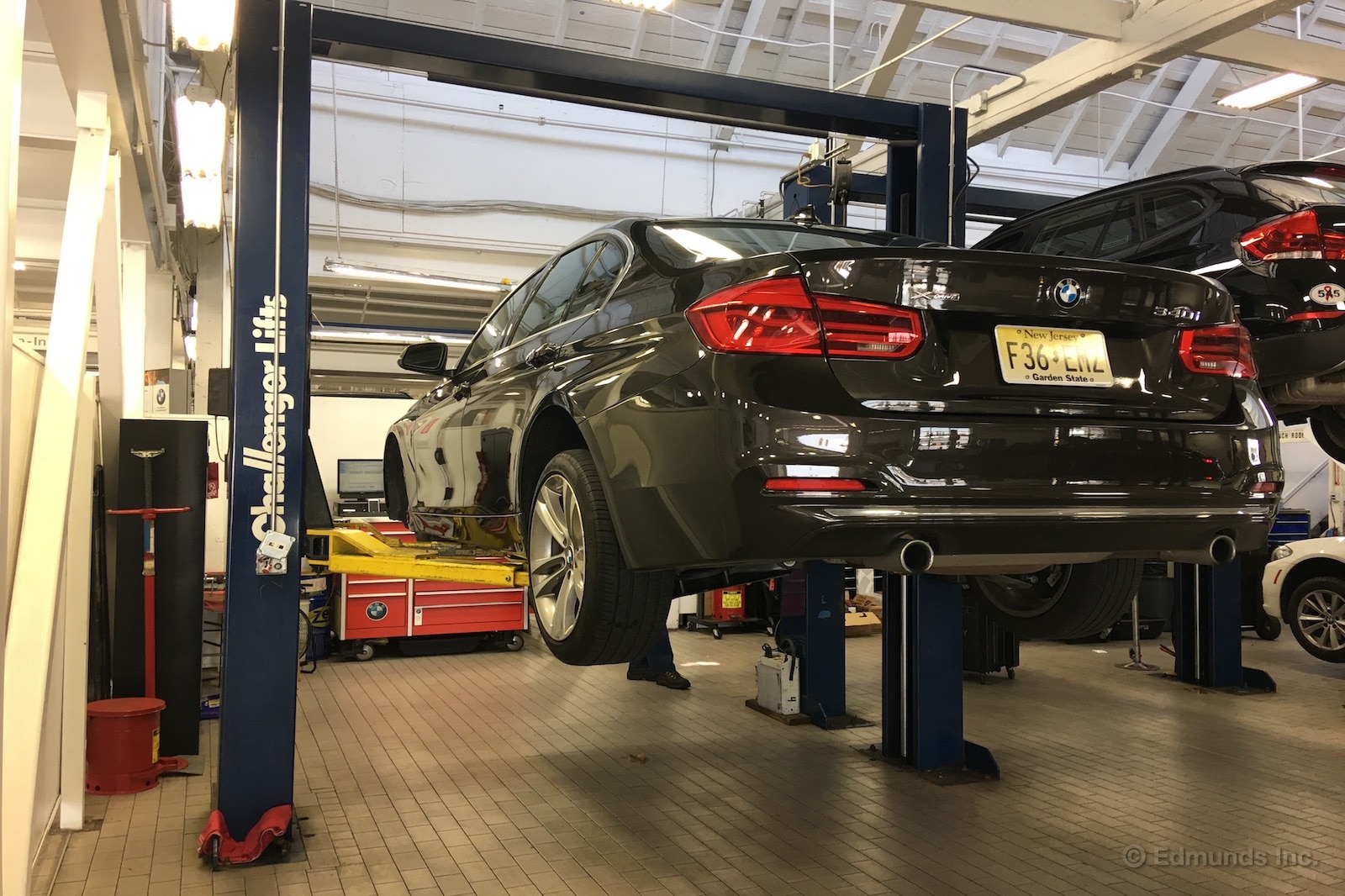
Content Strategist Josh Sadlier was the first to spot a bubble in the sidewall of the left front tire on our 2016 BMW 340i xDrive. He alerted me to it so I called to make an appointment at Santa Monica BMW. What followed was one of the most off-putting customer service experiences I've had working in the automotive business.
I spoke with the service department operator first. She needed 15 minutes to change the name on our account from that of the editor who serviced our 340i before me. I cut her some slack because obviously this request doesn't happen all that often. Once this was straightened out, I made an appointment for the same day at 1:30 p.m. After arriving on time, a porter introduced me to a service adviser.
Enter my inspiration for this story. The adviser never looked up from his computer and only greeted me verbally. I sat down and started to count. The adviser fired off the regular menu items regarding our service (why was I there, do we have an appointment) but wasn't too enthusiastic about anything. When he finally looked at me, I stopped counting. It took 30 seconds for him to make eye contact. This was going to be interesting.
He printed the work order for me to review. At the top was the incorrect name and contact info that I had asked the operator to remove three hours earlier. I brought this to my adviser's attention and he started making the changes. He asked, "How do you spell your first name? There are so many ways that I've seen Michael spelled. I like to ask for clarity." I appreciated that. The rest of the summary was as we discussed: Replace both front Pirelli Cinturato C7 run-flats and a front end alignment. I gave the OK to start work.
My adviser estimated one hour for the job so I opted to walk back to the office on a beautiful Santa Monica day.
Two hours later a text came through. The car was ready. Tires cost $264.92 a piece. Labor for tire install was $100. The alignment was $200. Throw in a few extra small fees and charges and tax and the grand total settled at $897.59.
I walked in to see the service department cashier. A young lady and young man were behind the desk. Neither greeted me. So I greeted them with a friendly hello. The young man asked me if I was picking up, seemingly uninterested in niceties. I gave him my name, he mumbled something into a radio and quietly took my credit card. As he swiped my card it hit me.
This experience was not the way I wanted it to go. There seemed to be a gigantic lack of customer service from start to finish, unlike at a previous service experience in Fresno. It wasn't the first time we've received such a cold reception at this service center. We continue to give Santa Monica BMW chances because of its proximity to our office, but we also continue to have less than stellar experiences. It's frustrating.
I collected my card and my invoice, but it wasn't clear where I was supposed to pick up our 340i. I turned back around to Mr. Sunshine and asked where I should go. He directed me outside where I crossed paths with my service adviser, who I thanked in passing. While in stride he turned to me, cracked his first smile, shot double finger guns at me and said, "Thanks! And if you see a survey remember to give me all 10s!" He continued out of view behind a car then shouted, "Text me if there are any problems!"
When I returned to the office, I took another look at the invoice, preparing to write this update. That's when I noticed the service adviser, despite specifically asking for clarification, had spelled my name wrong.
It looks like Beverly Hills BMW is just 9 miles from the office. Based on our accrued customer experiences in Santa Monica, I'm going to lobby to have us switch.
What are your thoughts? Have you ever stopped going to a dealership because of poor customer service? What happens if there isn't another dealership nearby to go to?
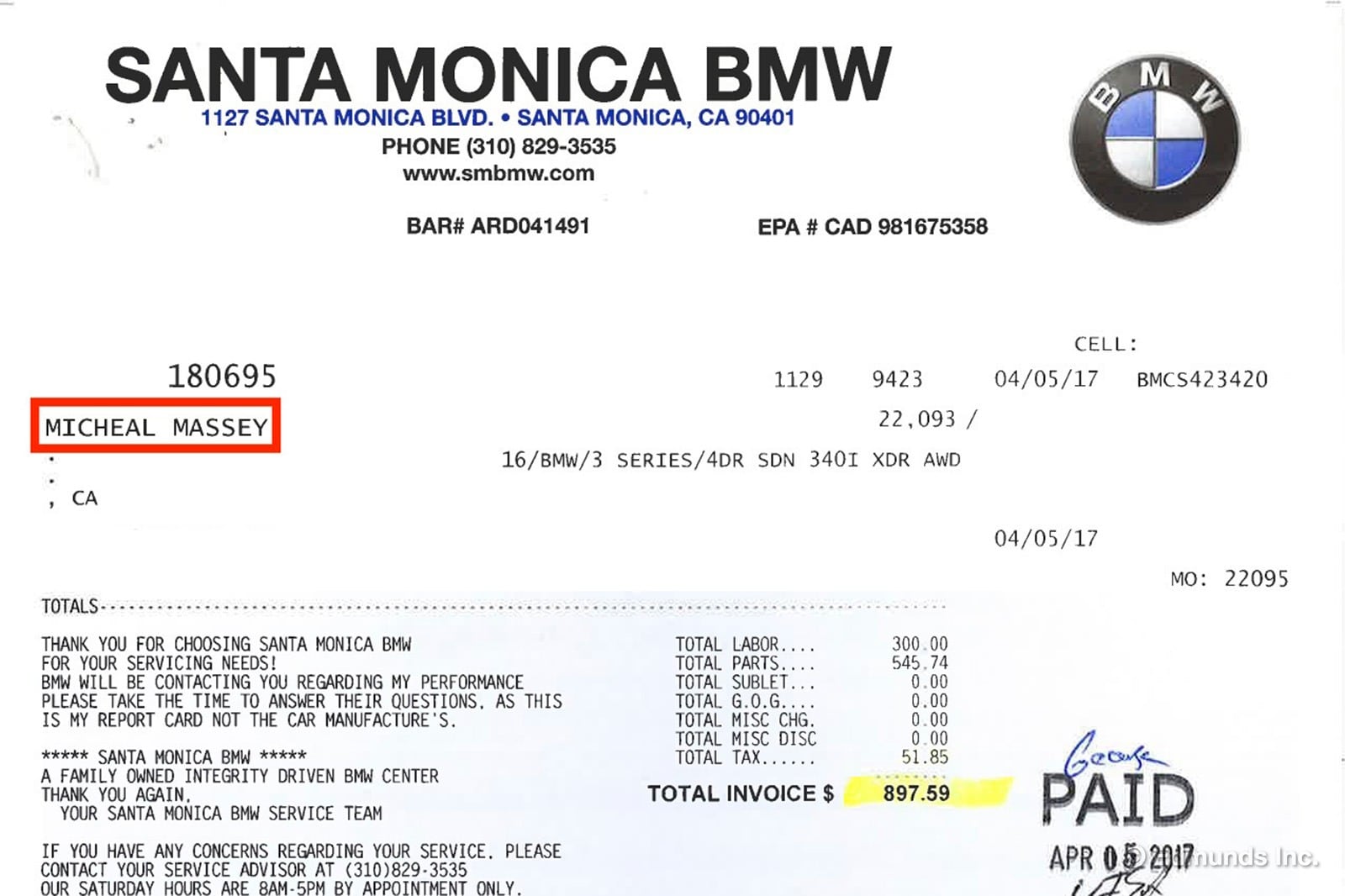

A text message I received from our service adviser the next day.
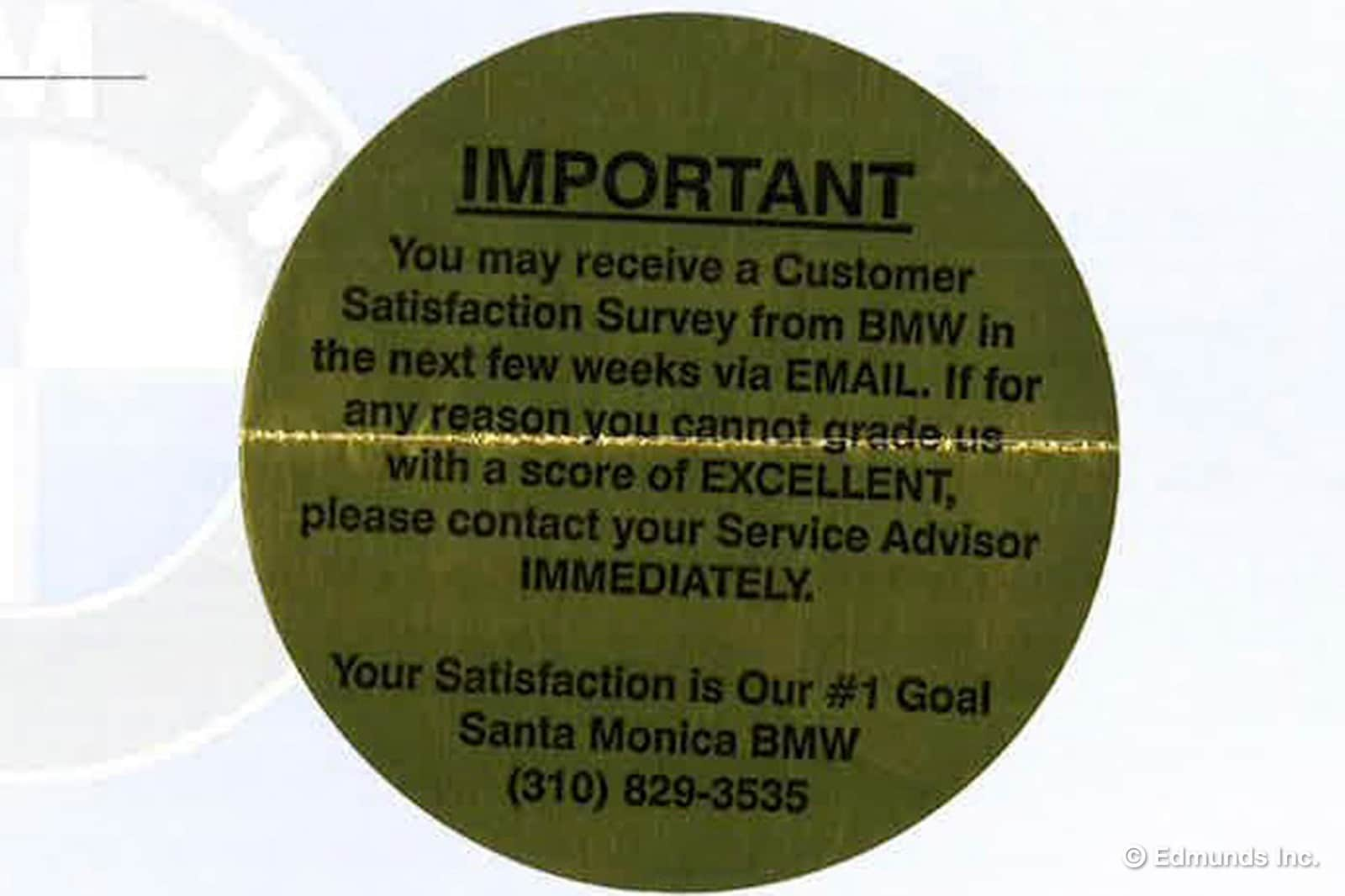
A gold foil sticker that's put on the front of all the dealer's final invoices.
Monthly Update for April 2017
Where Did We Drive It?
We're in the home stretch of our yearlong test of the 2016 BMW 340i xDrive. It has already surpassed its 20,000-mile goal, so in the month of April our 3 Series was used mostly for mundane duties such as commuting and local errands.
That's not always a bad thing, however, as all those hours behind the wheel gives our editors plenty of time to think twice about how the 3 Series measures up to its current competition. As you'll see in the following comments, this BMW still delivers the kind of performance that impresses even the most experienced drivers.
What Kind of Fuel Economy Did It Get?
There's no change in the stats we've been collecting for the last 11 months, even after adding another 1,136 miles to the tally. All things considered, our 340i is living up to expectations.
Average lifetime mpg: 23.9
EPA mpg rating: 25 combined (22 city/32 highway)
Best fill mpg: 34.6
Best range: 518.4 miles
Current odometer: 23,000 miles
Maintenance and Upkeep
A sidewall bubble was spotted by one of our drivers, prompting a replacement of both front tires. After labor, alignment and fees, it set us back $897.59. That would've been the end of the story, but a disappointing service experience deserved a more detailed post.
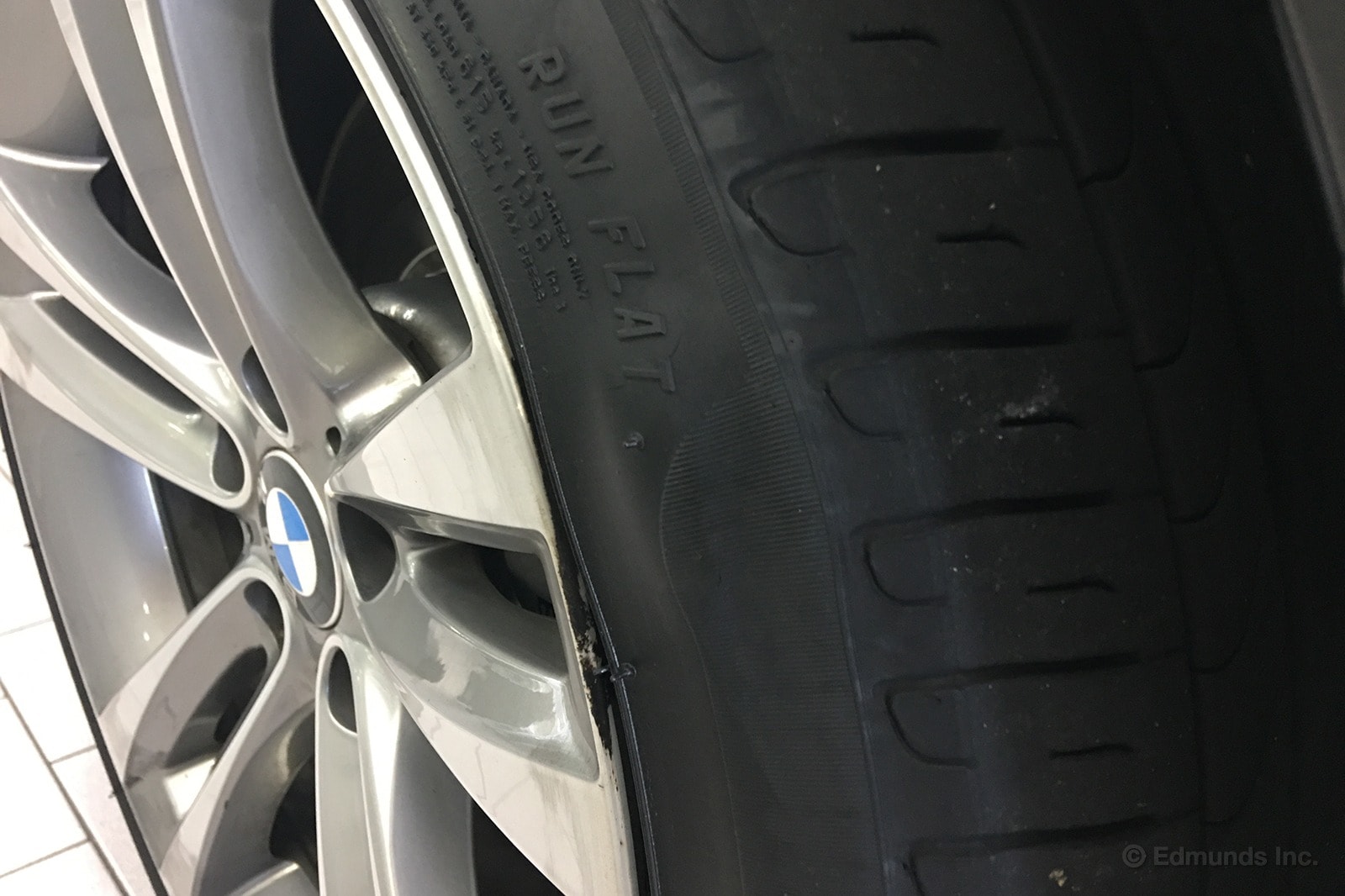
Logbook Highlights
Performance
"Love the way this car pours down the road at higher speeds. Sticks to the pavement and imparts a sense of complete confidence to the driver. The whole Ultimate Driving Machine thing has been called into question by some of BMW's recent models, but that essence lives on in our 340i. You can feel it." — Josh Sadlier, content strategist
"How have I not driven this yet in the 22,000 miles we've had it? New engine: Cool. Suspension and steering enhancements: Great, but I can't claim to be deep enough BMW aficionado to notice. All-wheel drive: Wish I'd made an effort to take it in some local snow this winter, put the four wheels and the rear-seat pass-through to the test." — Dan Frio, automotive editor
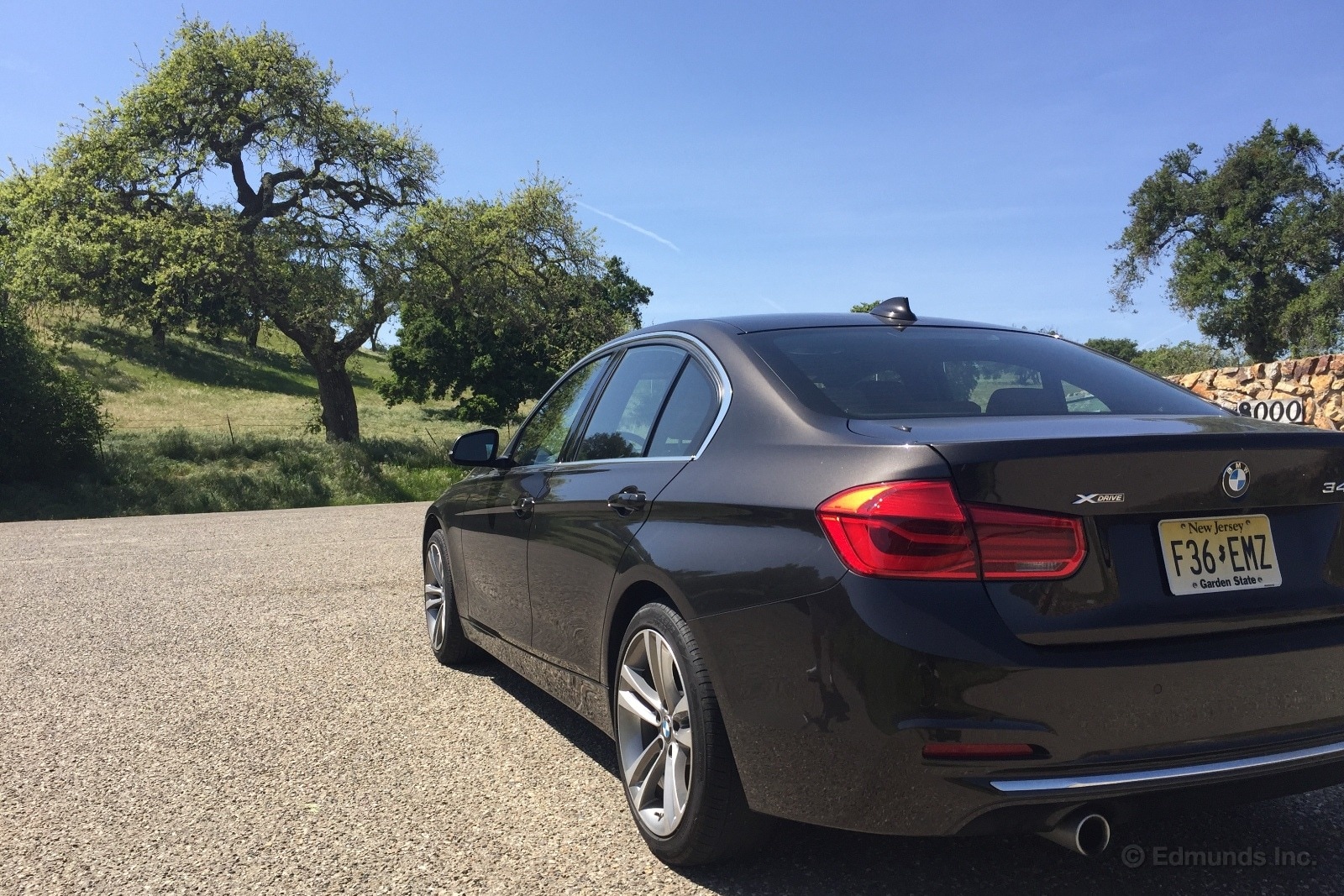
"What stands out, to me anyway, is the difference between Comfort and Sport modes. They're two different cars. Comfort mode could be called 'EPA mode' for its soft pedal, lazy throttle response and rapid upshifts. Sport is where it's at. Throttle feels snappy, transmission hangs onto revs, engine belts out a tough growl. THIS is the stoplight-to-stoplight mode that'll have you saving no gas but spending loads of fun." — Dan Frio
"In Sport+ mode, the stability control gives you just a bit of slip angle before the system snaps you back in line. It's just enough to make me grin, but not so much it scares passengers. Hold the steering and throttle intentionally and you can keep the rear wheels spinning faster than the fronts, but once you lift or begin to straighten out, the nannies come out to help you get back in line." — Mark Takahashi, senior writer
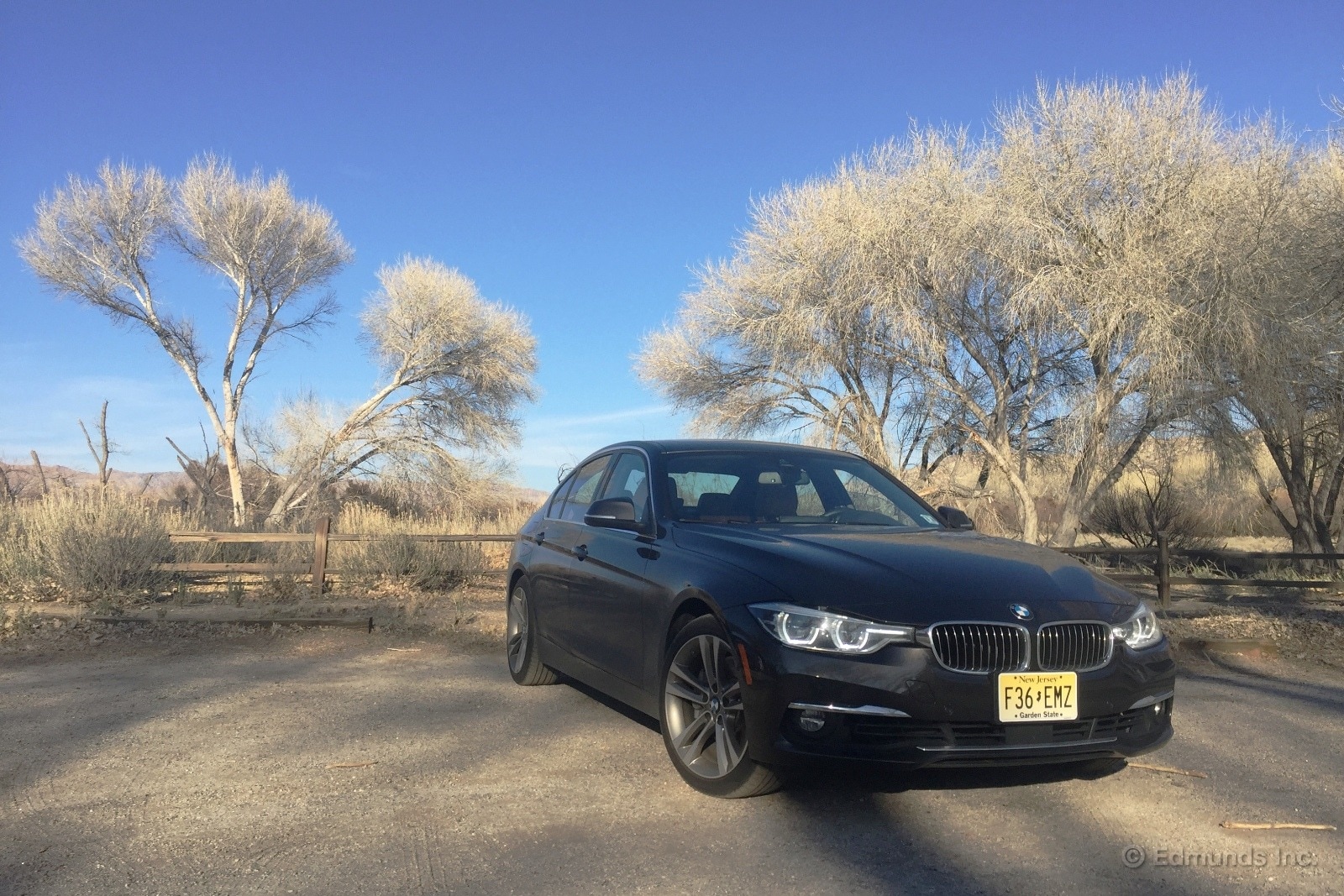
Miscellaneous
"I haven't driven the new 2017 5 Series yet, but one thing I already like about it is that its taillights are clearly distinct from those of the current 3 Series. I parked the long-term 340i next to a 5 Series from the outgoing F10 generation and had to squint to see the differences. Not just the taillights, actually, but the whole rear ends of the cars. I get the desire for a family resemblance, but this is a bit much, isn't it? There was a time when BMW was pretty much the best at artful differentiation between model lines. Hopefully we'll see a return to that philosophy when the new 3 Series debuts." — Josh Sadlier
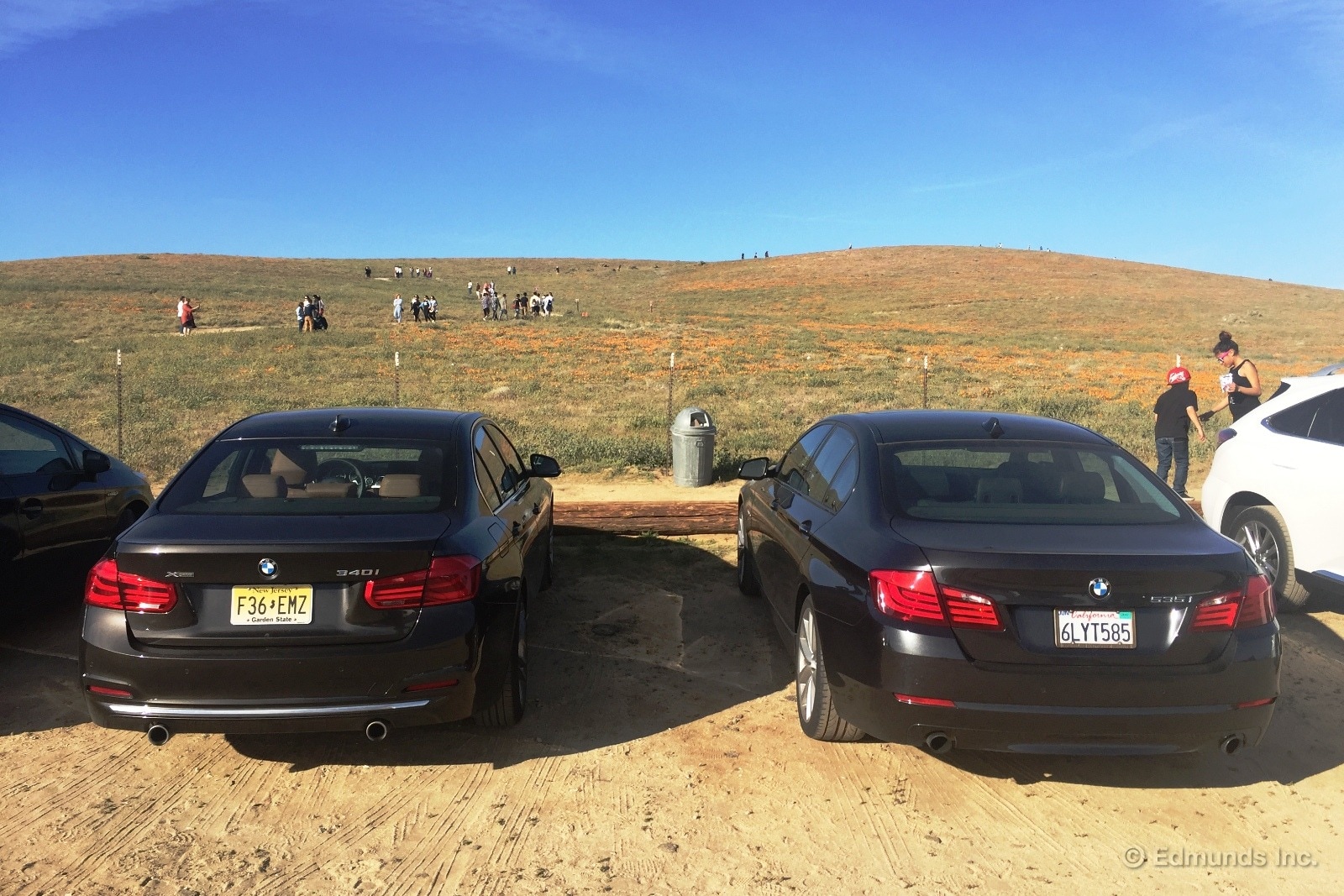
Monthly Update for May 2017
Where Did We Drive It?
This month marks a full year with our 2016 BMW 340i xDrive. Unfortunately there wasn't a party or cake, but we did treat the 340i to an oil and filter change. Hopefully cars get far more enjoyment out of dealer visits for service than owners do.
The 340i accrued just over 1,000 miles this month, in the process providing quiet yet powerful transportation. Editors commented on its seat comfort and debated the value of the powertrain when faced with the constant stop-and-go of the Los Angeles commute. Also, a part of the dash fell off. Again.
What Kind of Fuel Economy Did It Get?
The vast majority of this month's driving was either at low city speeds or with the tach parked near redline. No surprise then that the average fuel economy result was 17.8 mpg — the second lowest we've recorded yet.
Like all turbocharged vehicles, our 340i is more sensitive to driving style when it comes to fuel economy. Its 23.5 mpg lifetime average falls below the EPA's combined rating, but we've seen well over 30 mpg on multiple fills. Alas, no one's been able to best Senior Manager of Content Strategy Josh Sadlier's 34.6 mpg best and nearly unbelievable 518.4-mile range from August last year.
Average lifetime mpg: 23.5
EPA mpg rating: 25 combined (22 city/32 highway)
Best fill mpg: 34.6
Best range: 518.4 miles
Current odometer: 22,897 miles
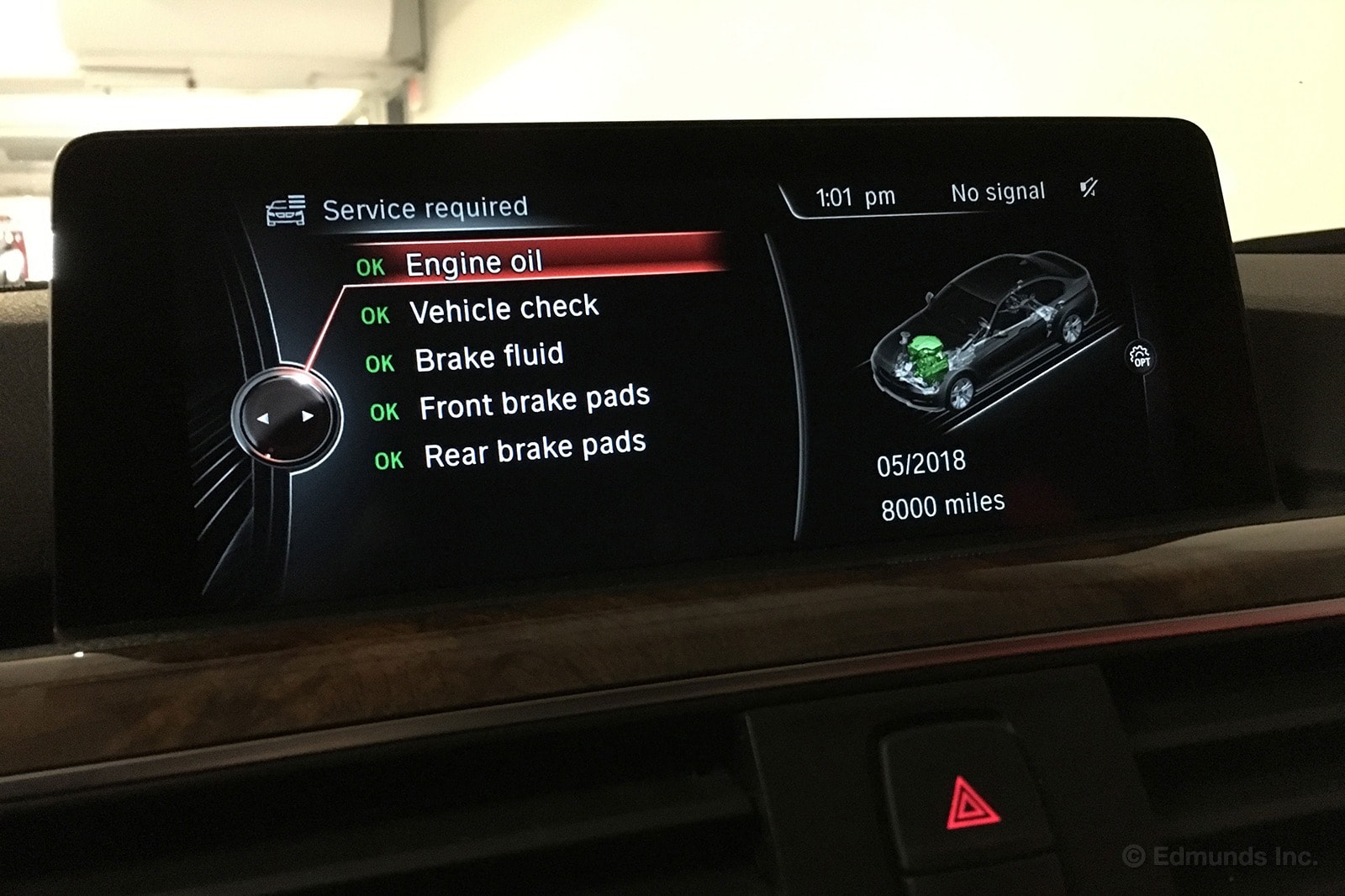
Maintenance and Upkeep
The 340i went into service late in the month for an oil and filter change, which was performed at no cost under BMW's free maintenance plan. Even though it was a madhouse when we went to pick up the car, we were promptly led to the adviser we selected online. Chris processed our paperwork, offered us a ride and had us on our way in short time. It's possible we received different treatment because he noticed the car was owned by BMW. It's just as possible it was all him. Either way, this was the best service experience we've had at a BMW dealer in a long time.
Logbook Highlights
Interior
"I hopped in the 340i Saturday morning and found a small part of the dash sitting on the cupholder. I first thought someone had broken into the car, but there were no other signs of damage. Plus, all the wires on the dash trim were still connected. It'd simply fallen out. None of the tabs on the piece looked broken, so I slid it back into place. The next morning, the same problem: The trim piece was sitting on the cupholder again. Curiously, on the morning after that, the trim piece stayed attached. Let's hope it stays like that." — Carlos Lago, senior writer
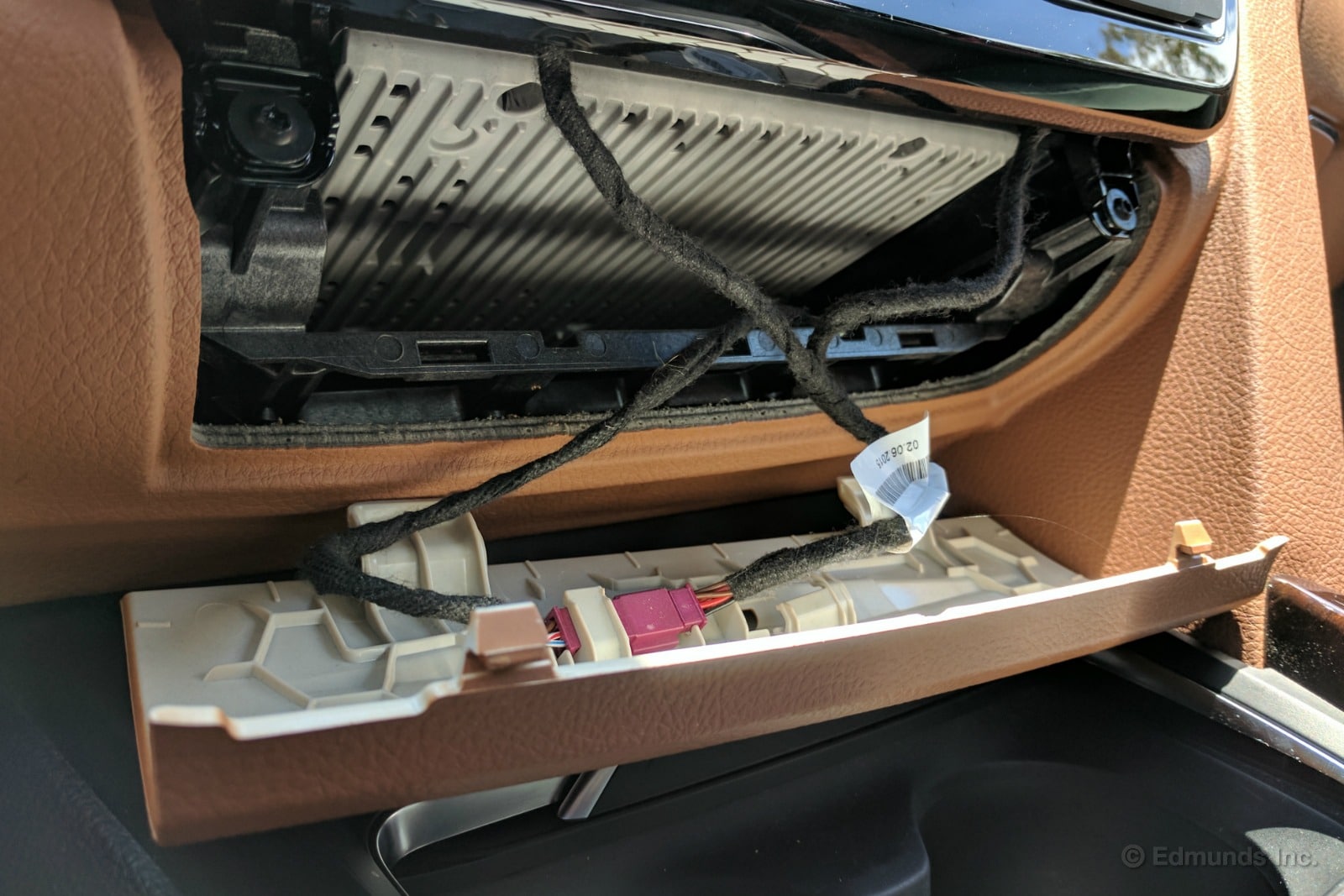
Comfort
"My relationship with driver seats is like a 2-year-old's relationship with steamed vegetables: lots of fussing and complaining. Aggressive headrests, armrests that are too low to be useful, steering wheels that don't telescope enough ... I feel a tantrum coming on. But the BMW is great. The seat is comfortable and all the adjustments are meaningful. The wheel comes out far enough, and I can actually use the armrests. The headrest doesn't force me to sit like Quasimodo. The thigh rest can be extended! And the tilt function! The tilt function doesn't just tilt the cushion, so that you wind up folded awkwardly until you can adjust the back. The whole seat, back and all, tilts as a single unit. This makes so much sense, but the Bimmer is the only car I've been in that does it." — Will Kaufman, associate automotive editor
Performance
"I think the car looks great, the interior is beautiful, and it has, or so I'm told, an incredible powerplant. The problem for me is that I didn't get to experience the powertrain magic everybody gushes over. During my commute, I got stuck in traffic both to and from the office. It's unlikely I ever got to moving faster than your average city bus. Slogging along at 25 miles per hour, I couldn't justify that kind of money knowing I'd probably be just as content in a 320i. This isn't to take away from the 340i, so please don't take this post as such. The joy the zero-to-60 time the 340i offers must be incredible, and for the folks who can actually take advantage of what this thing can do, I envy you. But if you're looking to buy this bad boy knowing you're going to spend the majority of your time looking out the windshield at the bumper of another car instead of at open road, you'd probably be just as happy in a lesser model." — Matt Jones, senior consumer advice editor
"There's this perceived general sense of security people associate with all-wheel drive, and it's something I've never understood. I don't think enough people pay attention to the downsides it brings. In the case of our 340i, it increases the turning circle by over a foot, making tight U-turns harder to execute. It adds weight and complexity to the front, blunting the handling. And you have to pay an additional $2,000 at the dealer. Now I say this with the privilege of living in perennially sunny Los Angeles, but my ideal 3 Series would be rear-drive only." — Carlos Lago
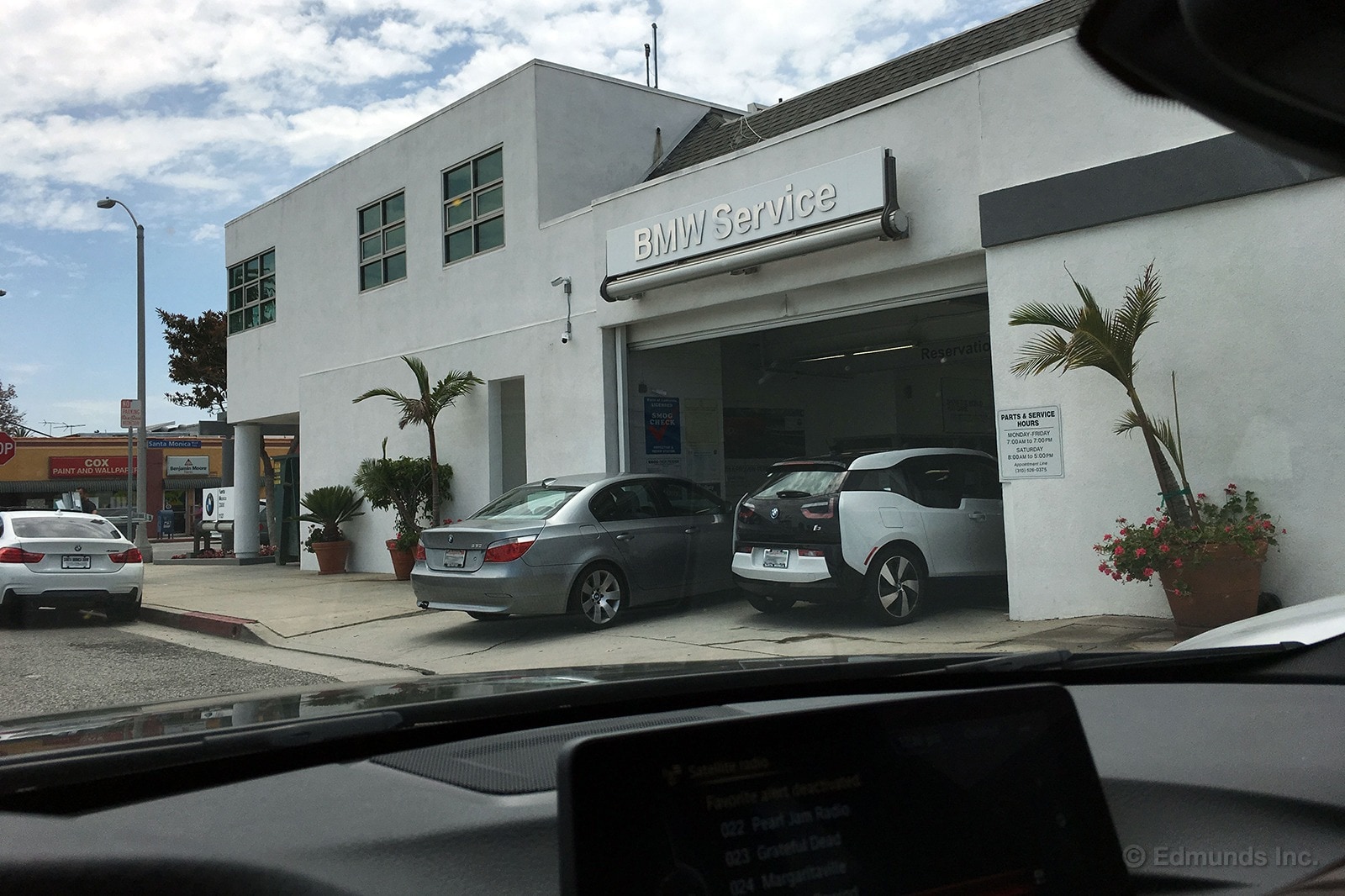
Wrap-Up
What We Got
On its surface, the 2016 BMW 340i looked much like the outgoing 2015 BMW 3 Series sedan. It was the changes underneath that got our attention and made this addition to our long-term test fleet of interest. The new, slightly more powerful engine and updates to the steering and suspension were modest but noteworthy.
We'd be borrowing this car from BMW, so after some back and forth, we decided to get the 340i, which had the 320-horsepower, turbocharged inline six-cylinder engine. Next we opted for the eight-speed automatic transmission given that's how most 3 Series sedans are equipped. Although we didn't need the extra traction, we also went with the all-wheel-drive model to see how it might fare on winter trips to the mountains.
Base MSRP for the 340i xDrive was $48,795. We tacked on a bounty of optional equipment packages: Technology ($2,750), Driver Assistance ($950), Driver Assistance Plus ($1,700), Lighting ($800) and Cold Weather ($800). Further add-ons included adaptive cruise control ($1,200), rear manual sunshades ($575), enhanced integration of Bluetooth and smartphones ($350), leather dashboard ($1,450) and its exterior Jatoba Brown Metallic paint ($550).
All in, our 2016 BMW 340i xDrive had an as-tested MSRP of $59,920. Here's how it fared during the year:
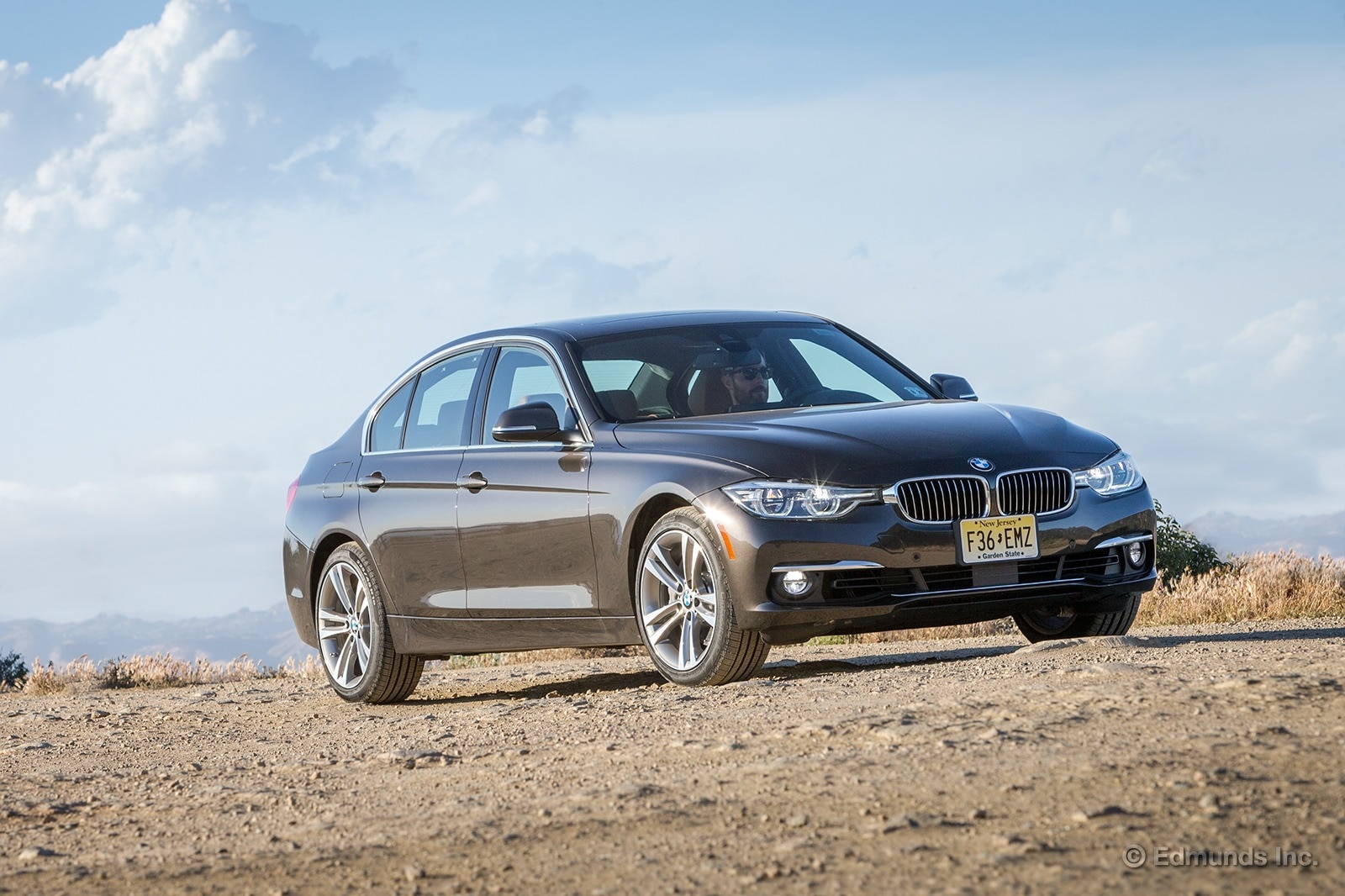
Performance
"This engine is magnificent as usual, despite being new, with peak torque created as low as 2,000 rpm and sustaining all the way to redline. The inline-six is silky smooth and is always willing to rev to its limiter. The eight-speed automatic is equally commendable, executing shifts responsively, smoothly and with virtually no slop." — Jonathan Elfalan, senior road test editor
"It's easy to forget that our 340i has well over 300 horsepower on tap. You don't hear any roar from the exhaust when it starts, and even when you get into it on the highway it remains relatively subdued. Don't let the silence fool you. This is a very fast sedan that could flat out embarrass cars boasting far bigger engines that make considerably more noise. The balance of refinement and capability is one of the things that makes this 3 Series so appealing." — Ed Hellwig, senior editor
"The steering has excellent weight and a good amount of feel from the electrically assisted steering rack. It's one of the more natural-feeling electric steering systems I've experienced in a while. Very impressed with BMW. I think it got it right with this car." — Jonathan Elfalan
MPG
"We needed a good road trip to help bring things back into balance, which is exactly what Editor Sadlier provided this month with a comfy cruise to the Pacific Northwest. The long highway stretches, combined with Sadlier's impressive display of restraint, netted us a record tank of 518.4 miles and 34.6 mpg, easily besting the EPA's 33-mpg highway estimate." — Jonathan Elfalan
"With the holidays ... I ended up keeping one vehicle for over two weeks straight. Since I'm a Los Angeles native, there weren't any epic drives to Grandma's house, just a bunch of short trips and errands in our 340i. Unsurprisingly, our 340i's lifetime average for fuel economy dropped while the car was in my care. What can I say? I like performance." — Mark Takahashi, senior writer
Comfort
"My relationship with driver seats is like a 2-year-old's relationship with steamed vegetables: lots of fussing and complaining. Aggressive headrests, armrests that are too low to be useful, steering wheels that don't telescope enough. I feel a tantrum coming on. But the BMW is great. The seat is comfortable and all the adjustments are meaningful. The wheel comes out far enough, and I can actually use the armrests. The headrest doesn't force me to sit like Quasimodo. The thigh rest can be extended. And the seat tilt function ... the Bimmer is the only car I've been in that does it." — Will Kaufman, associate staff writer

"Multiple passengers remarked on how firm the ride was, and I couldn't argue with them. I've learned not to expect a plush ride in a European sport sedan, but this borders on not good enough. It would be interesting to try non-RFTs on this car to compare. Anecdotally, I've heard BMW drivers say it's night and day, and I remember being struck by how well the E90 M3 rode on its standard non-RFTs." — Josh Sadlier, senior manager of content strategy
Cargo Space
"The trunk is not deep enough to fit two carry-on bags lengthwise. But the space is tall enough to fit both if one is loaded at an angle. Overall the cargo area measures roughly 34 inches deep by 38 inches wide at the wheelwells." — Mike Schmidt, senior manager of vehicle testing operations
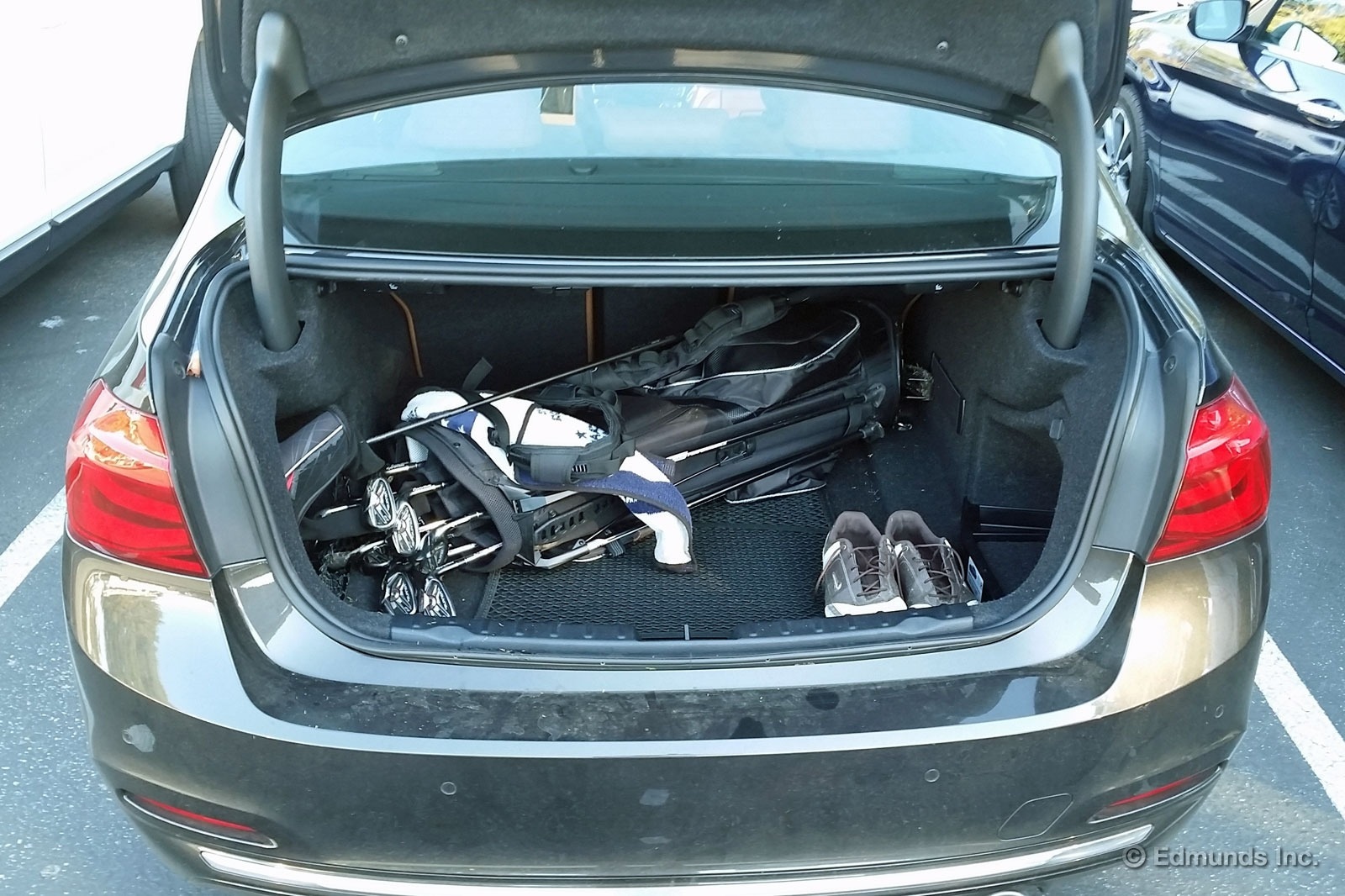
"I expected more golf-bag-friendliness from this generously proportioned 3 Series. Two lightweight bags barely fit in the trunk, and we had to take the driver out of one of them. Maybe there's a better way to Tetris them in there, but given that this 3 Series approximates the size of 5 Series past, I figured a couple of bags would be a breeze. Not so much." — Josh Sadlier
Interior
"I hopped in the 340i Saturday morning and found a small part of the dash sitting on the cupholder. I first thought someone had broken into the car, but there were no other signs of damage. Plus, all the wires on the dash trim were still connected. It'd simply fallen out. None of the tabs on the piece looked broken, so I slid it back into place. The next morning, the same problem: The trim piece was sitting on the cupholder again. Curiously, on the morning after that, the trim piece stayed attached. Let's hope it stays like that." — Carlos Lago, senior writer
"This will sound odd, but I've often appreciated the way BMW does sun visors, and the 340i is no exception. There's a lot of resistance to motion, and this is good. It means the visor (when in the side window position) doesn't swing around and hit me in the face when making moderately spirited left turns." — Jason Kavanagh, senior road test engineer
Audio and Technology
"Is this BMW's idea of helpful traffic information? There's way too much data crammed onto the navigation screen. You can't see the difference between the highway traffic and the surface streets. It's a mess and far from helpful. It should default to highway traffic only and make the streets a different color. Otherwise it's just a maze of colorful lines that mean nothing." — Ed Hellwig
"Although the 3 Series is showing its age, the modern tech is all there. During my 200 miles with the car, I became very familiar with the radar cruise control and real-time traffic display on the navigation screen, as many of the miles were spent in bumper-to-bumper traffic going down to visit family and run errands in Orange County. On top of the iDrive controller is a small touchpad surface, and I found myself writing the letters to find destinations and input addresses far more often than using the scroll wheel to make selections. The iDrive system reads back the letters to you, so you can legitimately enter text without looking at the display." — Calvin Kim, road test editor
Maintenance
"When I brought our 340i in for a oil change service back in August, the dealership wasn't able to reset the car's oil change indicator. A diagnosis eventually led to the discovery that our car's oil level sensor was defective. At the time, though, the dealership didn't have the part (it had to be special-ordered from Germany)." — Brent Romans, senior editor
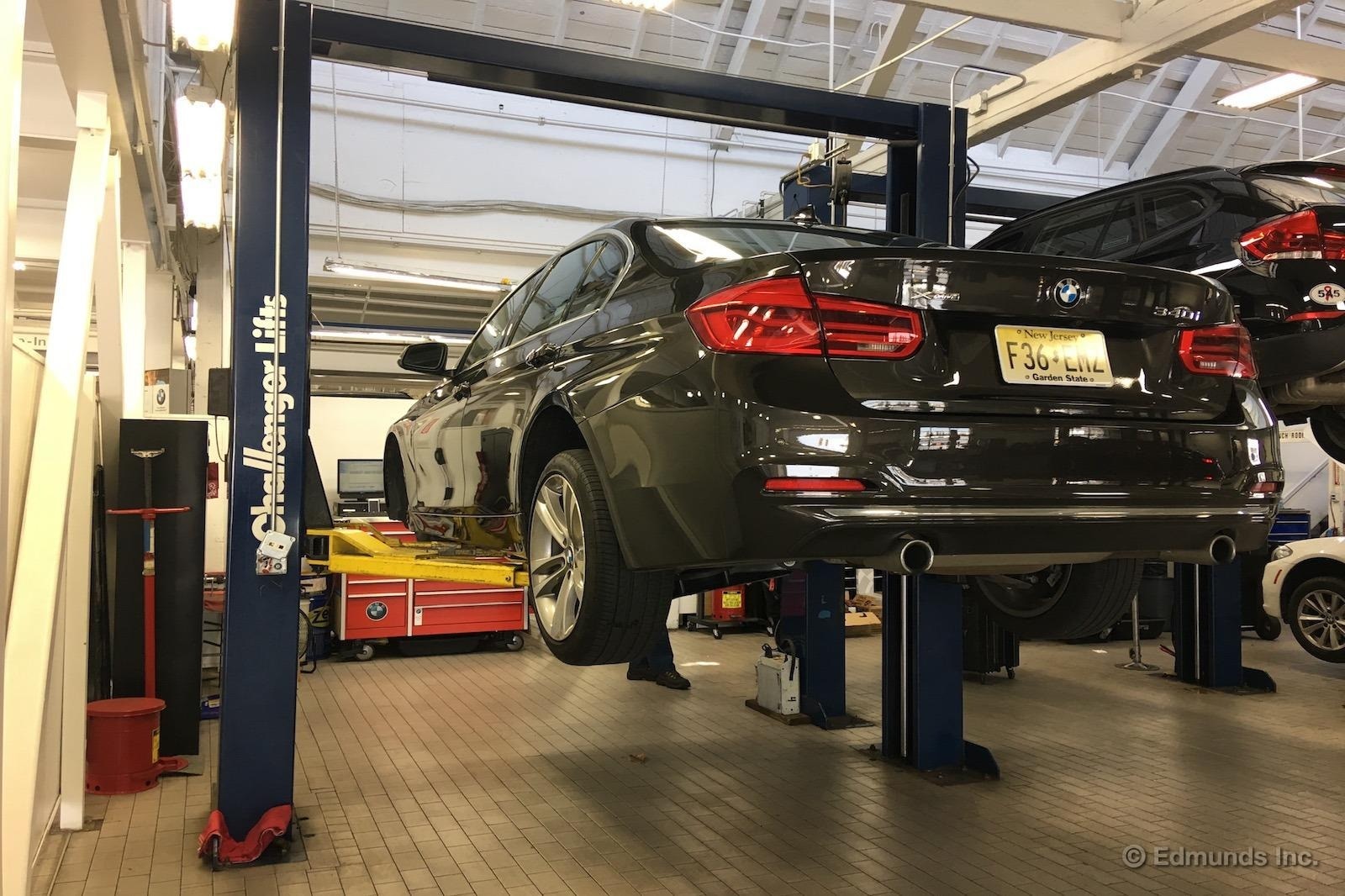
"Outside ... I crossed paths with my service adviser, who I thanked in passing. While in stride he turned to me, cracked his first smile, shot double finger guns at me and said, 'Thanks! And if you see a survey remember to give me all 10s!' He continued out of view behind a car then shouted, 'Text me if there are any problems!'" — Michael Massey, vehicle testing assistant
Miscellaneous
"I maintain that it's too large — this 3 Series is a great 5 Series — but that's been the case for years now. And I lament the loss of civilization's best-ever cruise control interface: the BMW stalk. The 340i's steering-wheel-mounted buttons are more fiddly than the now-extinct stalk (pour a little out), though the actual control-of-cruising itself is quite good." — Jason Kavanagh
"Eco Pro mode has a function that allows you to coast like you would in a manual, where neutral is easily accessible. It's very intuitive and makes negotiating midspeed traffic much easier. But for sitting in summer traffic, I'd want to reconfigure Eco Pro to allow for full A/C." — Will Kaufman
Maintenance & Repairs
Regular Maintenance:
The 3 Series requested routine service at roughly 10,000-mile intervals. And since all 2016 models carried BMW's four-year/50,000-mile free maintenance plan, we paid nothing for these oil changes.
Service Campaigns:
Our car was part of two recalls during our test. During one scheduled dealer visit, we addressed an open campaign (service bulletin #12-43-15) to reprogram the engine control unit. It was at this same time, upon learning that the oil meter would not reset, when parts were ordered to replace a faulty oil level sensor.
Some expenses fell outside warranty coverage. When a suspected pothole impact left an ominous bulge in one of our front tires, it was time to break out the wallet. The damaged tire had to go. We also replaced the opposing tire for all-wheel-drive symmetry and because the car was returning to BMW soon. Finally, we felt it prudent to check the alignment. It was OK. But this string of events cost us almost $900.
Fuel Economy and Resale Value
Observed Fuel Economy:
The combined EPA fuel estimate for the all-wheel-drive 340i is 25 mpg (22 city/32 highway). After 23,000 miles, we averaged 23.5 mpg with a single best mark of 34.6 mpg. Our best range on a single tank of the required premium fuel was 518.4 miles.
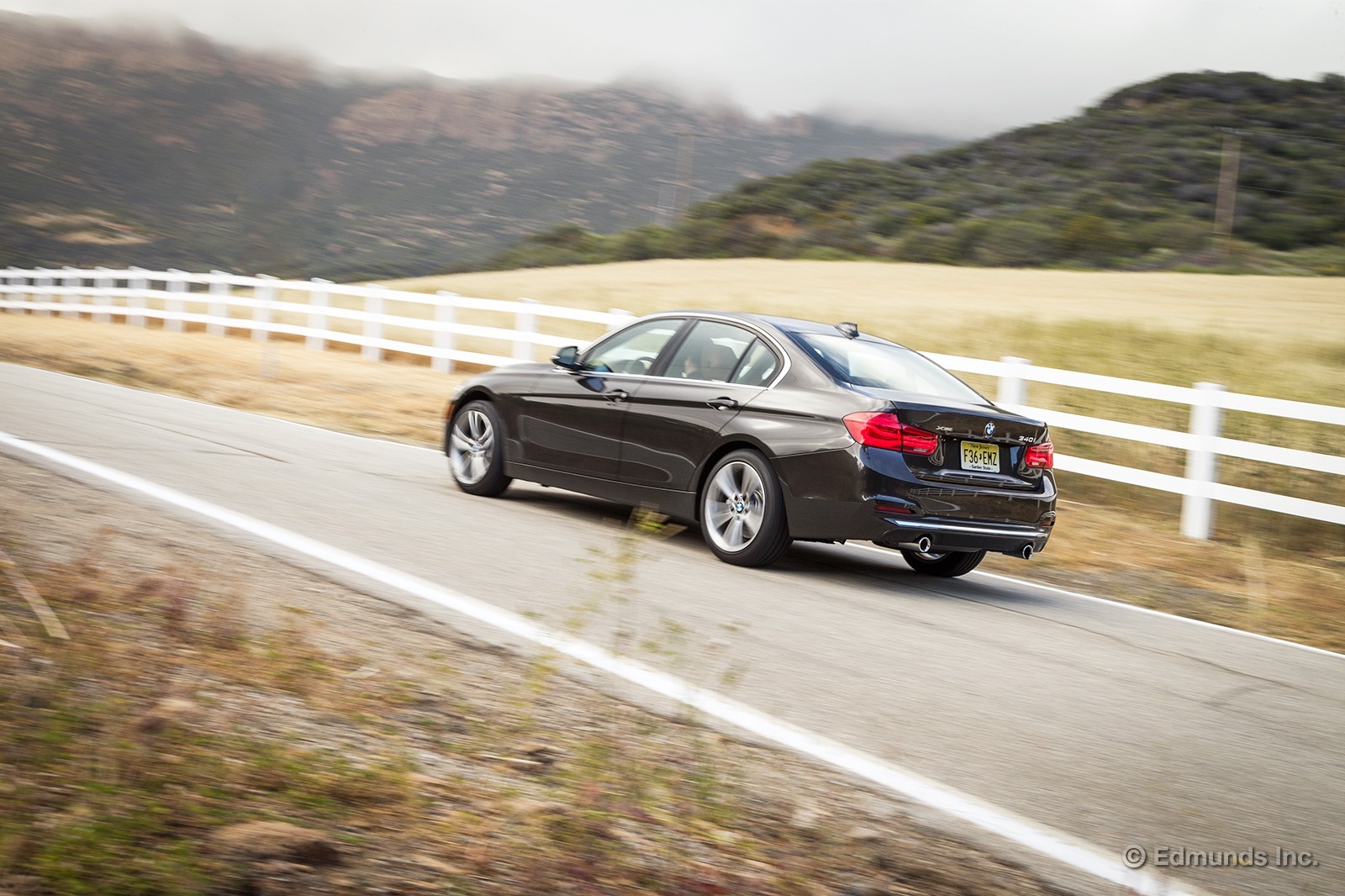
Resale and Depreciation:
Our well-equipped 340i had an MSRP of $59,920. Its long list of optional equipment put it at a disadvantage in the resale market. Based on a private-party sale, Edmunds TMV Calculator valued the BMW at $37,325 at the conclusion of our test. This reflects a 38 percent depreciation from its original MSRP. By comparison, our similarly option-heavy 2014 BMW 3 Series Gran Turismo depreciated 34 percent.
Summing Up
Pros:
Best-in-class engine and handling prowess. Many useful technology features. Capable of single-tank fuel range over 500 miles. Free scheduled maintenance. Easy to find a comfortable driving position.
Cons:
Fuel economy suffers from its fun-to-drive nature. Ride is firm on typical city streets. Some tech features can be better executed. We experienced a couple of build quality issues.
Bottom Line:
The 3 Series sedan is still a benchmark in its segment. It offers exceptional performance, sharp handling and responsive steering. If you're willing to put up with its firm ride and average-size trunk, you'll love the way this sport sedan feels every time you drive it.
| Total Body Repair Costs: | None |
| Total Routine Maintenance Costs: | None (over 13 months) |
| Additional Maintenance Costs: | $897.59 |
| Warranty Repairs: | Program engine control unit per service bulletin #12-43-15; replace faulty oil level sensor |
| Non-Warranty Repairs: | Replace two tires; perform wheel alignment |
| Scheduled Dealer Visits: | 2 |
| Unscheduled Dealer Visits: | 2 |
| Days Out of Service: | None |
| Breakdowns Stranding Driver: | None |
| Best Fuel Economy: | 34.6 mpg |
| Worst Fuel Economy: | 13 mpg |
| Average Fuel Economy: | 23.5 mpg |
| Best Range: | 518.4 miles |
| True Market Value at service end: | $37,325 |
| Depreciation: | $22,595 (38% of original MSRP) |
| Final Odometer Reading: | 23,897 miles |
The manufacturer provided Edmunds this vehicle for the purposes of evaluation.